I took a ferry then a bus from Con Dao to Can Tho, all of which was arranged by my incredible guesthouse host on the island! It was a long travel day, with swells that almost crested at the second floor windows on the boat (you would’ve hated it, mom), but people were so kind and willing to point me in the right direction along the way.
In Can Tho, I stayed about 20 minutes outside of the downtown area, at Can Tho Riverside Hostel, which was situated right on Sông Binh Thủy, one of the rivers of the Mekong Delta. I love to learn about recent history, specifically war history, so it was incredible to spend time on the rivers and see the same dense jungles that solders saw and fought in 50 years ago.
The first night, I got in later in the evening and it was absolutely dumping rain, so a lad from England and I decided to Grab order Pizza Hut (because he was craving pizza but was too much of a wuss to order it alone since our hostel also had dinner options, and he didn’t want to offend the sweet owner). In classic Vietnamese fashion, most of the Pizza Hut options consisted of seafood AND meat on top, but I managed to secure the sole veggie option on the menu (and didn’t hate the mushrooms!)
Day 4 (June 11)
Fortunately, the hostel rented out motorbikes, so I secured one first thing in the morning and headed out to Bình Thủy Ancient House.
Bình Thủy Ancient House
It was just a short drive down the lane and across the river. It was definitely not what I was anticipating, but it was still cool to see all the same! I think that someone interested in architecture or antiques would have appreciated it more.
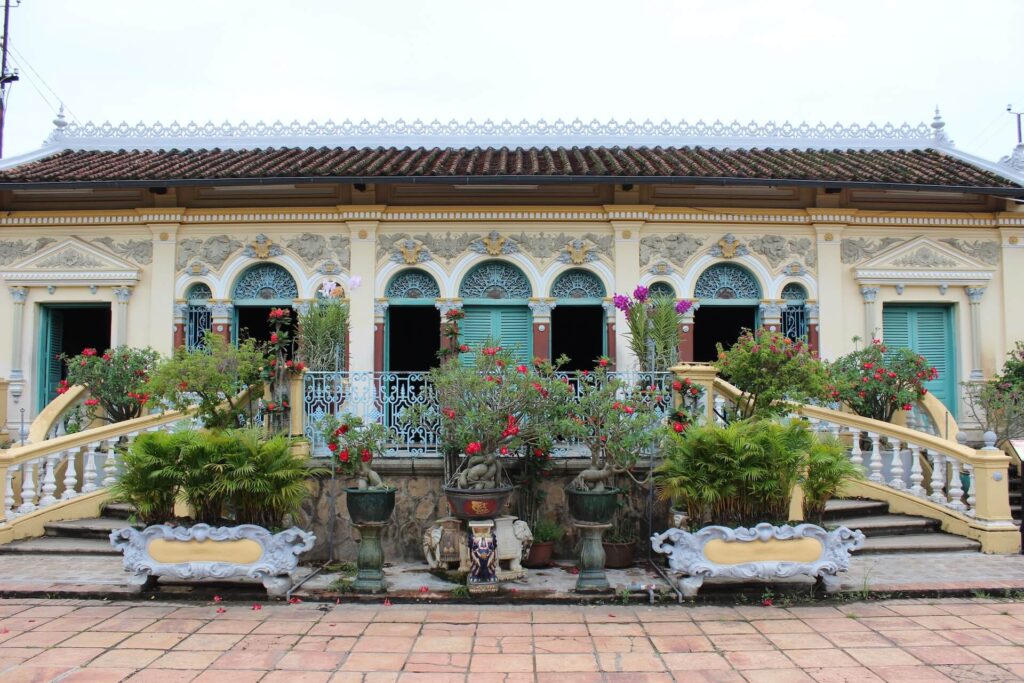
That being said, the gardens were gorgeous, and I spent most of my time exploring the small but flourishing grounds around the house.
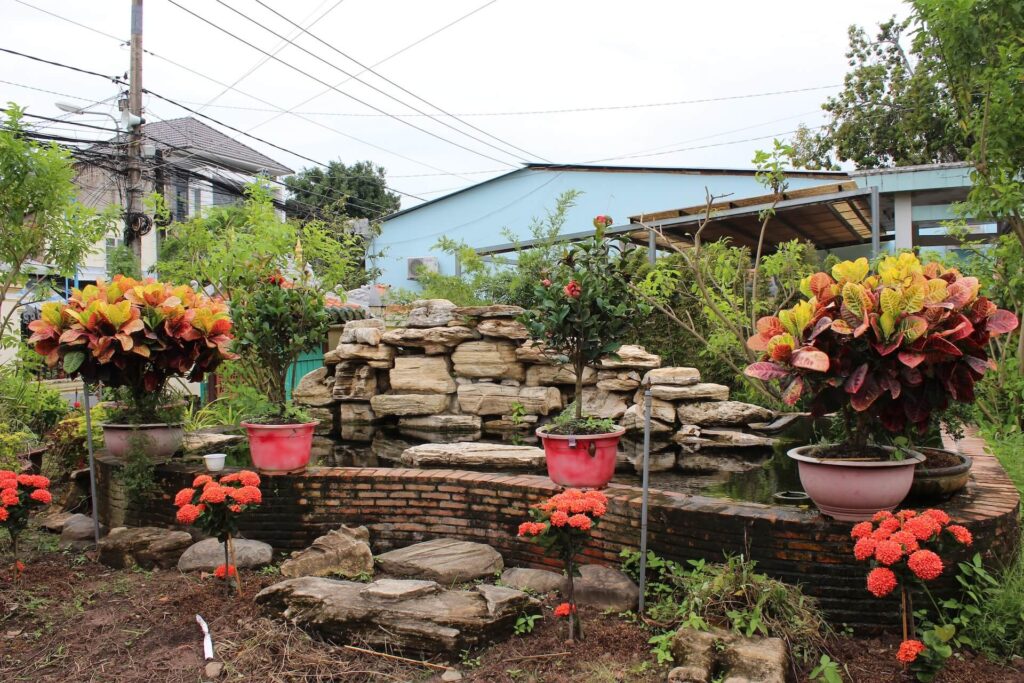
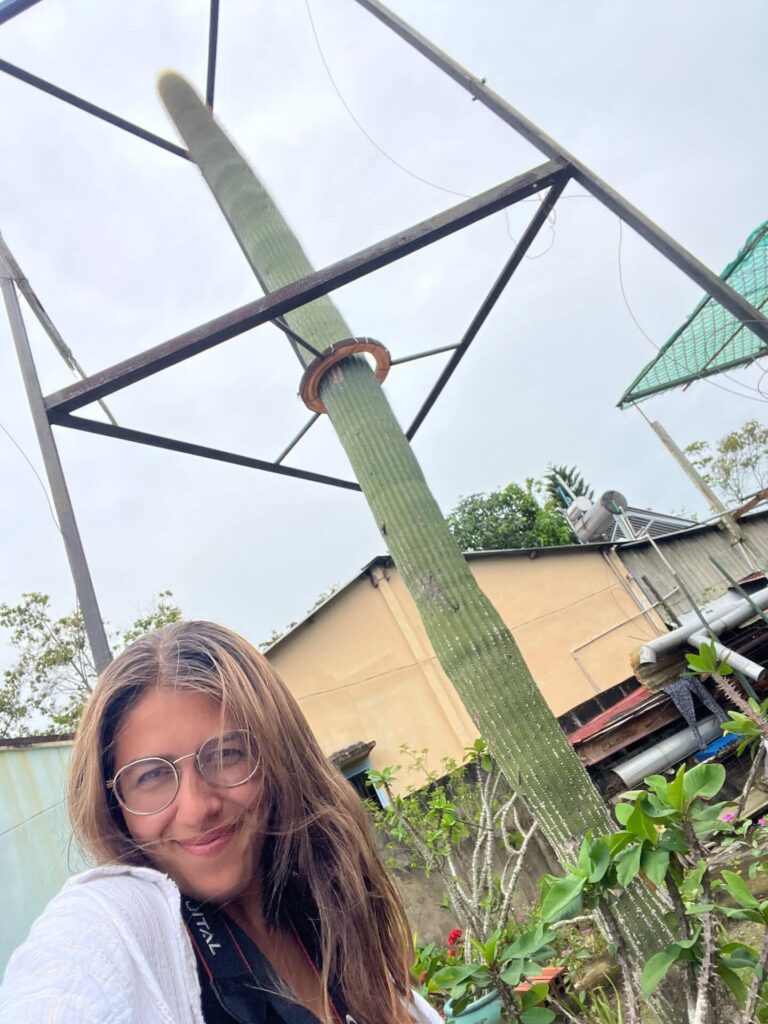
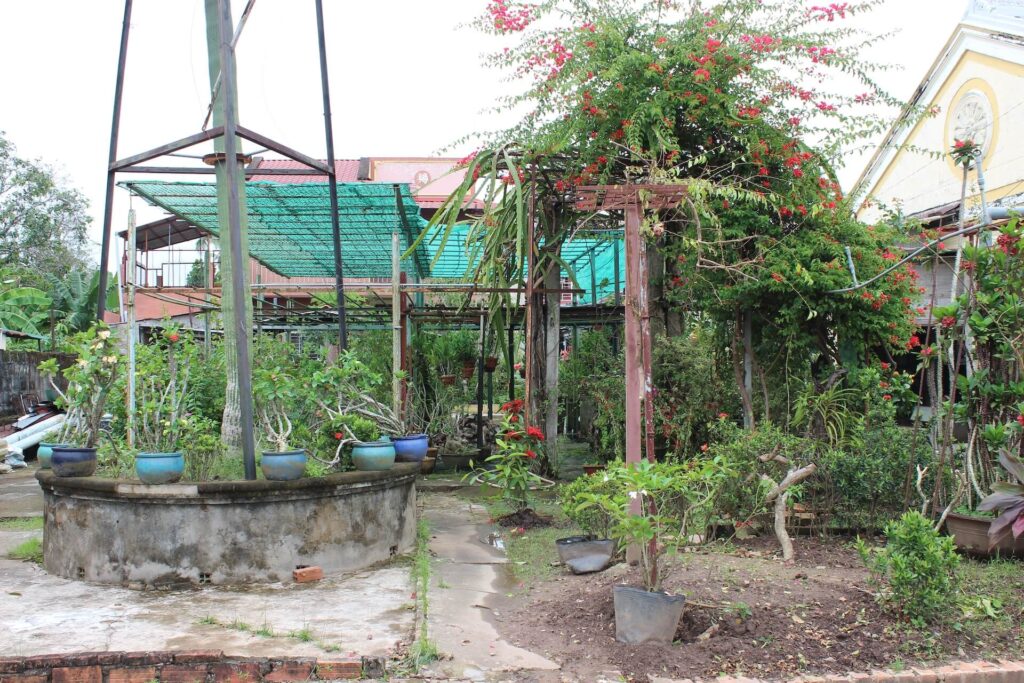
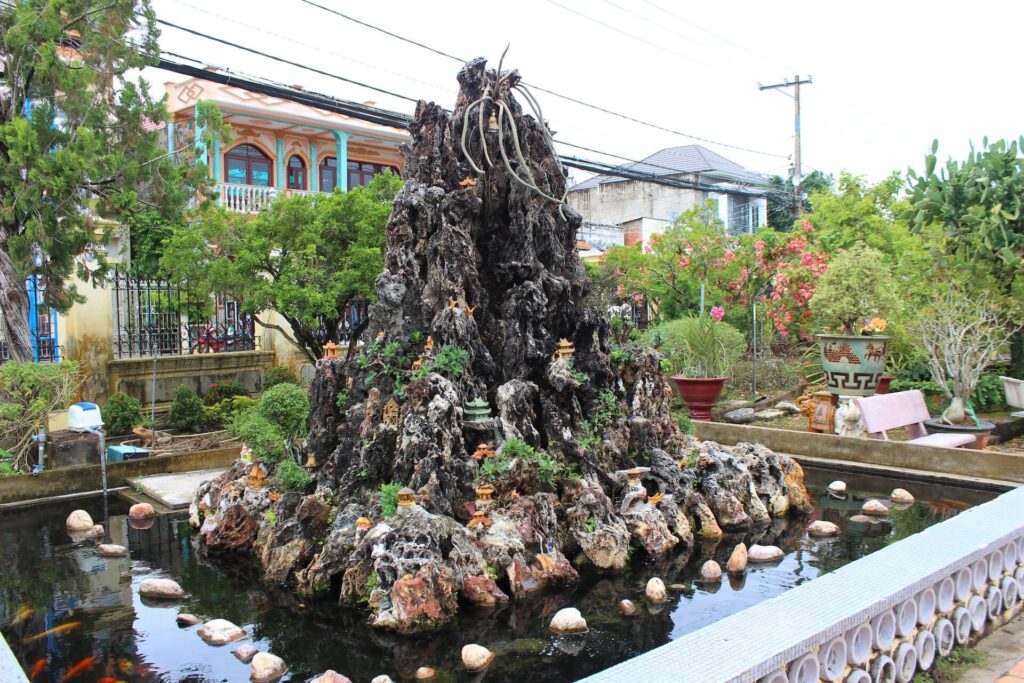
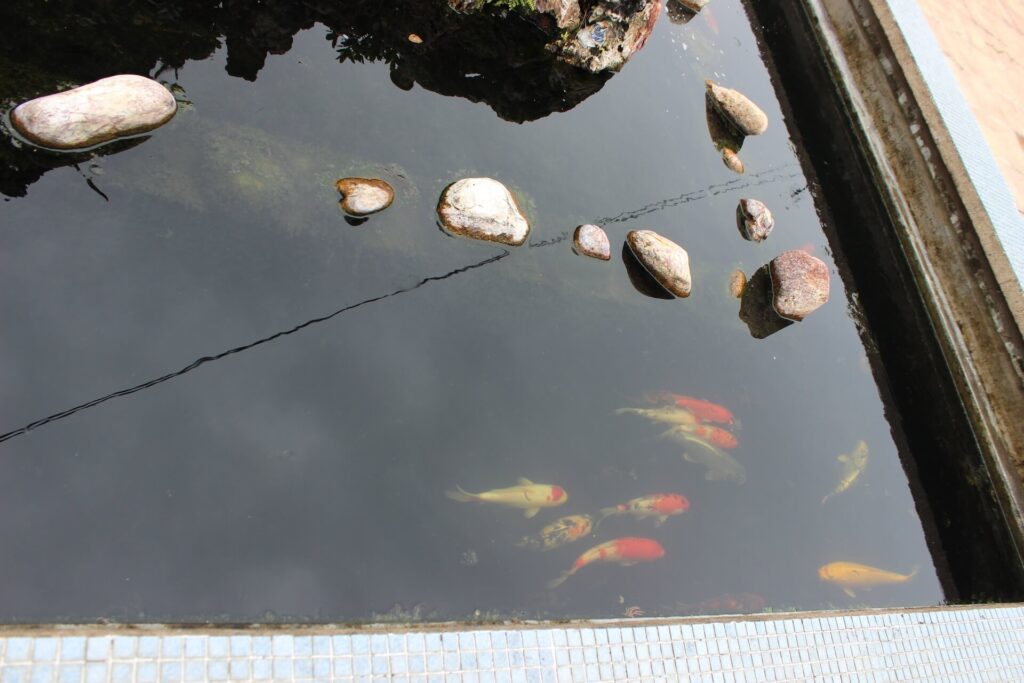
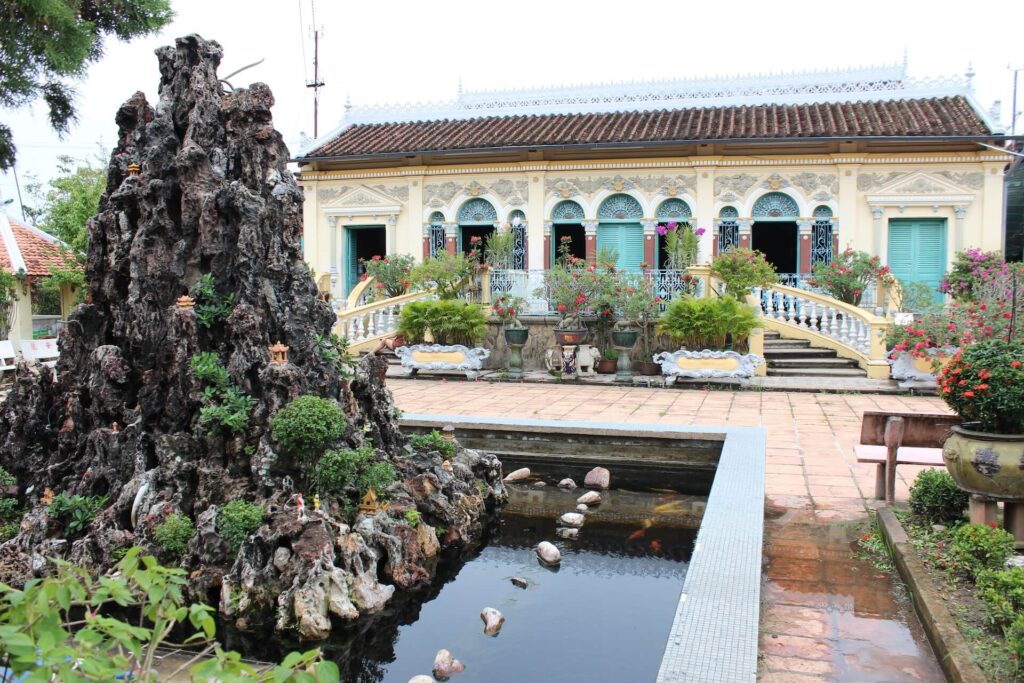
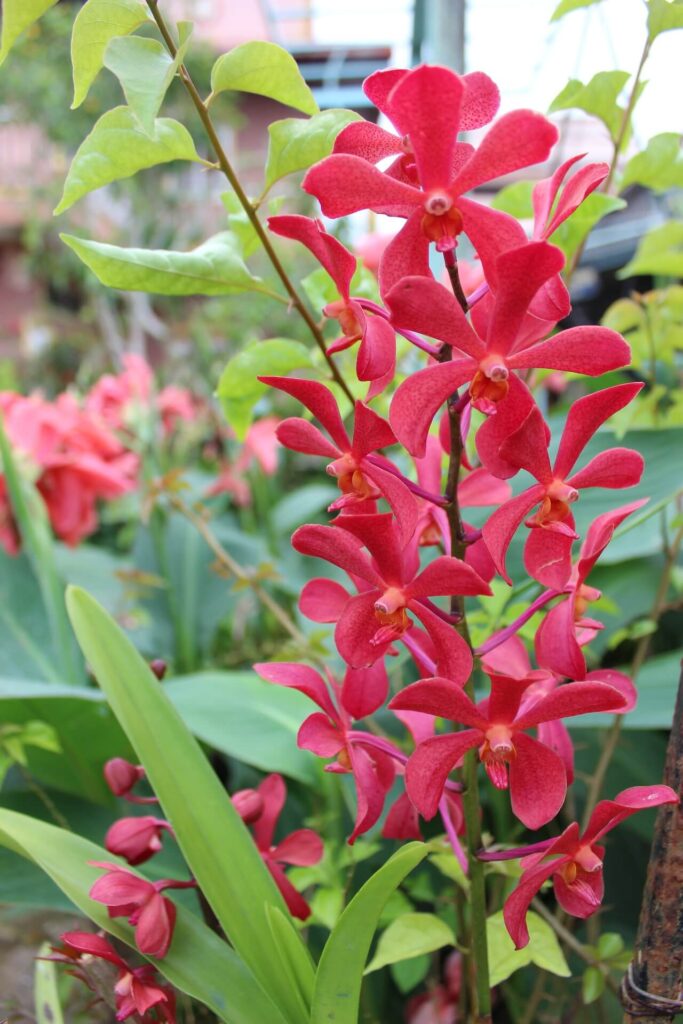
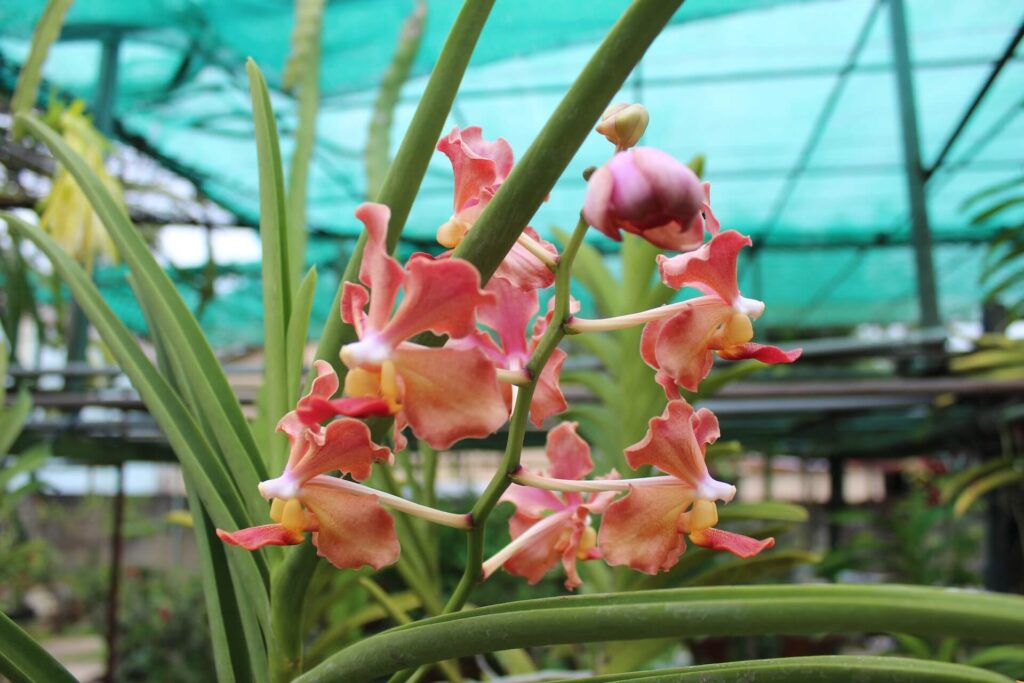
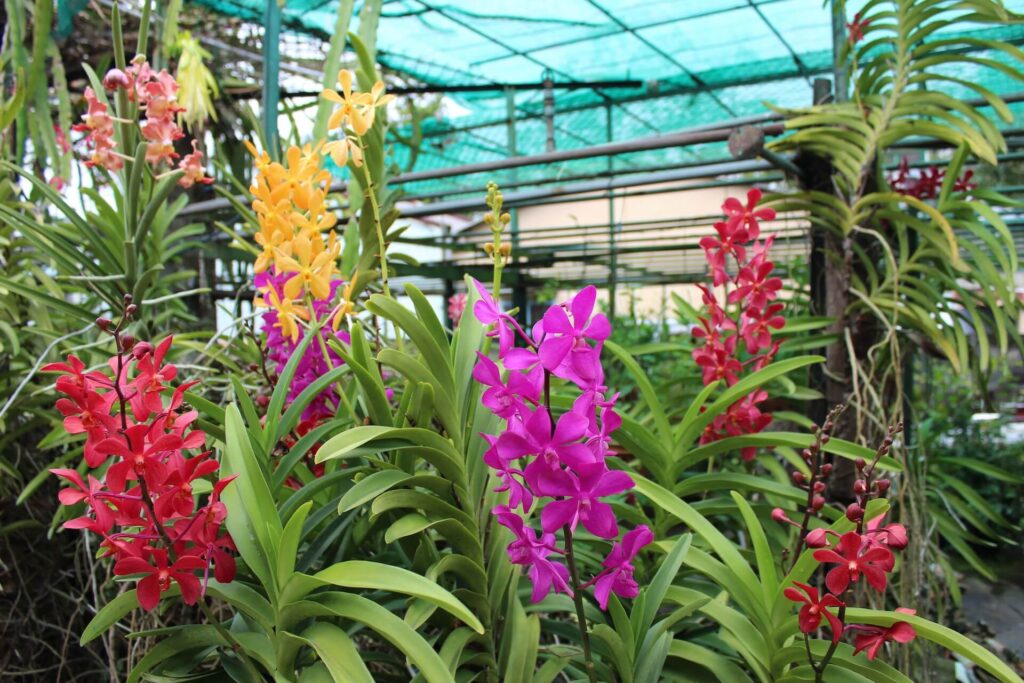
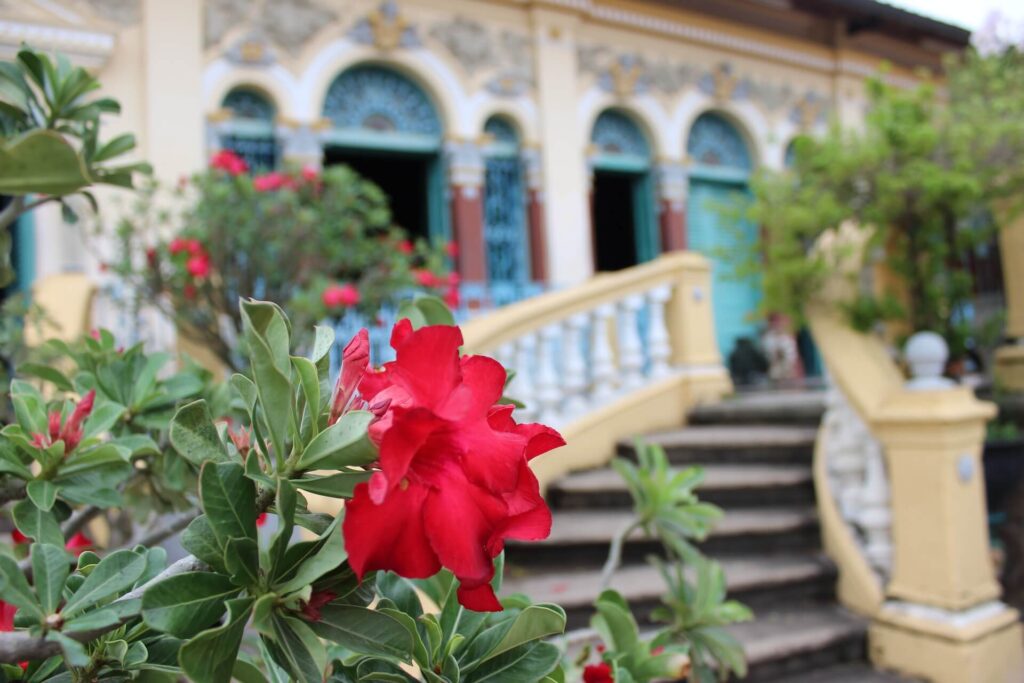
The interior of the house held a lot of probably very valuable collectibles, but I wish there had been a little more information available on the antiques and the house itself. There were no plaques or pamphlets, so I took in the beauty of the items and the home without understanding the full story behind them. That said, I snapped pictures of the ones that I particularly admired.
Motorbike Exploration
After the house, I rode my motorbike out into the countryside a ways. The woman at the hostel had given me some suggestions on which direction to head and which roads may have some good views. I took off in that direction and then made the route entirely my own. Every time I saw a cool looking alley or path, I headed down it, until I was ready to go home and mapped my route back (which wound up being over an hour). The whole excursion was probably around three to four hours, but I was having so much fun exploring, the time flew. I also took an obscene number of photos.
The last two pictures capture the roads I encountered as I rejoined civilization; although, even the back country roads were decently well trafficked.
Along the way, I made some friends! The lovely humans at the fruit stand sold me such a large quantity of bananas, rambutans, and lychee for under $2 and had such a laugh communicating with me via hand gestures. They even threw in some extra for me and posed for a photo with their durian.
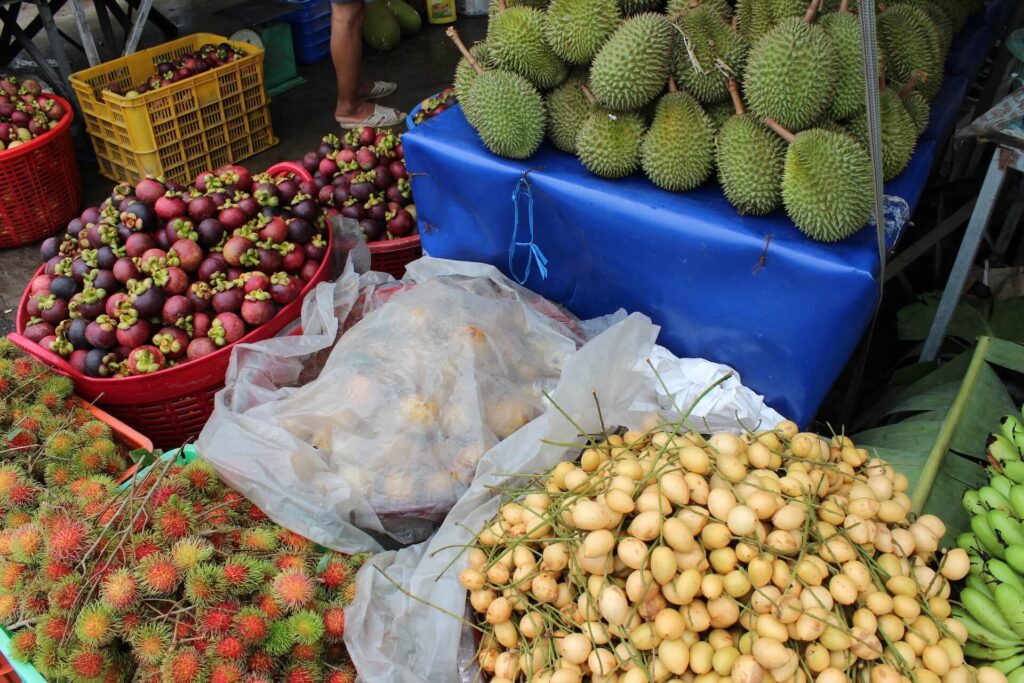
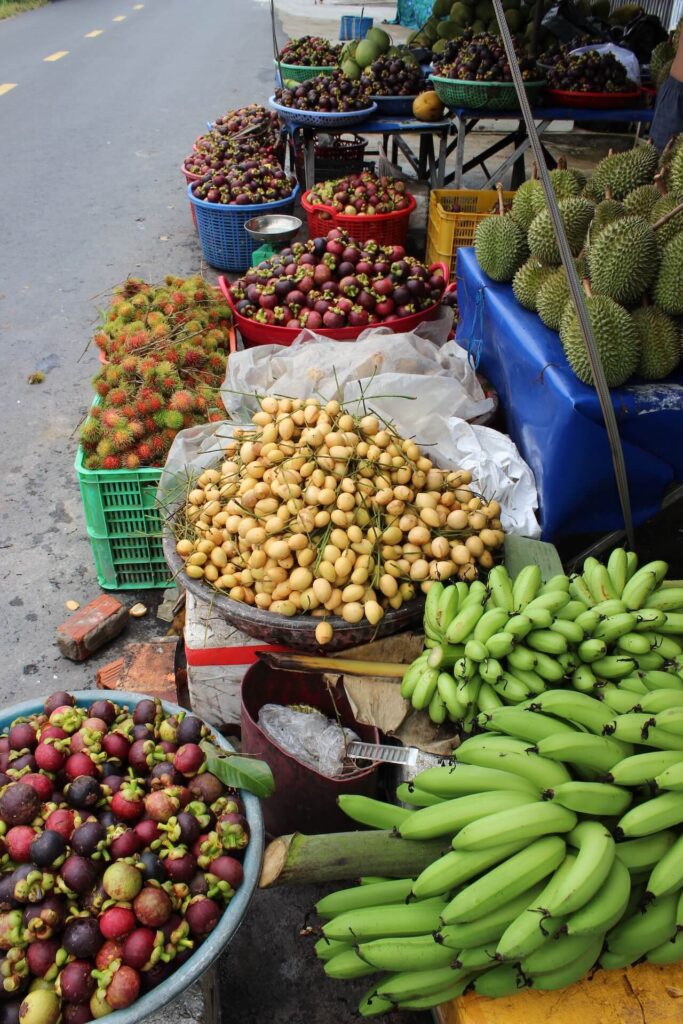
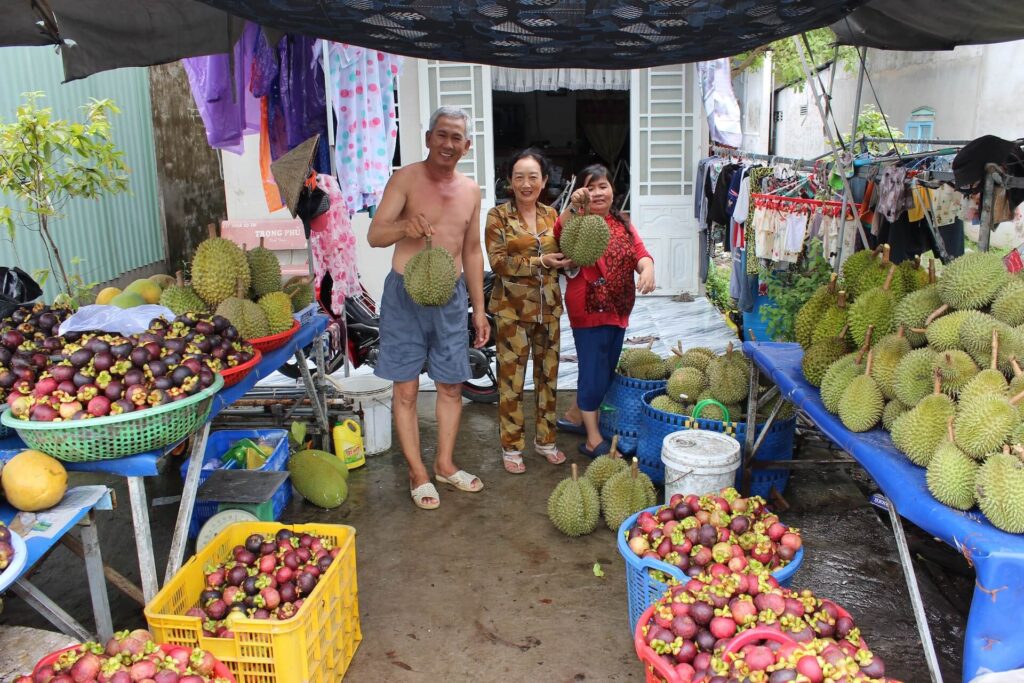
I tried to bookmark their address, so it was in that general area if you ever find yourself in rural Southern Vietnam and in the mood for some fruit!
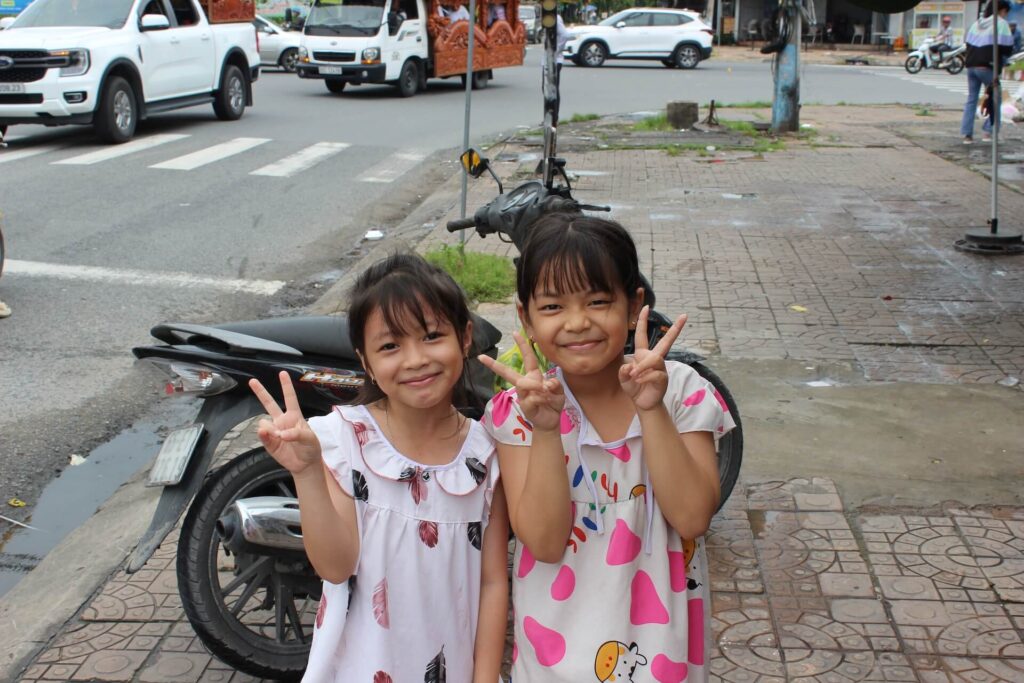
I love how eager everyone I have met is to have their photo taken when they see the camera around my neck. They all tend to point and then quickly pose when I agree. Even the workers in the fields who I have photographed will often look up and take a pause to smile or wave for the camera.
Khám Lớn Cần Thơ (Can Tho Prison)
In the afternoon, I headed into Can Tho to see some of the sites within the city bounds, including Can Tho Historic Prison.
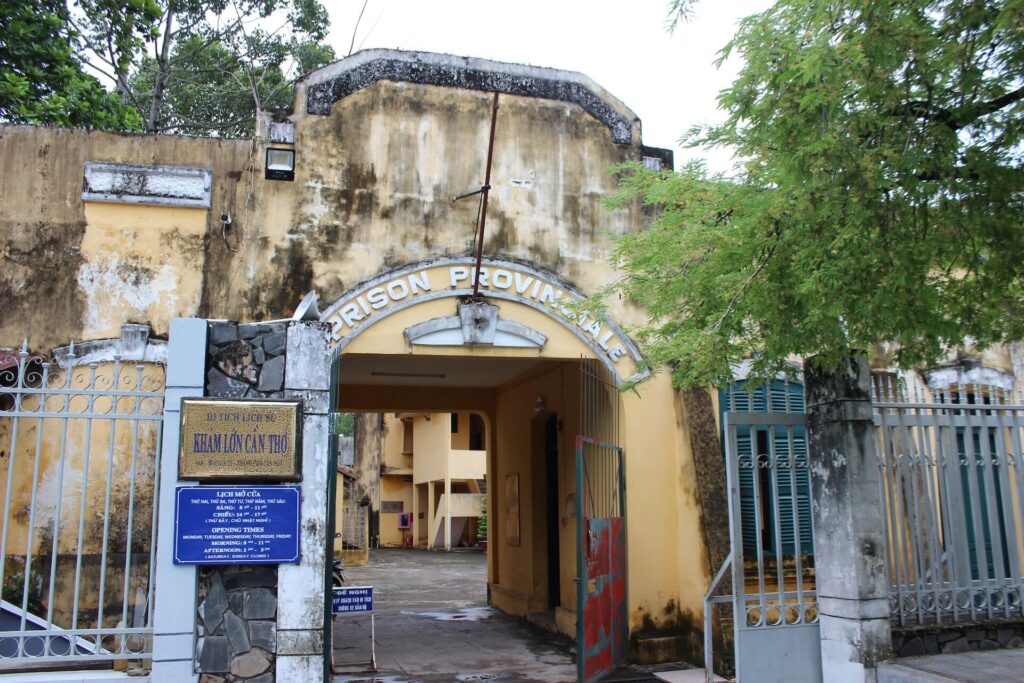
The original name of the prison when it was created by French Colonialists in 1886 was “Prison Provinciale” while all the locals called it “Grand Prison”. Its original purpose was to repress the patriotic movement and detain revolutionary fighters in the western region of the country. After 1954, the prison became “The Center for Re-Educating Men” until 1975 when South Vietnam was overthrown.
The prison consists of 21 cells that were designed to house 30–35 prisoners total, although there were up to 150 at times. There was also the supervisor’s house, a church, pagoda, and kitchen area. Oftentimes, the prisoners sent to Can Tho Prison were sentenced to death for their actions against the various governments, with some being as young as fourteen.
Chùa Phật Học (Buddhist Temple)
After the prison, I decided to check out some of the temples in the city center and started with Chua Phat Hoc.
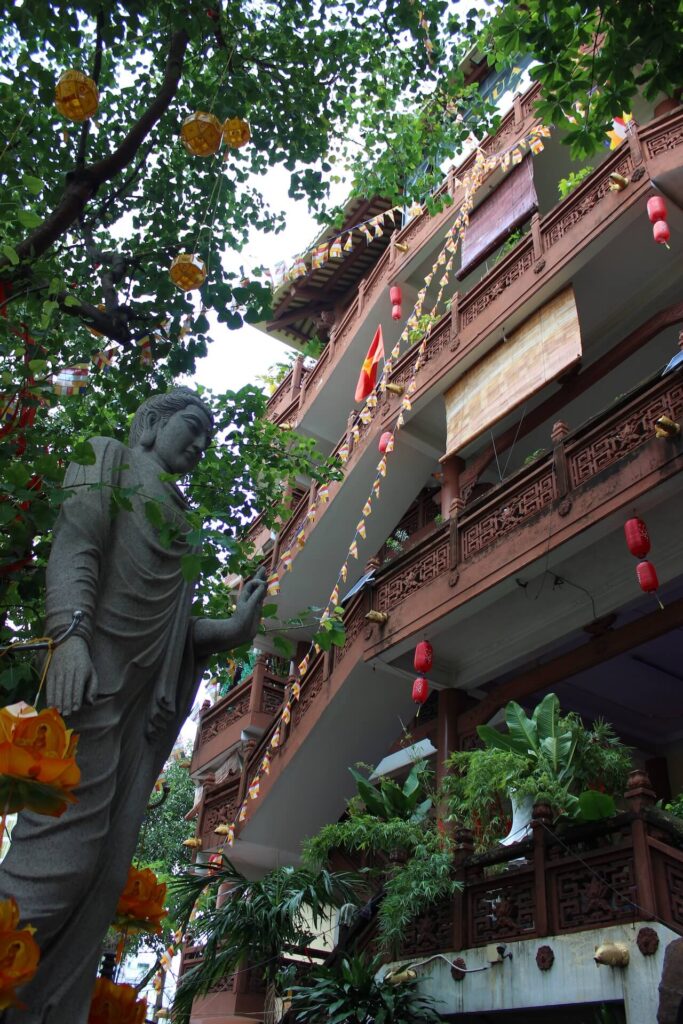
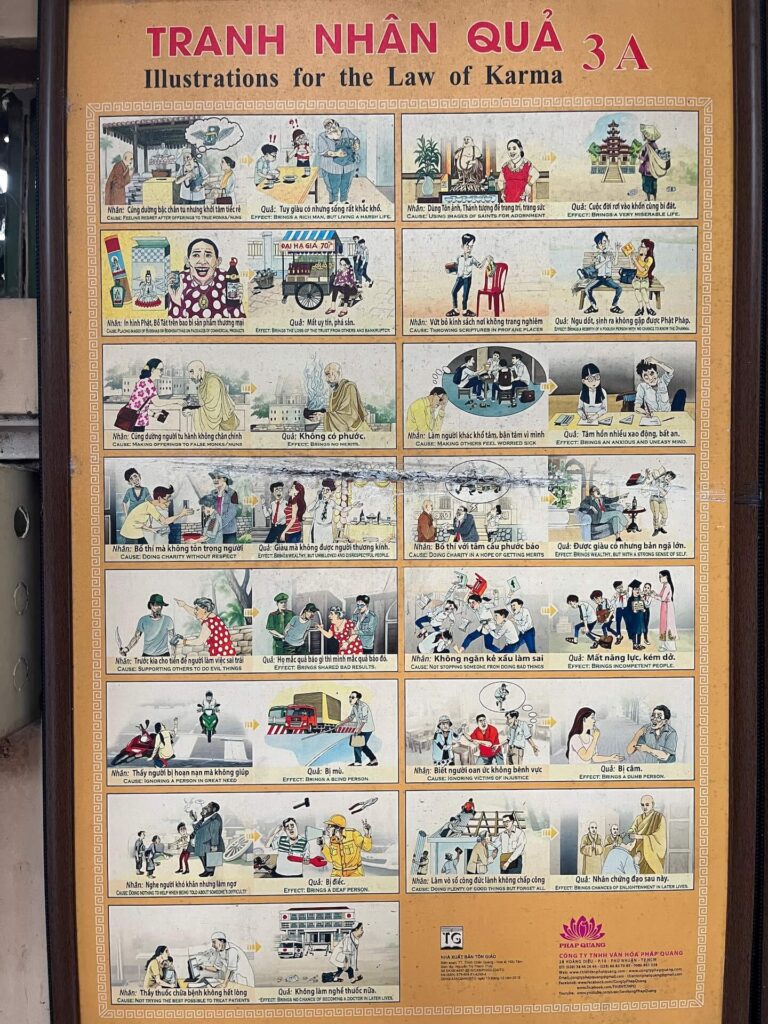
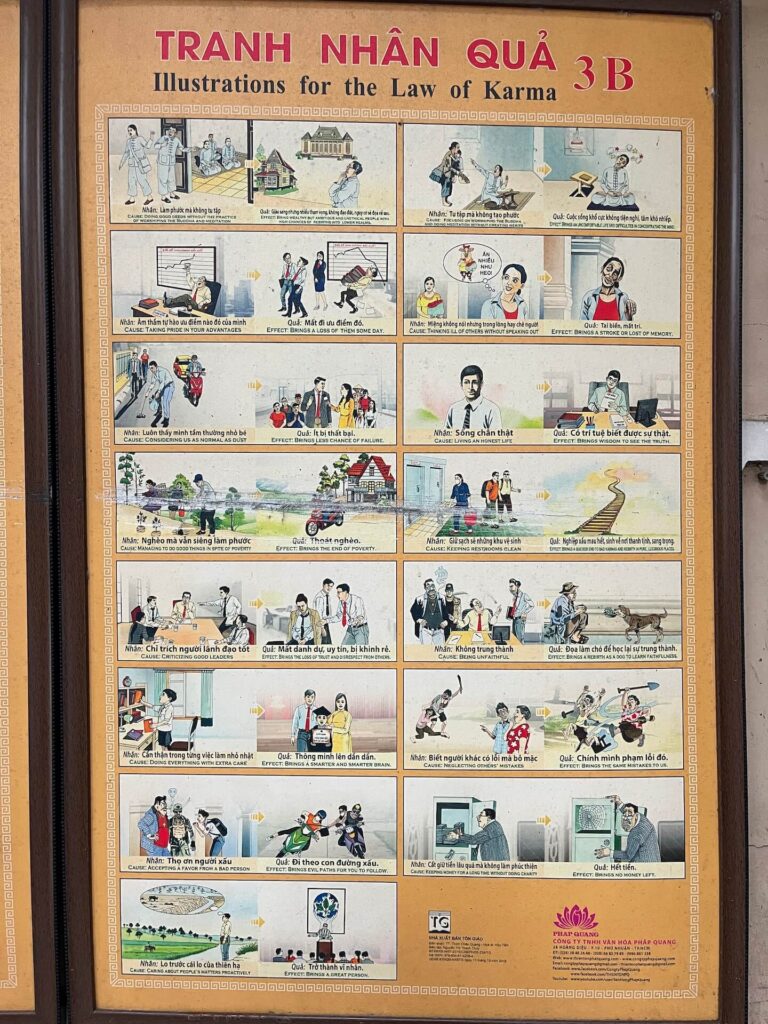
The temple was beautiful, with a different, beautifully made altar (or two) on each floor for worshipping Buddha. There were two adorable cats living on the top floor, enjoying the plush carpet with their kneading, but they were too shy for me to pet them. Because of Chua Phat Hoc’s height, it also offered incredible views of the city and Munirensay Temple across the street — my next stop.
Chùa Khmer Muni-Ransay (Munirensay Khmer Temple)
Because of the Mekong Delta’s proximity to Cambodia and its once existence within the Khmer Empire, there is quite a lot of Khmer influence in the architecture, religion, and cuisine. This wound up being the first of many Khmer-influenced temples I would see over my next week in the Mekong.
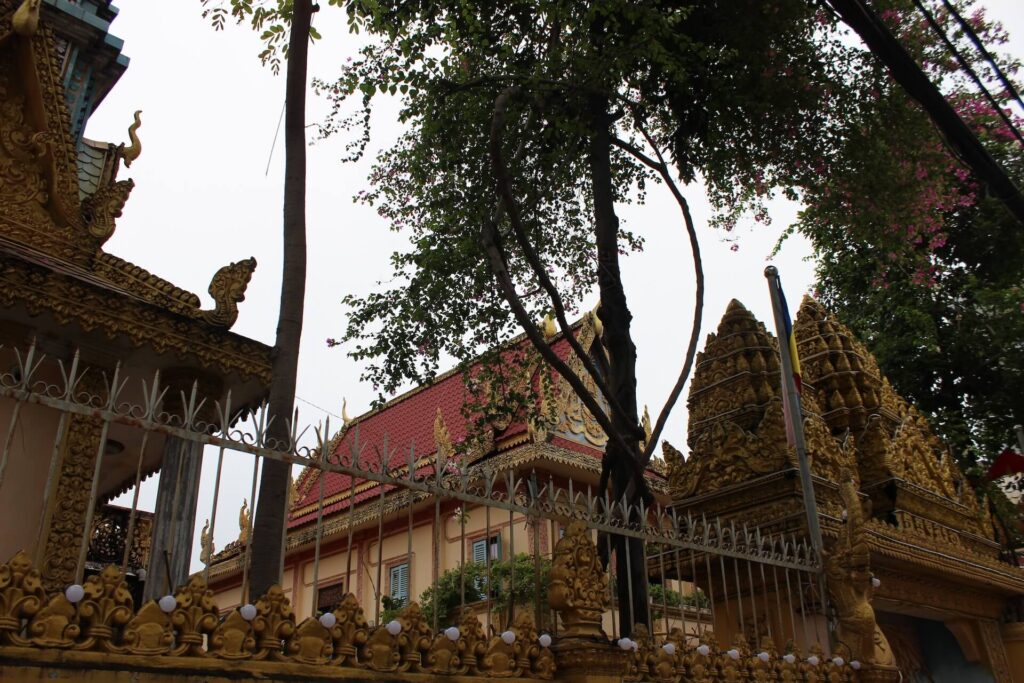
At this temple, there were practicing monks going about their daily lives, cleaning their motorbikes and eating dinner. I was the only person on the grounds admiring the building, so I took my cues from an old man sitting in the courtyard who gestured to the areas available for my exploration and assured me with a head nod that shoes could stay on in said areas. Just one of many people who have shown me kindness in helping me navigate unknown situations even with a language barrier.
Leaving Munirensay, I spotted a little banh mi stand across the street (by Chua Phat Hoc) with “chay” (vegetarian in Vietnamese) on the front, so I decided to give it a try. It was SO good—exceeded all expectations and only cost me 57¢. I couldn’t begin to tell you the ingredients, but two weeks later, it is still the best banh mi I have had by far.
Bến Ninh Kiều (Ninh Kieu Wharf)
After the temples, I scooted over to the riverfront. There is a night market there, as well as a temple, Ho Chi Minh statue, and waterfront park. There are obviously tons of souvenir and craft shops given how popular the area is with tourists, but I was mostly there for the night market.
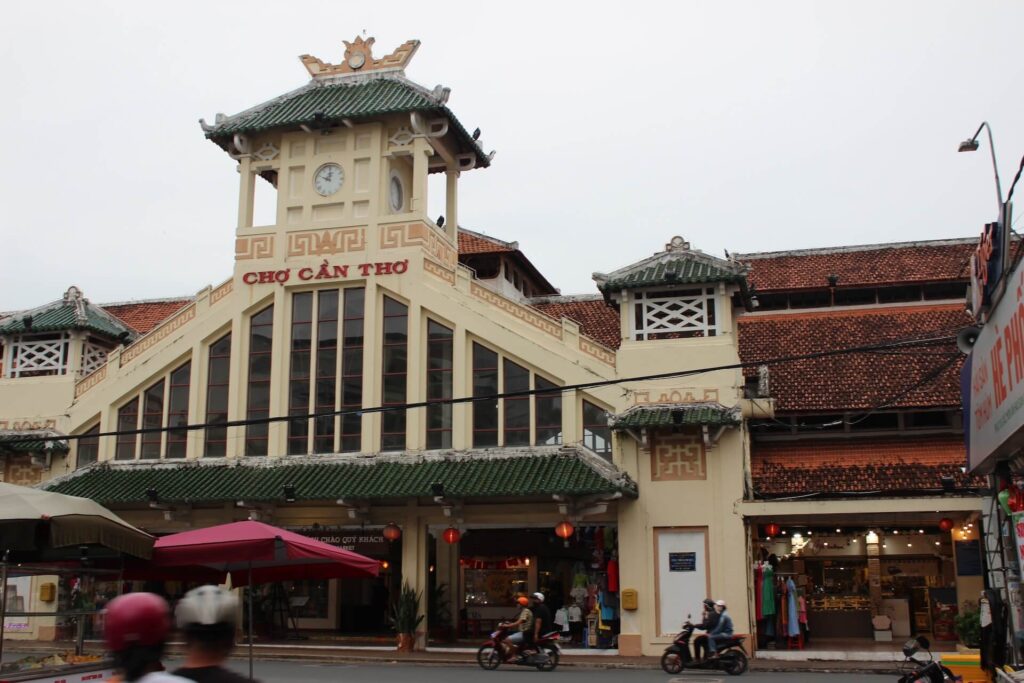
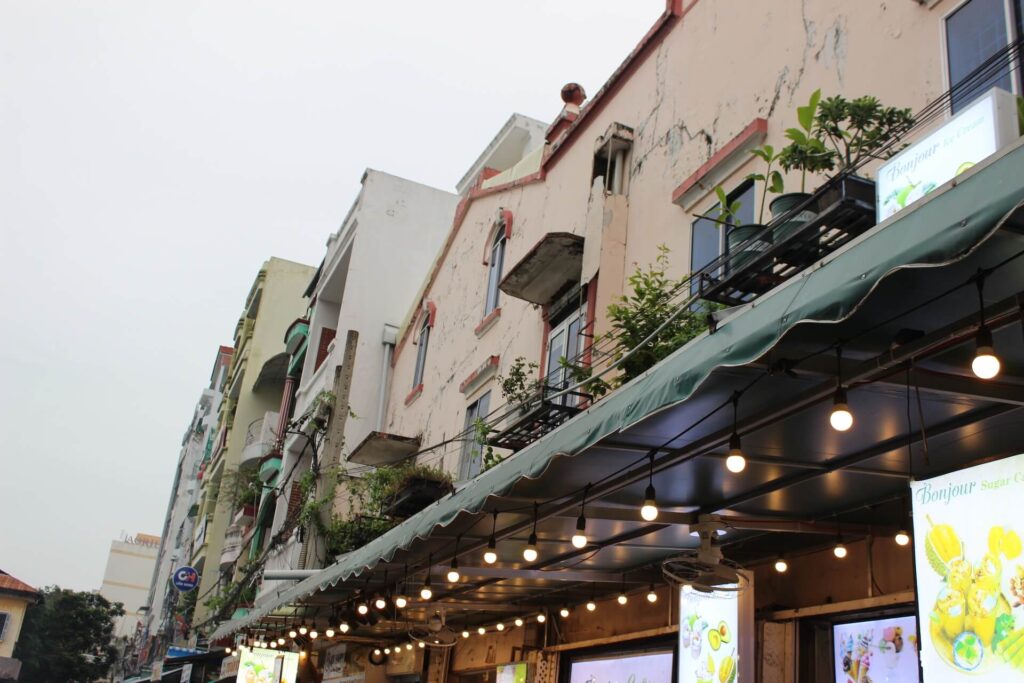
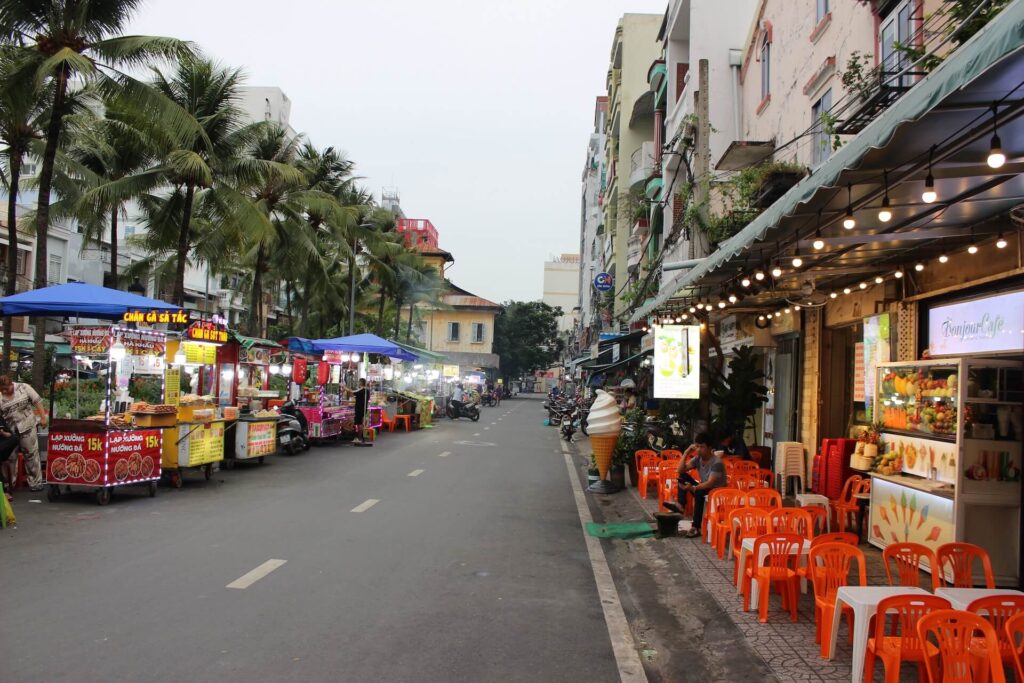
***Having never tried crack, I believe nước mía are better than crack and would solve the opioid crisis.***
After wandering the night market and even trying a single pork gyoza (not my favorite, but I was able to eat the whole thing), I meandered along the riverfront until I spotted a temple and decided to duck in briefly.
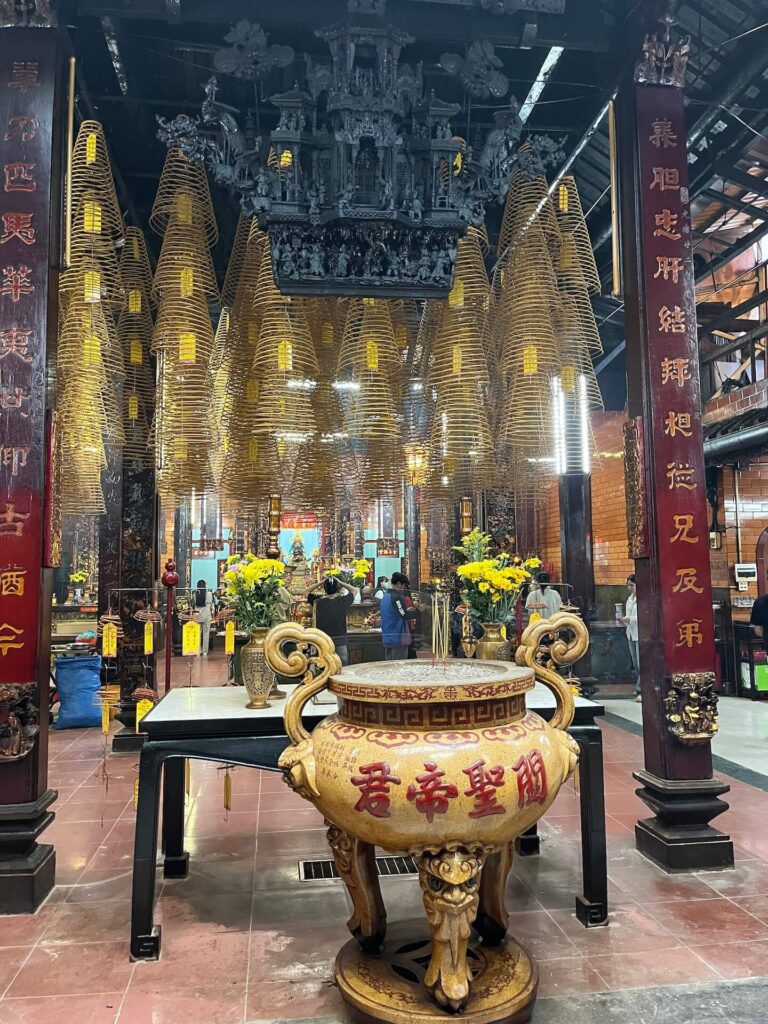
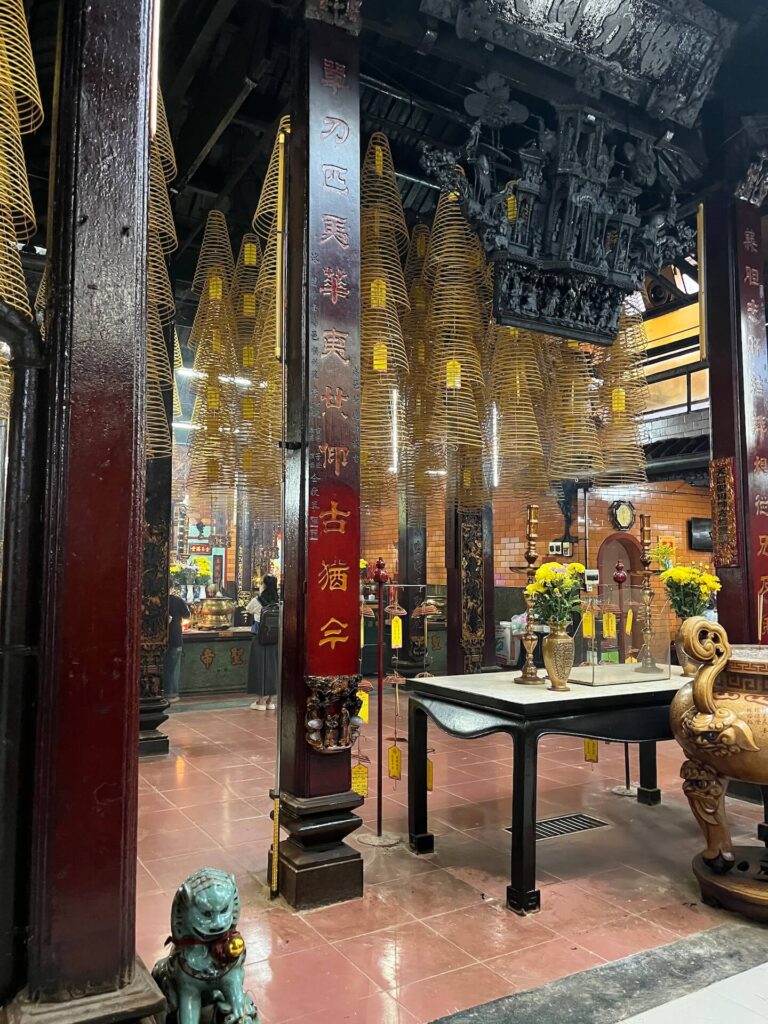
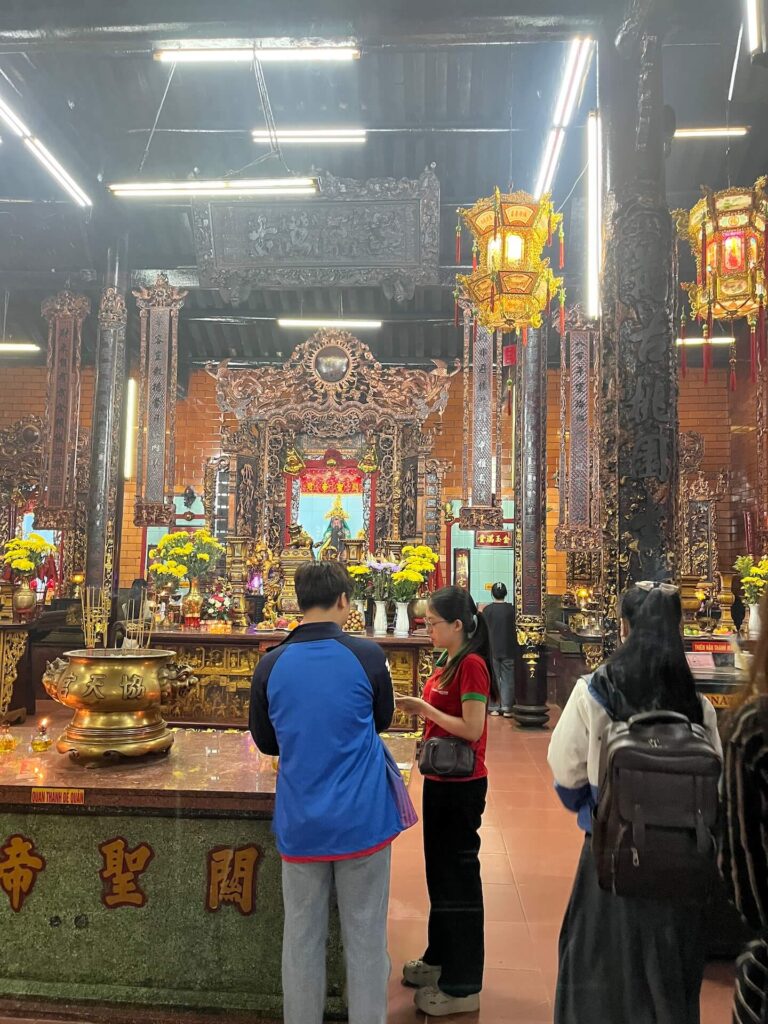
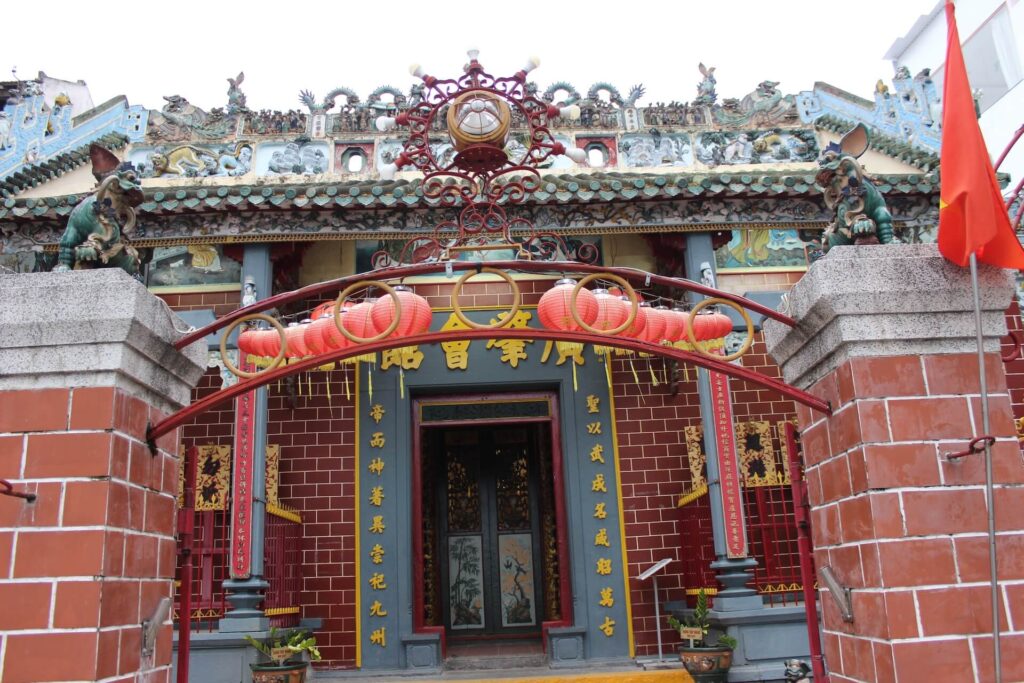
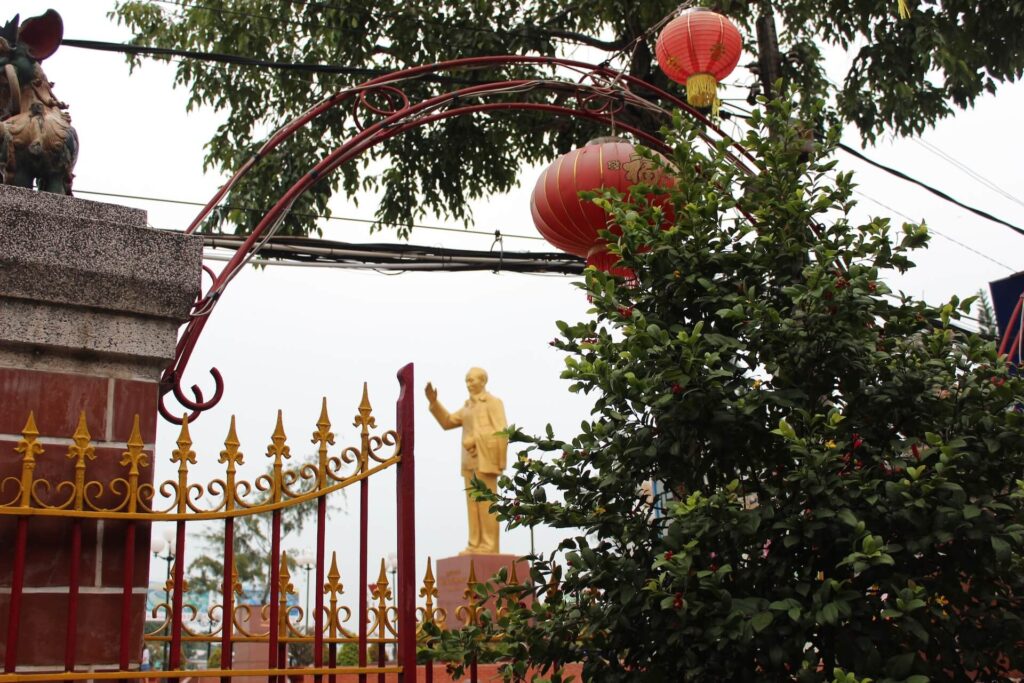
Outside the temple, there was a street puppy (actual puppy) who I fell in love with. I spent some time playing tug of war with his own mouth (my hand gripping the bottom jaw of his open mouth). I would have happily kept playing, but I got screamed at by a local for giving him attention and shooed away. He followed me for a bit and then retreated back to his corner.
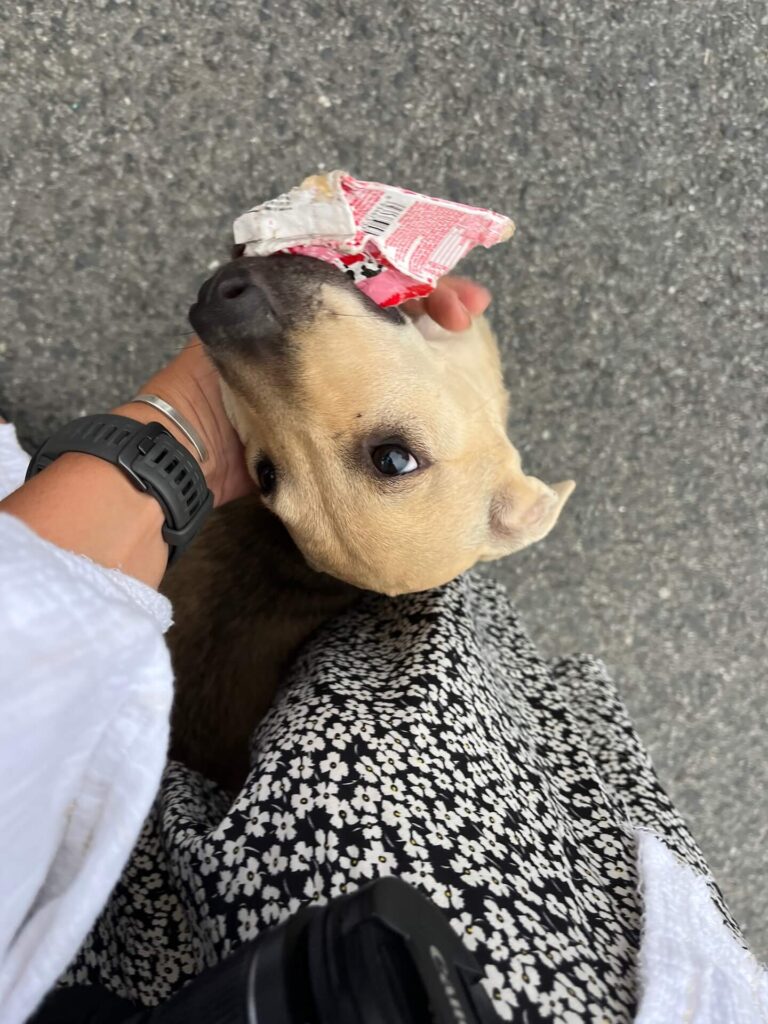
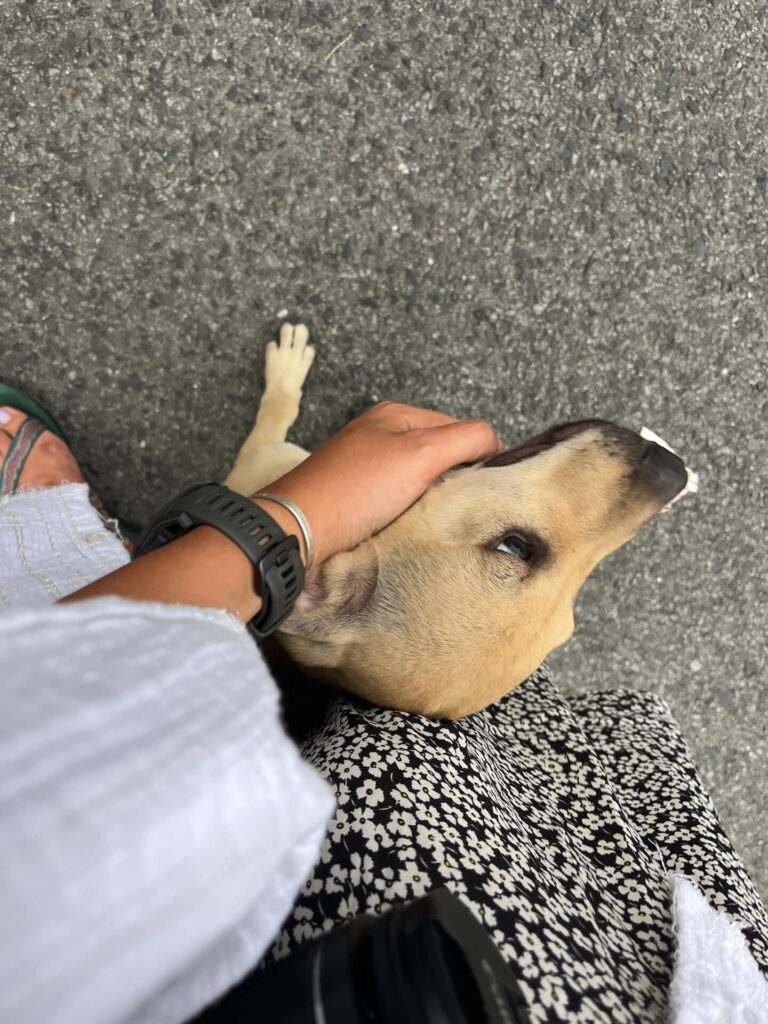
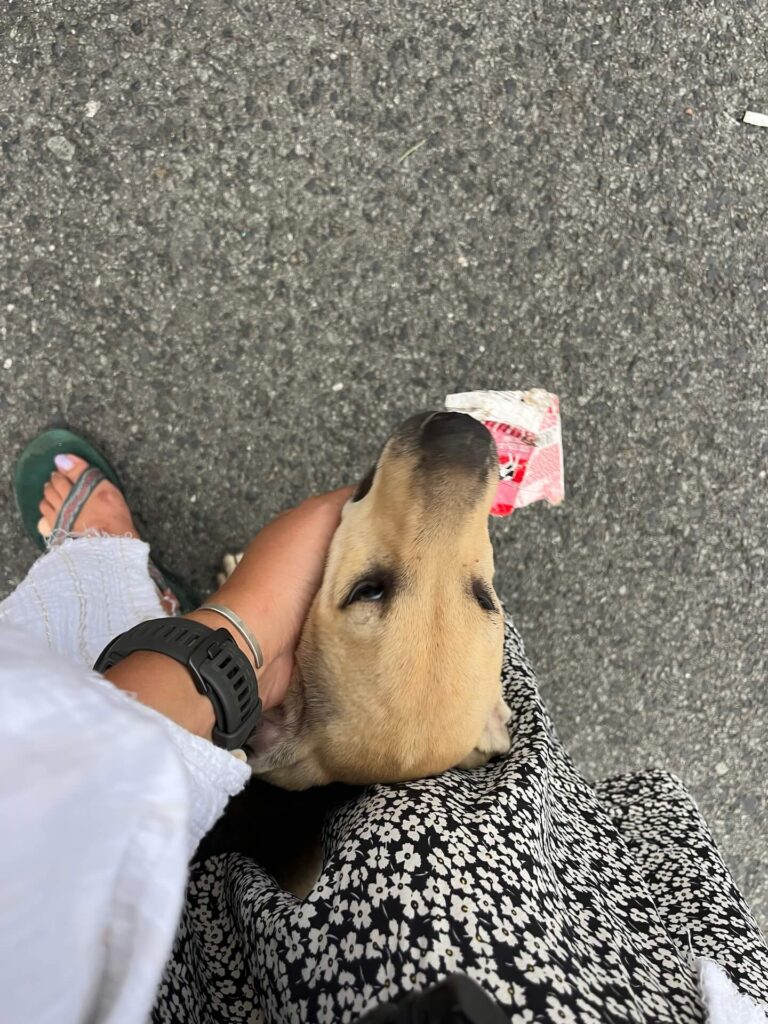
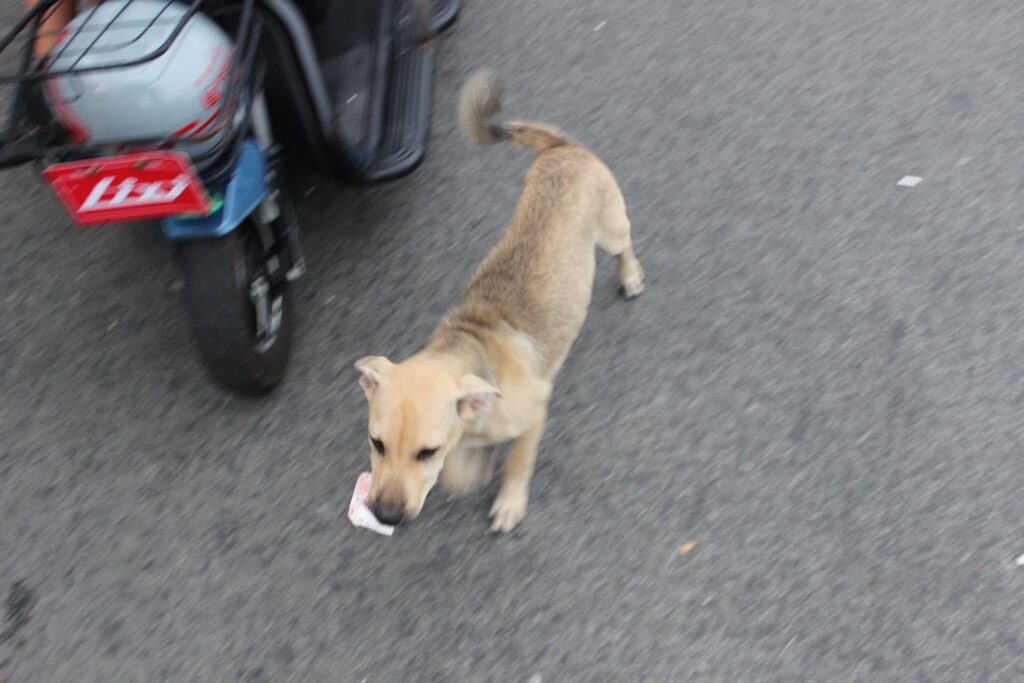
After I retreated from the pup, I walked across the street to see the Ho Chi Minh statue that stood above the riverfront park. The Tet decorations from this year were still up behind him.
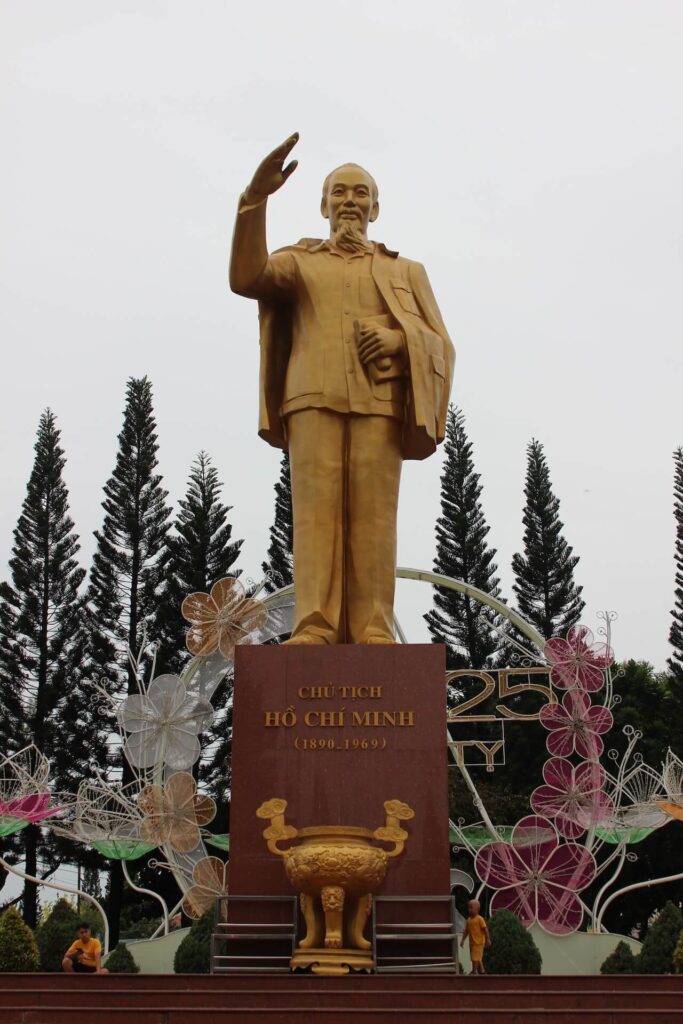
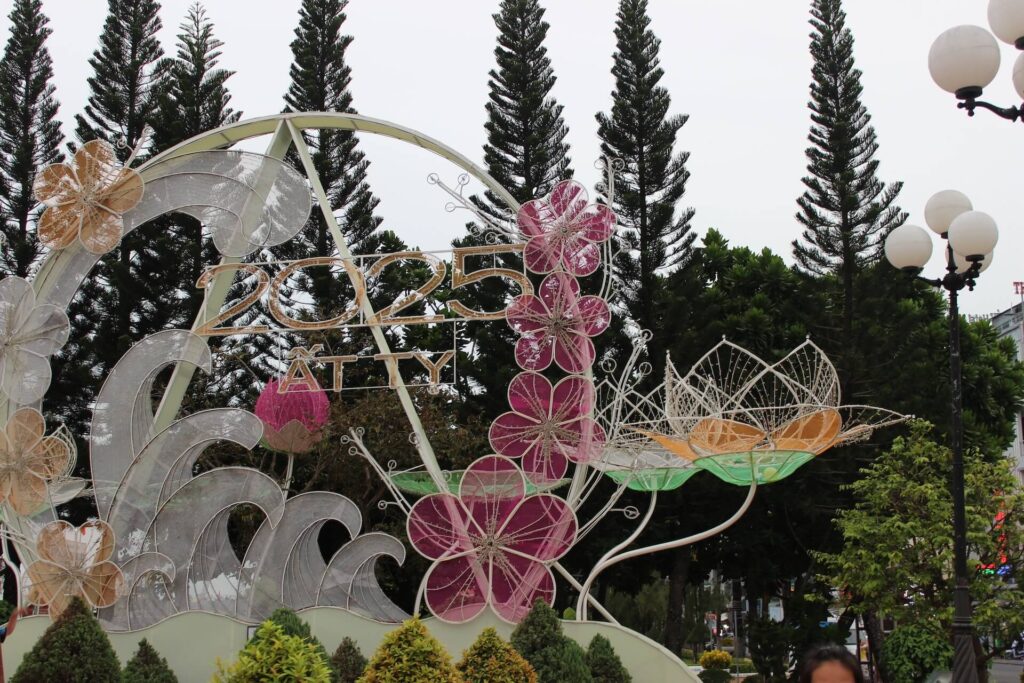
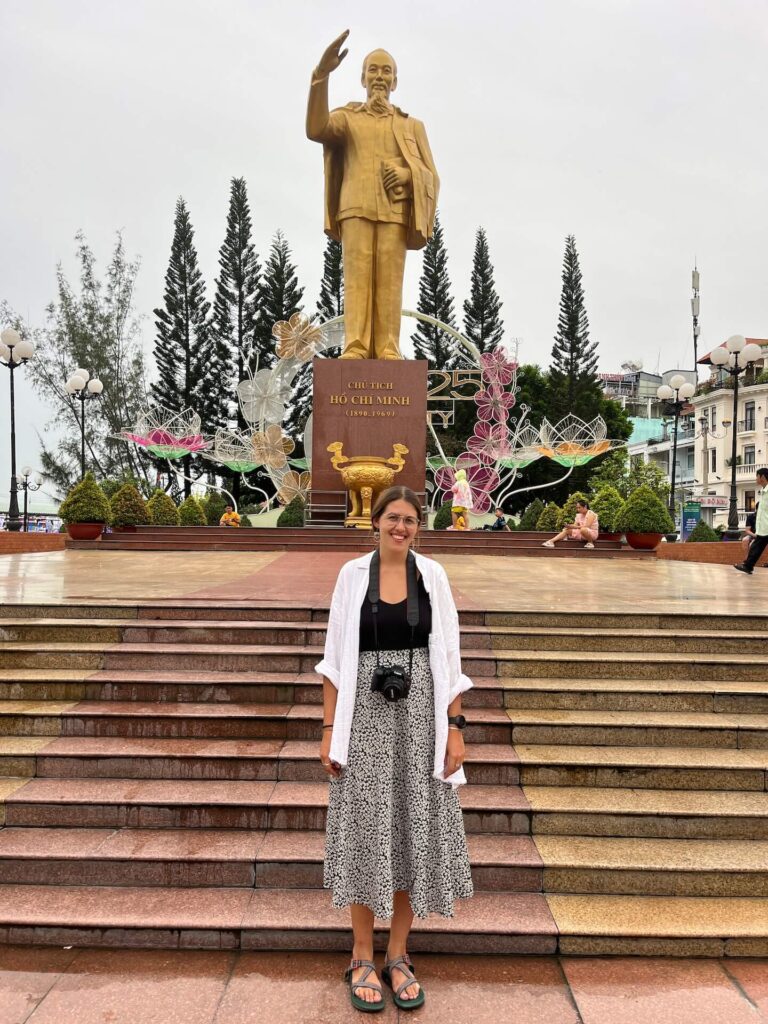
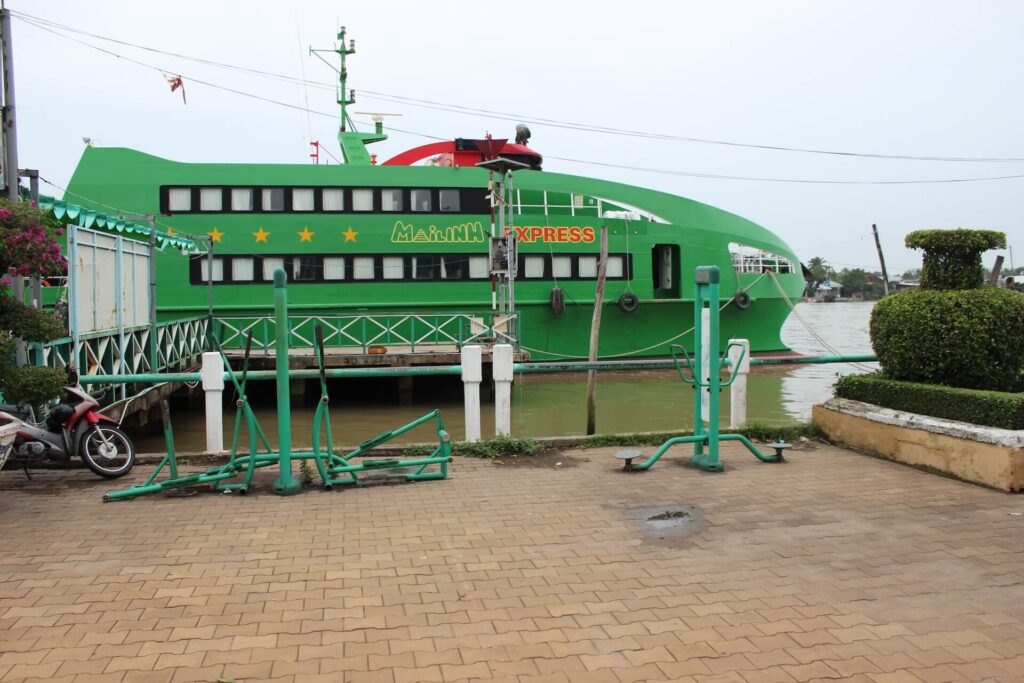
Day 5 (June 12)
The entirety of the morning was spent on a sunrise boat tour of the Mekong Delta, with the afternoon and rest of the day being spent on a bus to my next destination: Chau Doc.
Sunrise Boat Tour
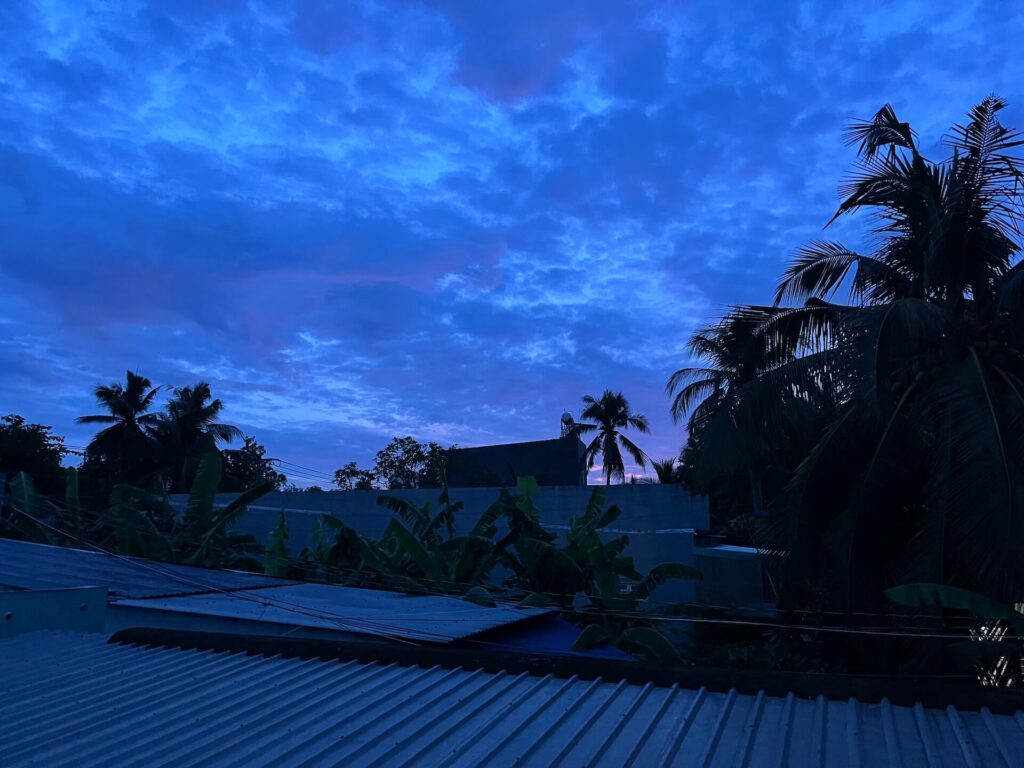
Chợ nổi Cái Răng (cai rang floating market)
We started out the tour with a boat ride to Cai Rang Floating Market (we being myself, Melanie from Holland, and our tour guide, Viet “like Viet Nam”).
The floating market
When we arrived at the floating market, we took our time meandering through the boats. It is a wholesale market, so it consists of dozens of large boats piled high with fruits and vegetables that are parked there until their stores run low. Smaller boats come through and buy high quantities from the larger boats to bring to markets on shore. The larger boats house families who live aboard the vessels given that their farms are typically at least a day’s journey away. They park at the market until they need to return to their farms and restock. It was a really neat water community to experience, much like a neighborhood on land.
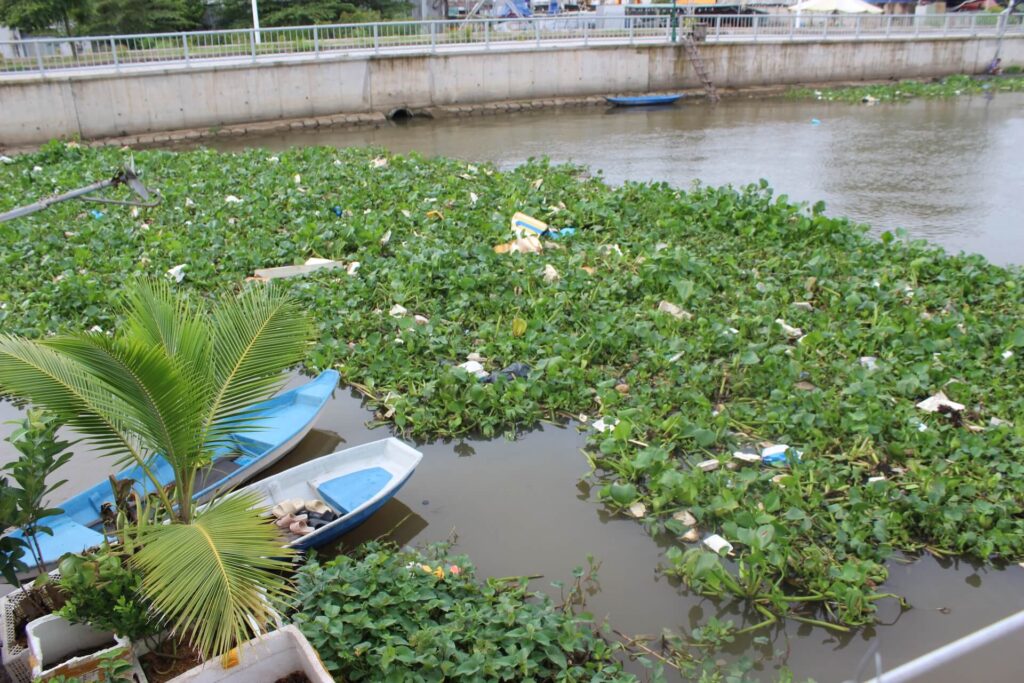
Breakfast on the water
We had a delicious breakfast of noodle soup, accompanied with a fresh coconut water. (Fun fact! Water coconuts are mostly meat, while land coconuts have more water!) I would love to learn how to perfectly cut a slit in a coconut using a machete, but I think that may be beyond my skillset. That was followed by a fruit platter atop one of the houseboats where we learned about life on the water. They dip their fruit into a peanut, salt, and chili mixture that combines wonderfully with the sweetness of the fruits.
Learning about life on a houseboat was really interesting—many of them are open in the center so that they can fill with water and easily fish. There is something about the mechanics that allows the fish in but not out. They also house ducks, frogs, and any other animals that can be easily kept and eaten while they are away from their farms.
We also learned that pandan is lá dứa in Vietnamese, while coconut leaf is lá dừa. Spot the difference? (I’ll give you a hint: the accent over the u.) Lá dứa (pandan) is pronounced “lie yew/you (with kind of a z sound at the start depending on who you ask), while lá dừa (coconut leaf) is pronounced “lie yuh” (also with kind of a z sound at the start depending on who you ask). Talk about tricky. Oh AND dừa on its own means pineapple… so that’s not confusing at all!
rice noodle making
Part of our tour was to go to a rice noodle making factory (now just used to show tourists the process) and make some rice noodles ourselves.
Viet shared with us the details of the process, which I’ll pass along to you all because I thought it was super fascinating!
The “dough” is made from 80% rice and water and 20% tapioca powder for the necessary elasticity of the noodles. It is almost like a wet chalk, getting a sticky powder all over everything it touches, and it crumbles similarly to feta before it is put in the mixer and turned into a liquid.
To make the fires necessary to cook the mixture, they use rice husks. Viet explained how the whole process is incredibly sustainable because they use the all the parts of the rice: the kernel in the “dough” and the husk to heat their stovetop. Also, once the husk has been burnt, they remove it (as seen in the photo) and sell it back to the farmers as fertilizer. There are no wasted byproducts, and the cycle can continue forever, with the rice nourishing itself indefinitely.
The liquid “dough” is poured on a hot, circular skillet, pretty much identical to those used to make crepes. They use a large, flat-bottomed pan to spread the liquid to the right thickness and then it cooks almost instantaneously. Someone needs to be at the ready to remove the rice paper from the griddle using a bamboo roller of sorts. You have to be careful not to get the rice paper stuck to itself, while also ensuring it is rolled and unrolled completely flat. We each took a turn giving it a try, and I did pretty well, if I do say so myself.
The rice paper is transferred from the griddle to bamboo stretchers and carried carefully outside to the drying racks. They have to sit in the sun for 3–4 hours (2.5 if it is a particularly strong sun) until they are no longer sticky and can be rubbed with coconut oil to prevent sticking, cut in half, and fed through the noodle maker.
We each took a turn catching the noodles as they came out of the noodle maker and putting them with their corresponding pile. It was actually super fun to participate in and learn all about the process, which was a pleasant surprise given that I am usually hesitant about tourist-targeted activities.
The colorful noodles you see are created by mixing in natural dyes when the dough is liquified. Pink is made using dragonfruit (making the noodles sweeter than some of the other colors), bean sprout flowers make green, pandan leaves create the blue color, yellow comes from ginger, and yams lend the deep purple hue.
We also learned that you can tell when rice noodles are fresh if you hold them in the middle and the ends are uneven. The factory machine-made ones will all be the same length, while the handmade ones will not. The handmade ones are more fresh because they can only make small batches that sell quickly and thus do not add preservatives, whereas the factory-made ones have preservatives in them because they are made much more quickly and thus have to have a month-long shelf life.
the smaller offshoots
Because we were on a small boat, we were able to explore the smaller canals that the big tour boats could not. It was definitely a highlight of the tour because we were the only ones out there, and it was very peaceful and lush.
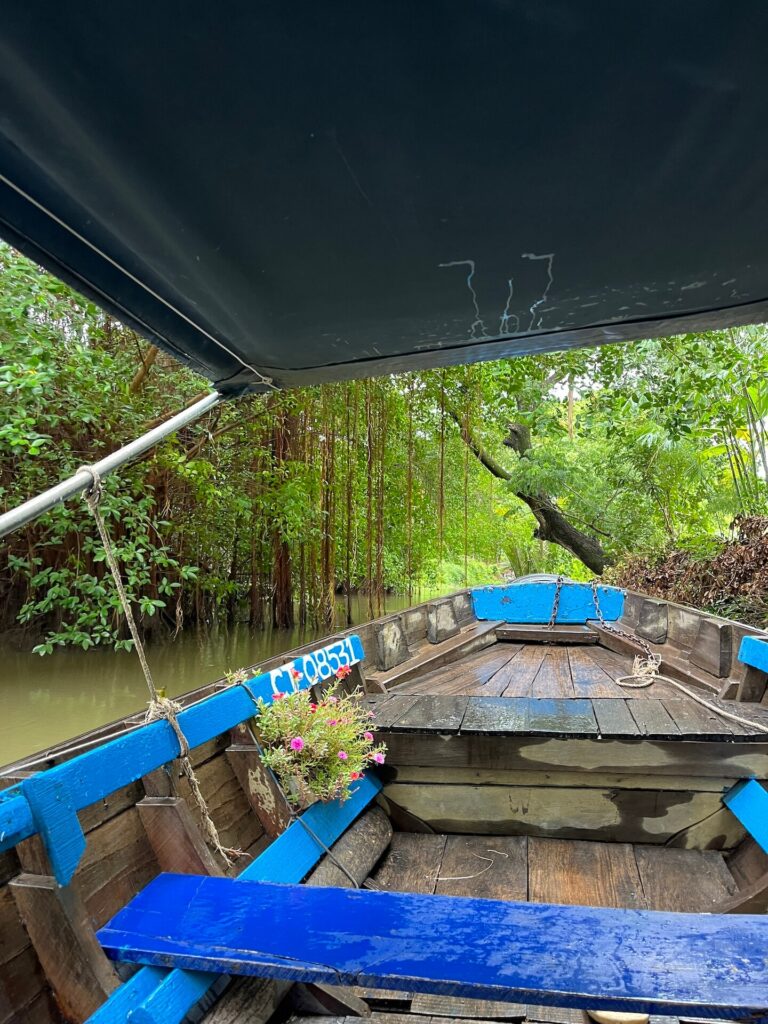
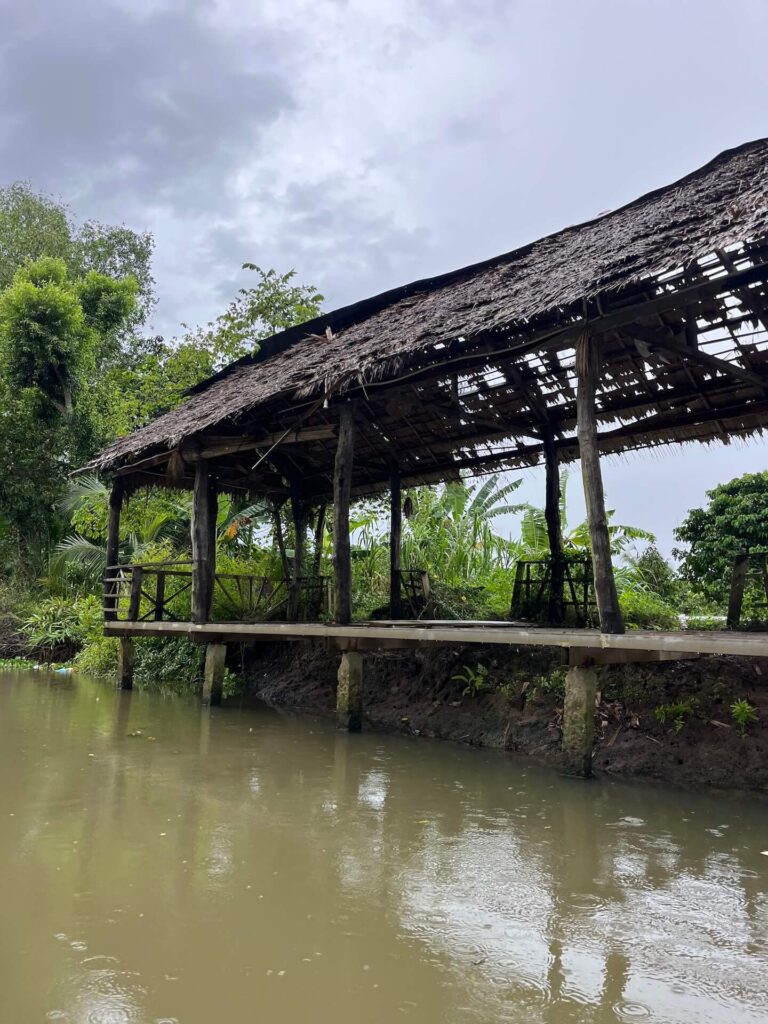
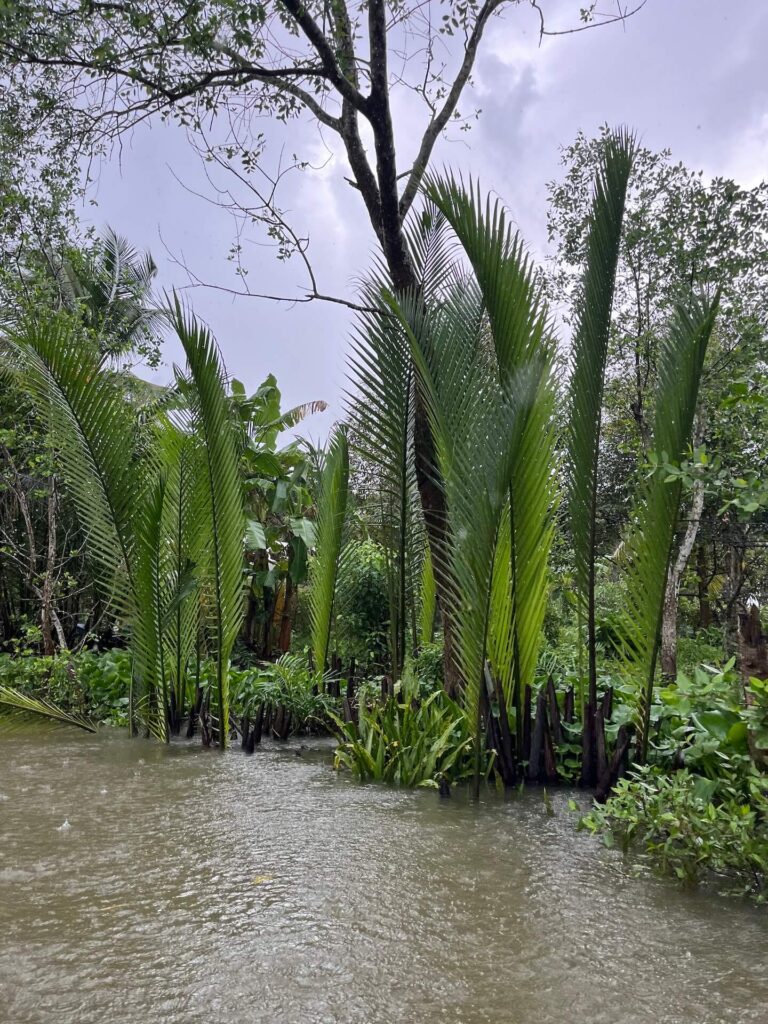
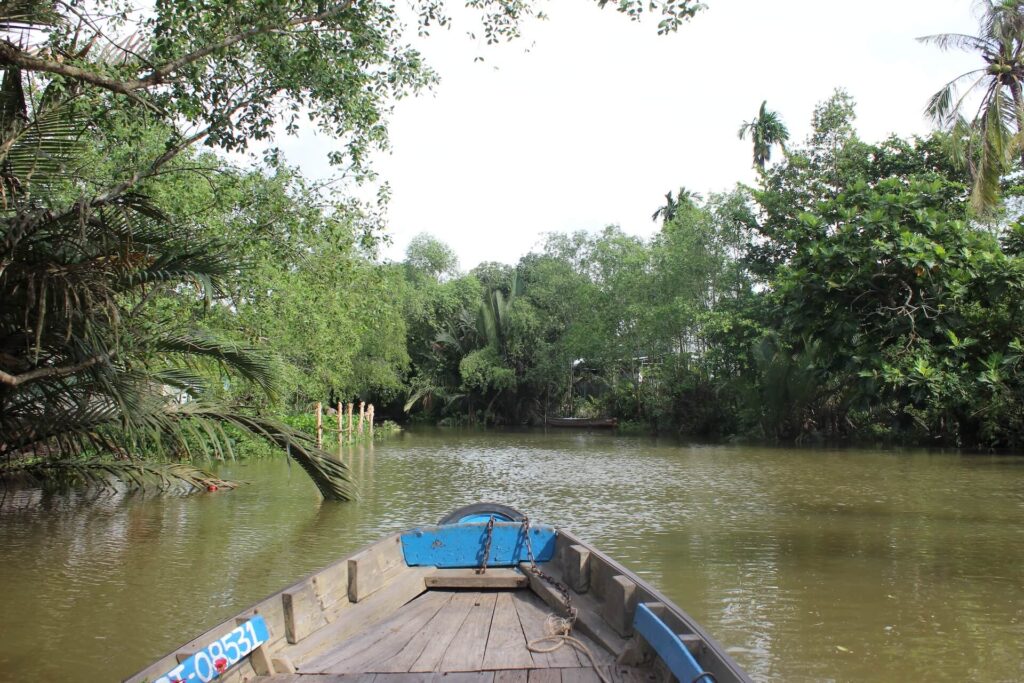
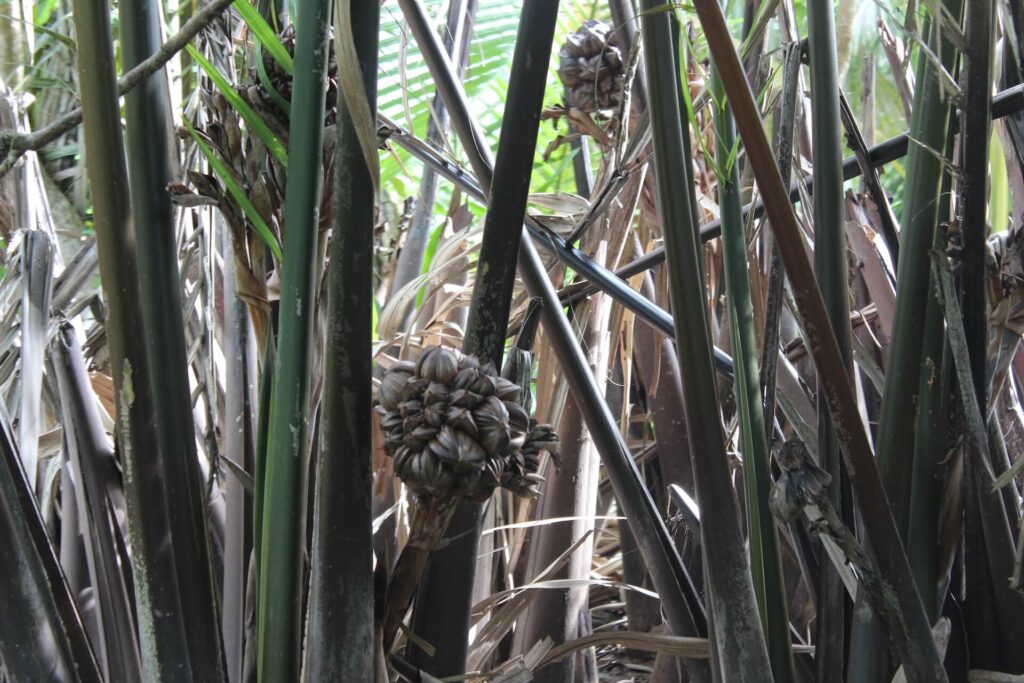
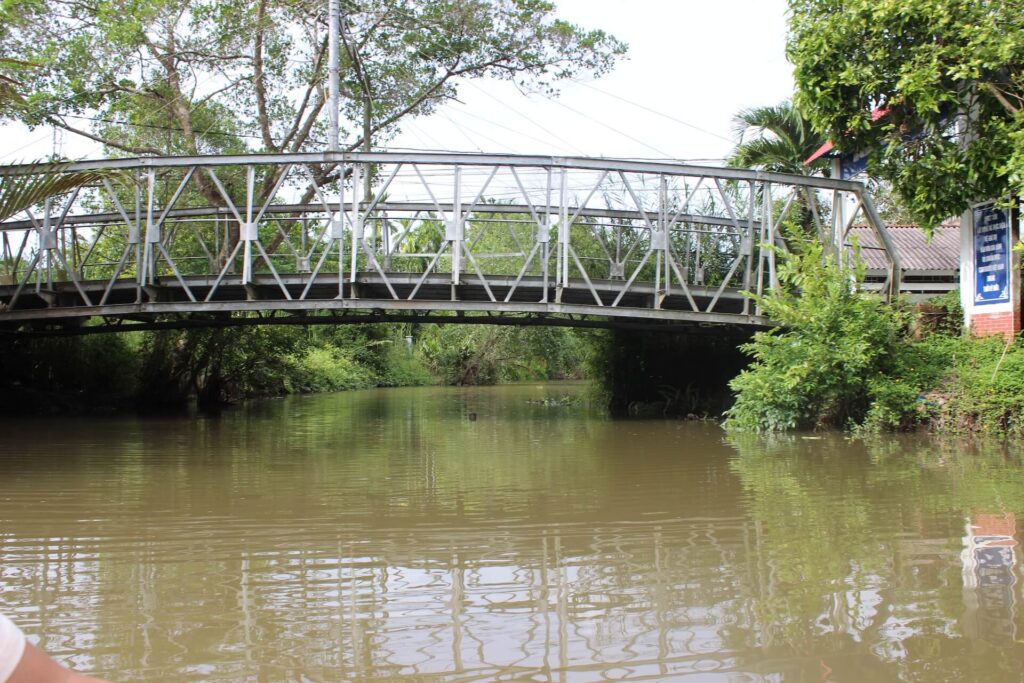
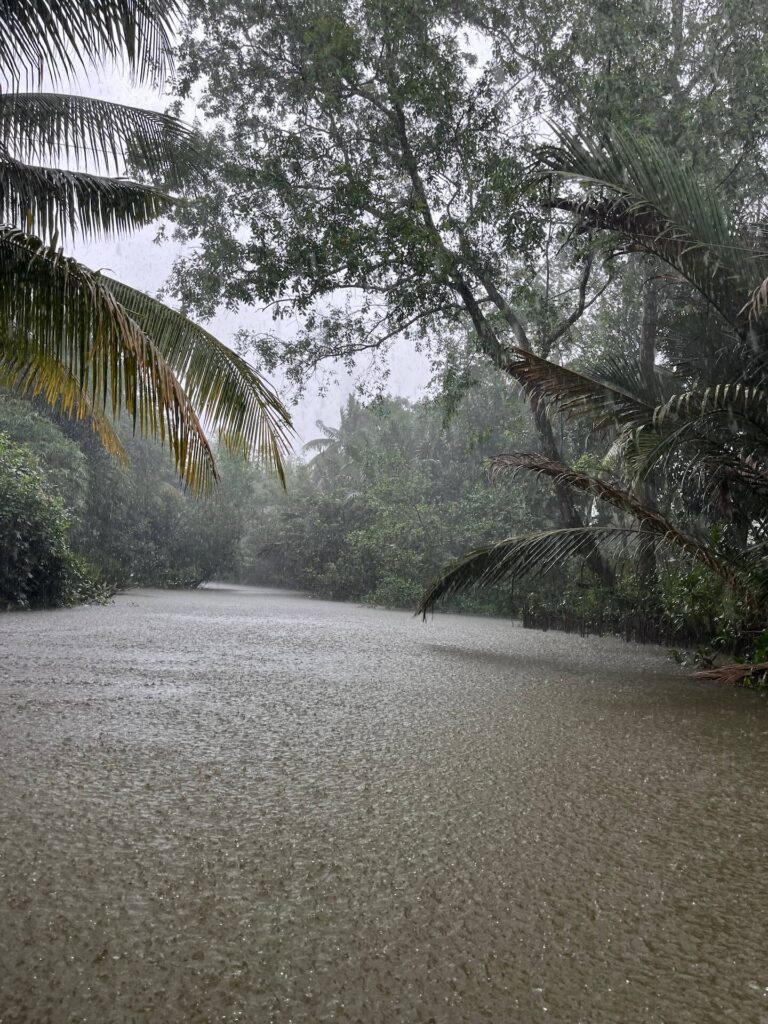
We got caught in a rainstorm on the smaller canals, but our boat was luckily a convertible, so Viet put the roof up. Unfortunately, his post at the motor at the back of the boat was exposed to the elements, but he donned his poncho and propelled us along with a smile and bets on when the torrents would cease. (I bet 10 minutes, he bet 30; we were both somewhat right.)
Coconut palm creations
Viet informed us that the Vietnamese frequently weave young coconut branches that have not yet leafed to make roofs for houses. He then proceeded to weave several creations for us from said branches.
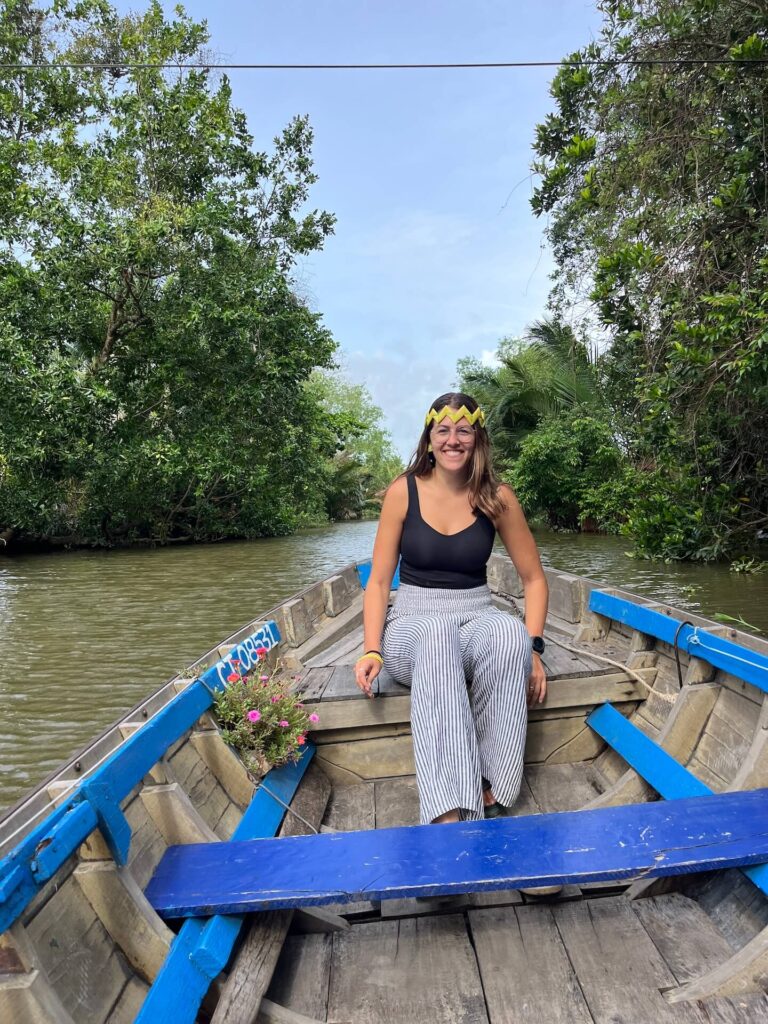
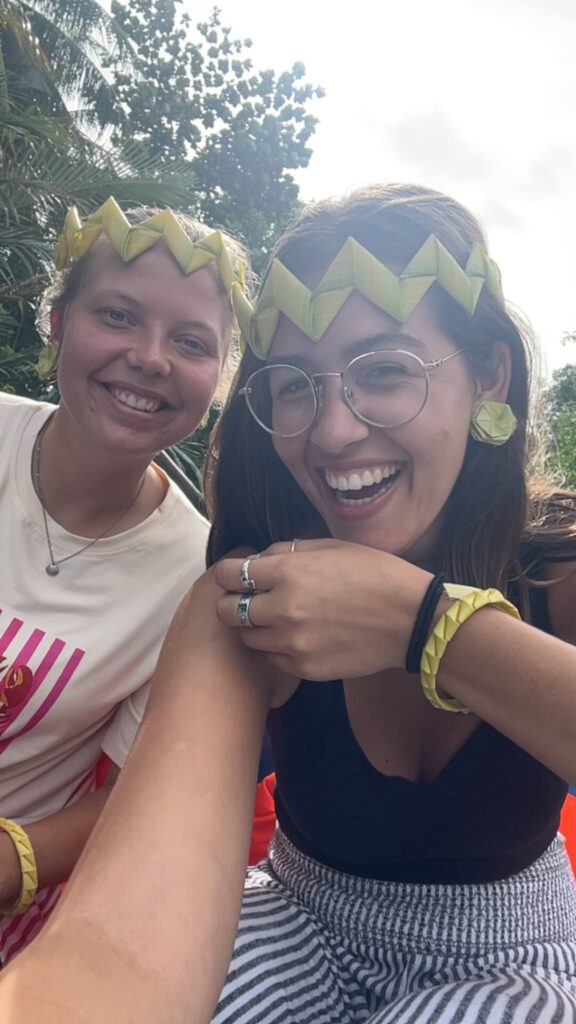
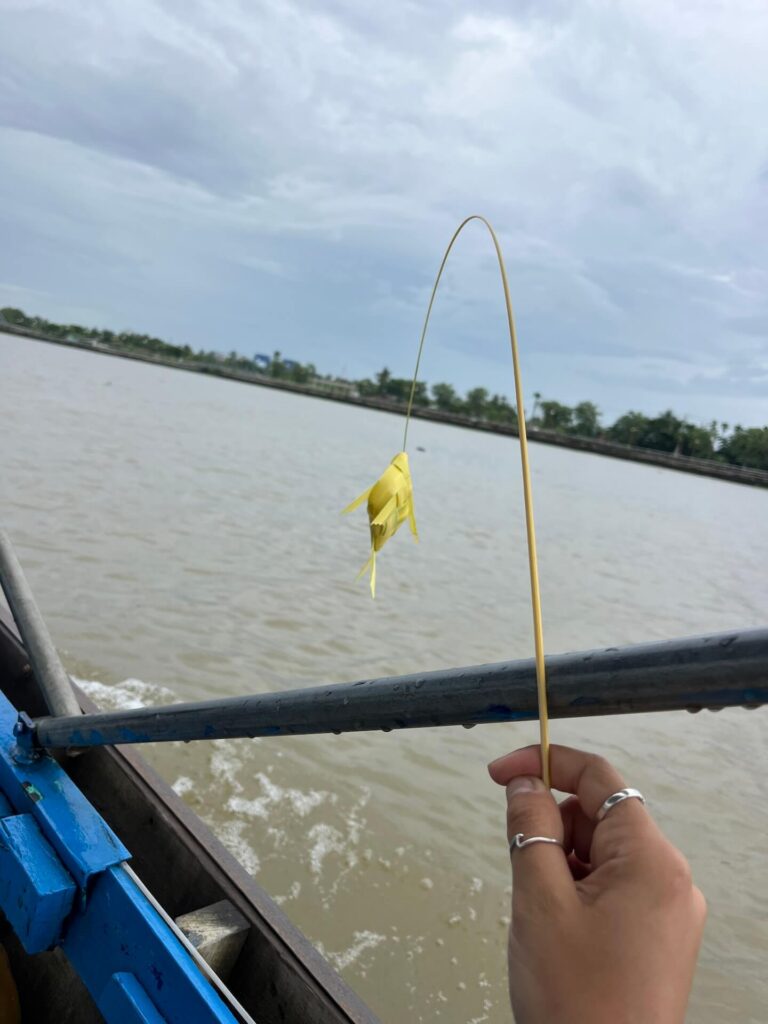
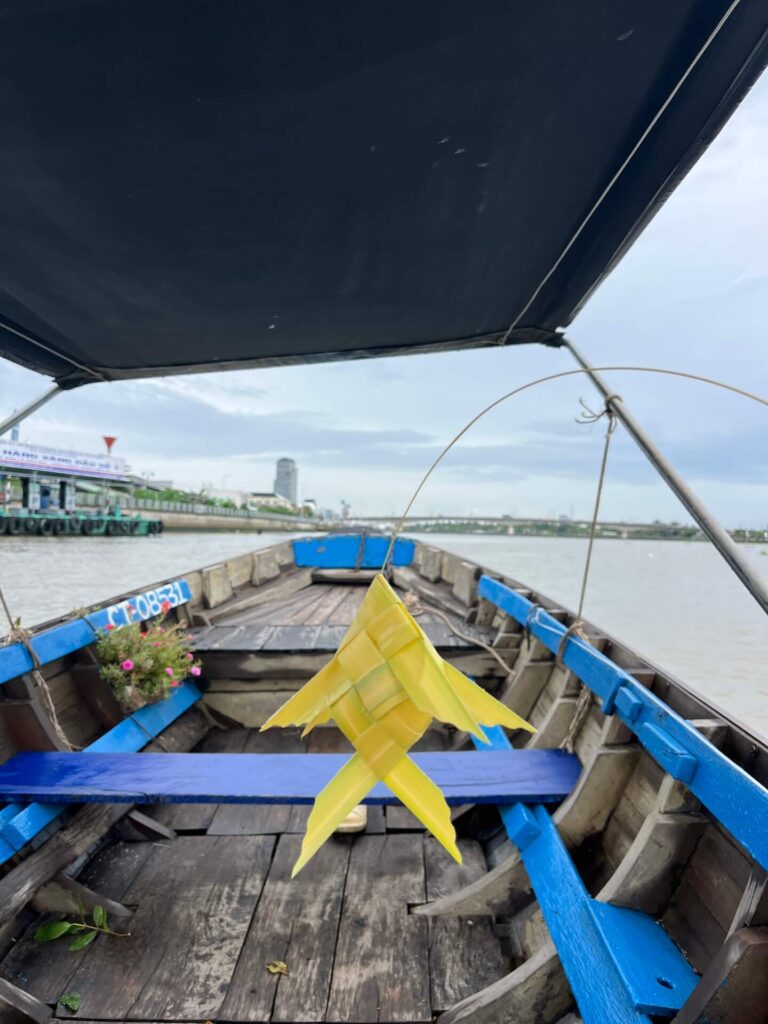
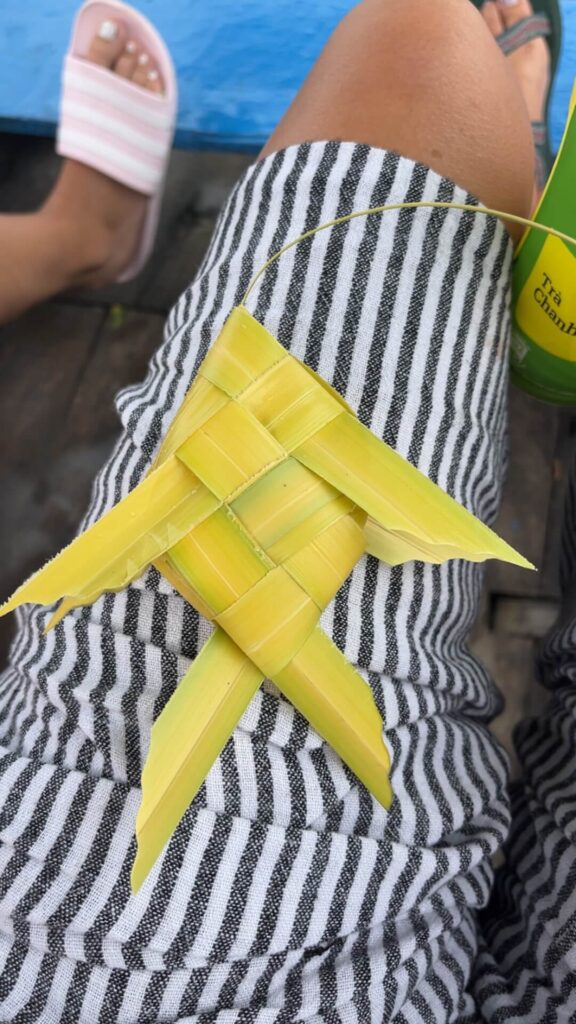
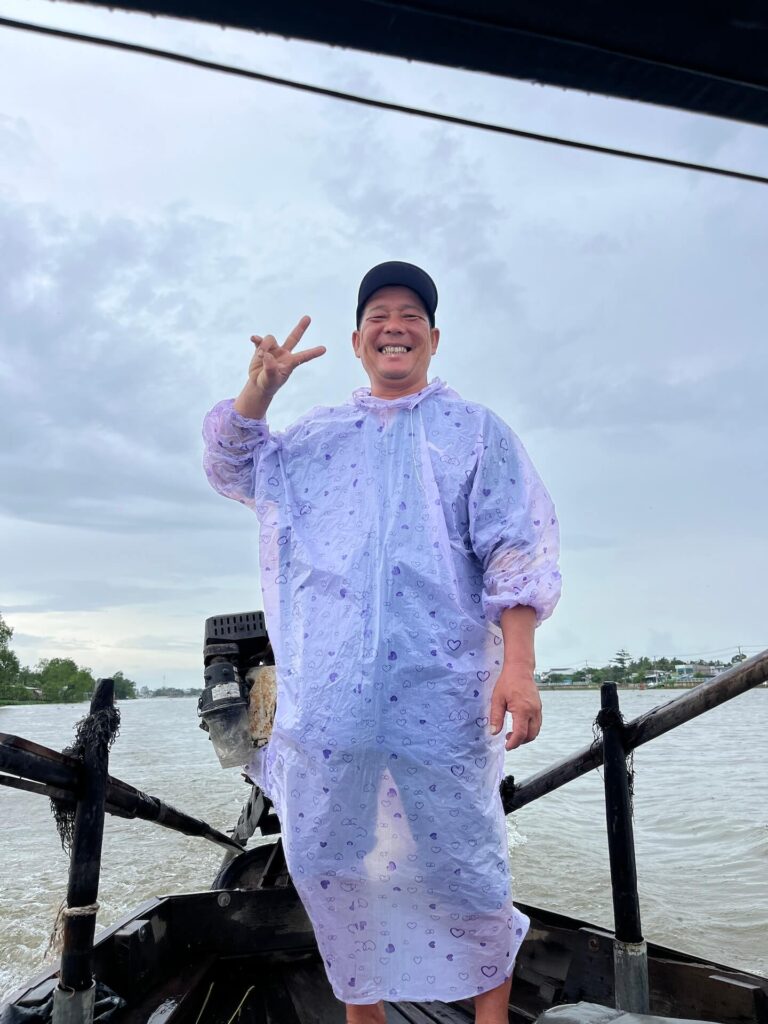
One of Viet’s countless fun facts from the day: the bright red flowered tree I had seen everywhere is the phượng vĩ (fuh-w/vee) tree — royal poinciana or phoenix tree in English. It is infamous in Vietnam because it blooms in late spring, early summer, so it signals the start of summer vacation for schoolchildren.
Journey to Chau Doc
After the tour, I returned to the hostel to check out, gather my belongings, and catch my bus to Chau Doc.
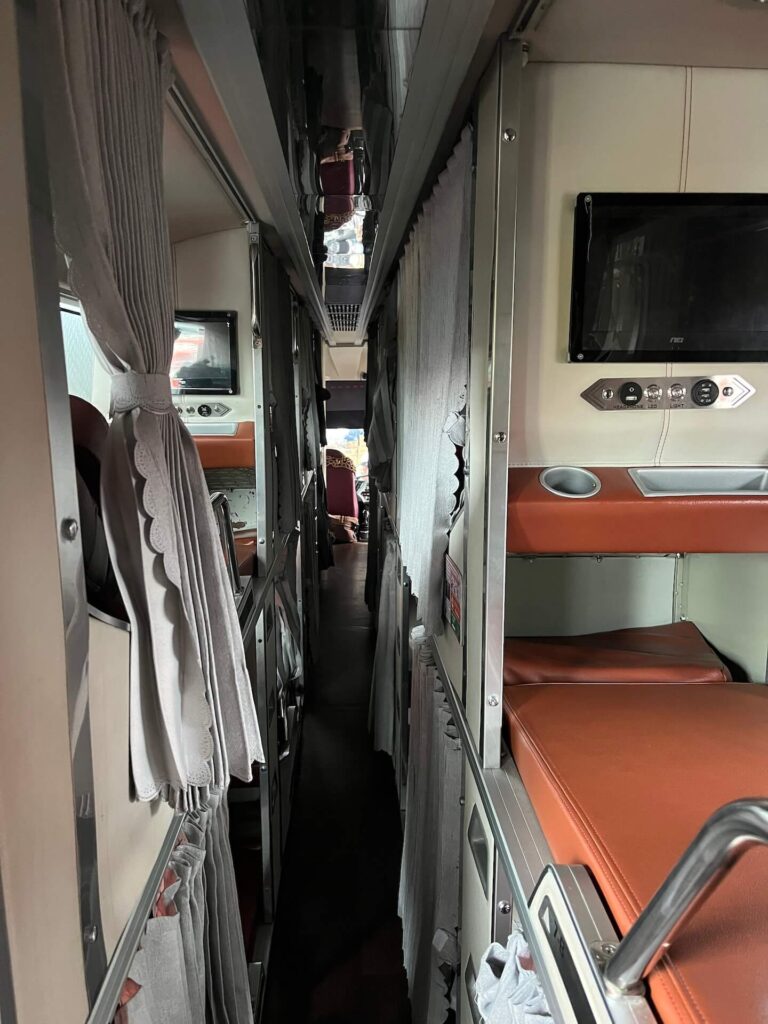
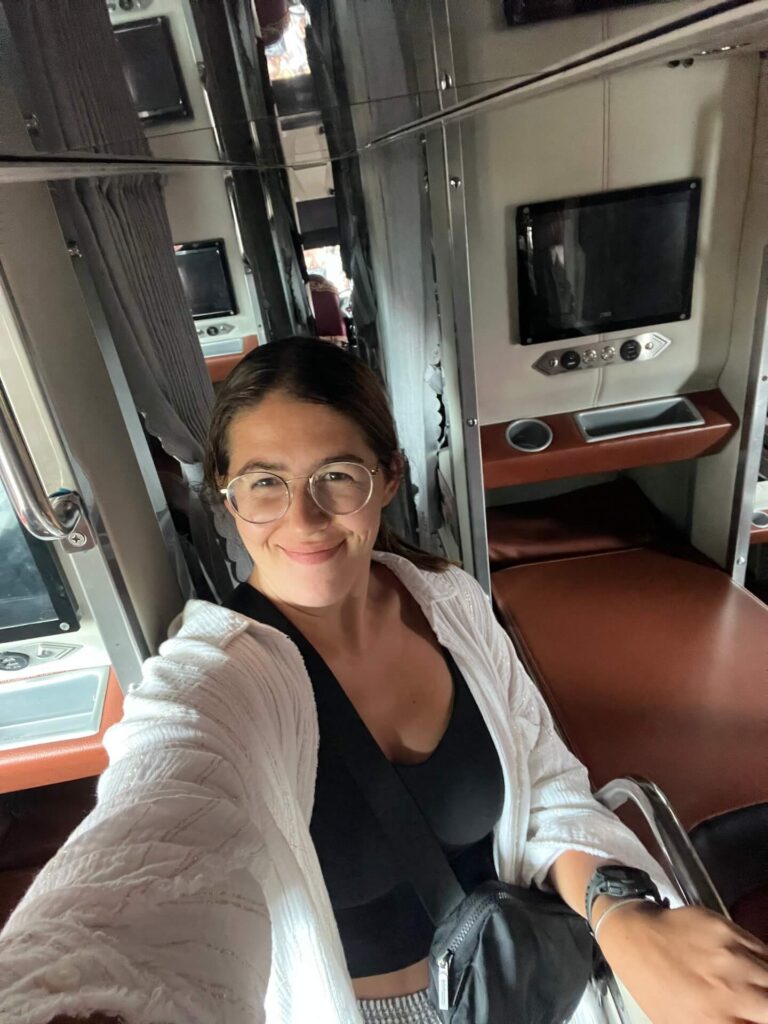
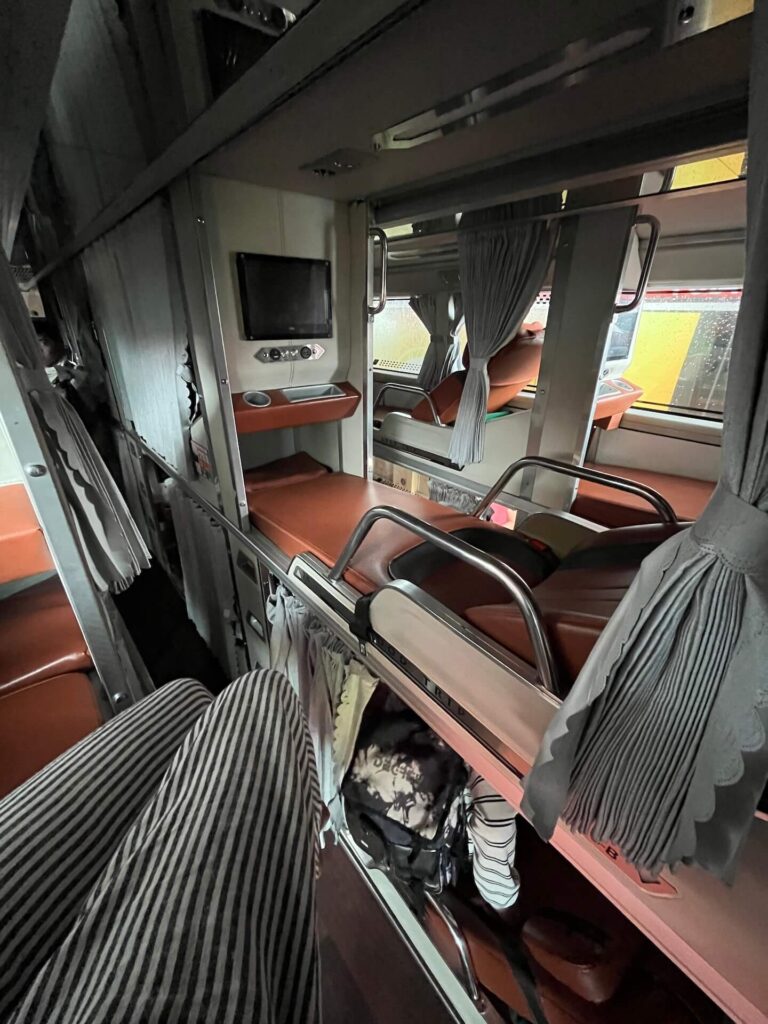
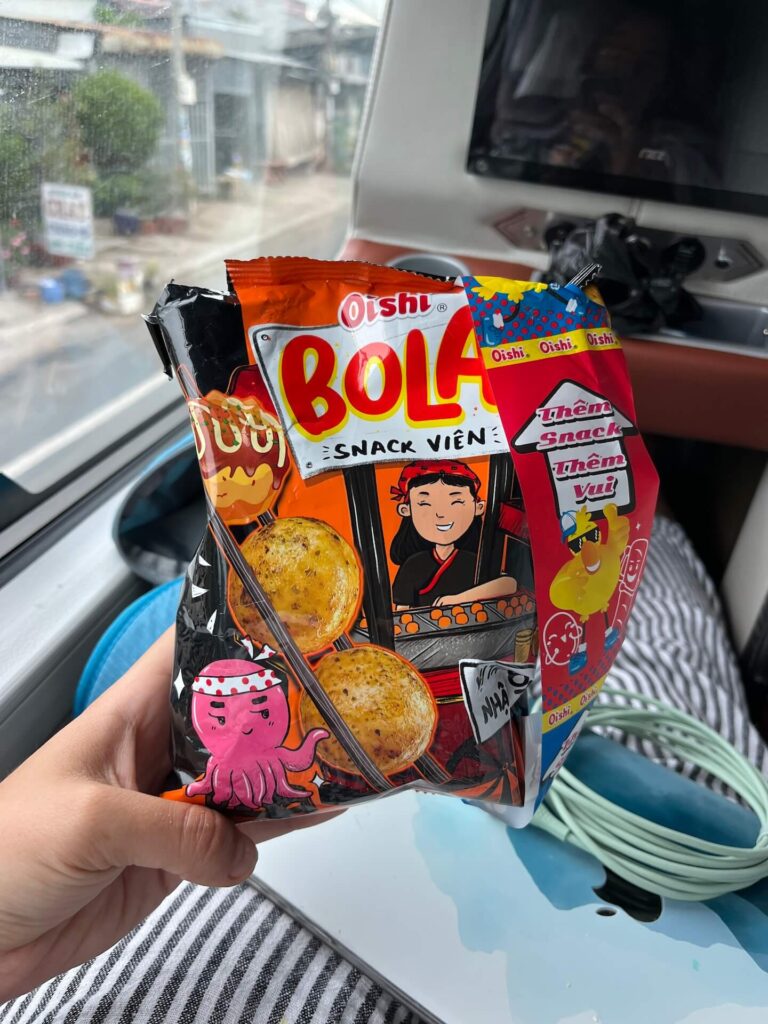
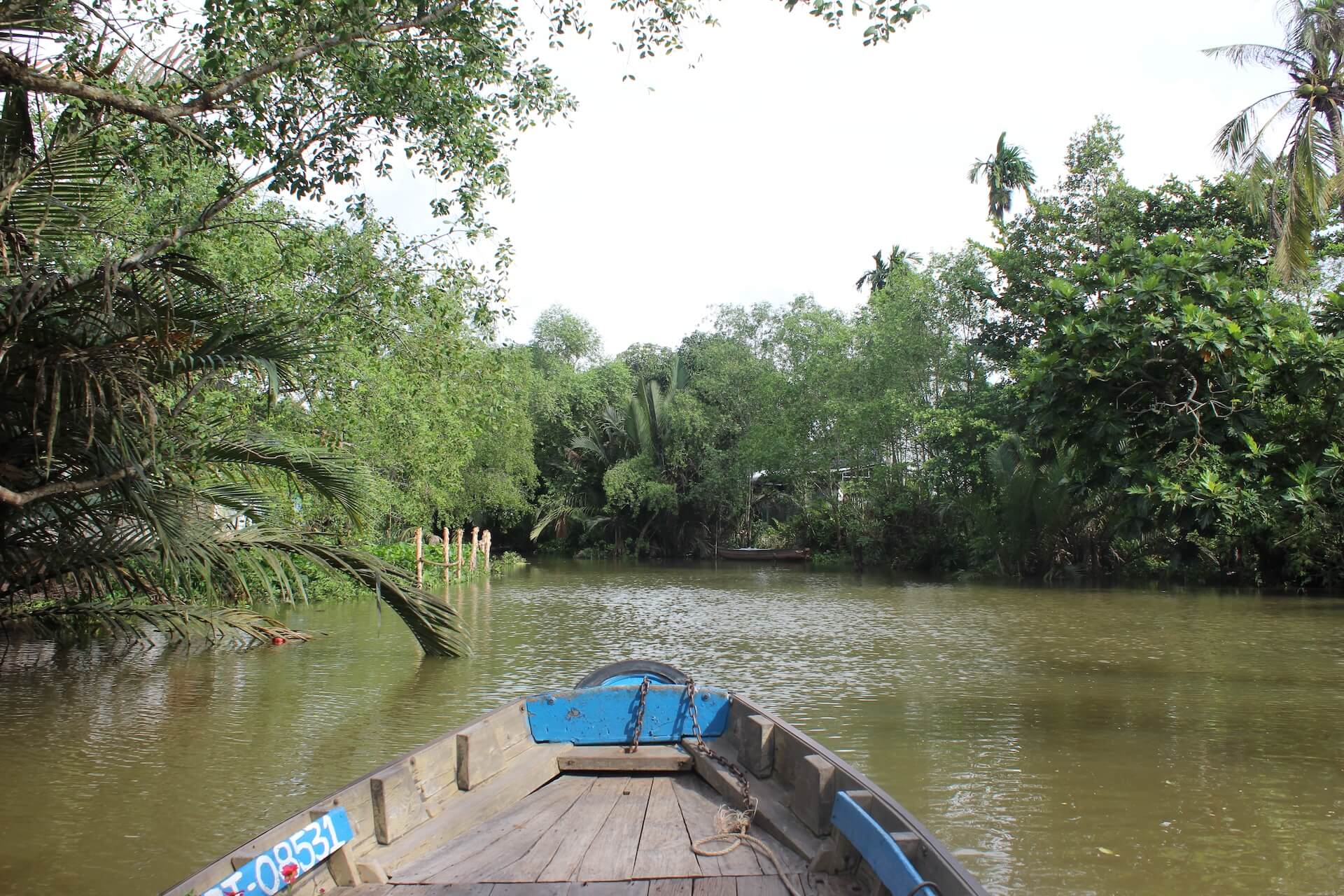
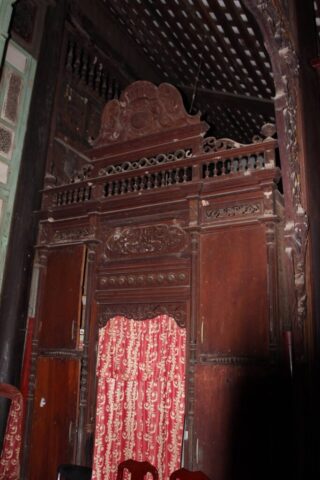
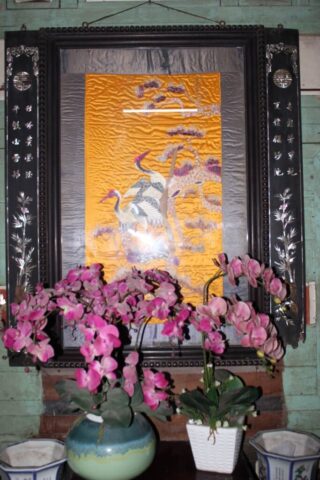
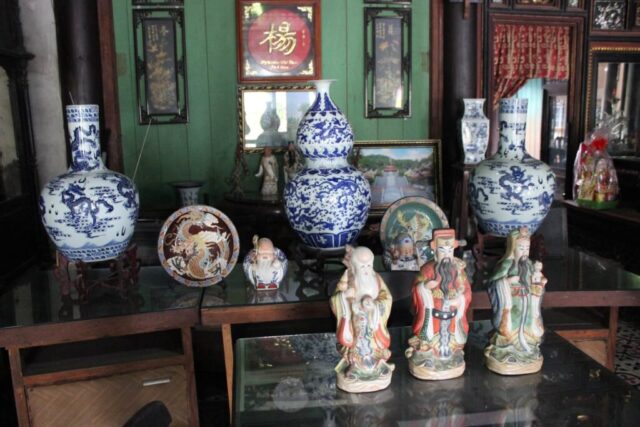
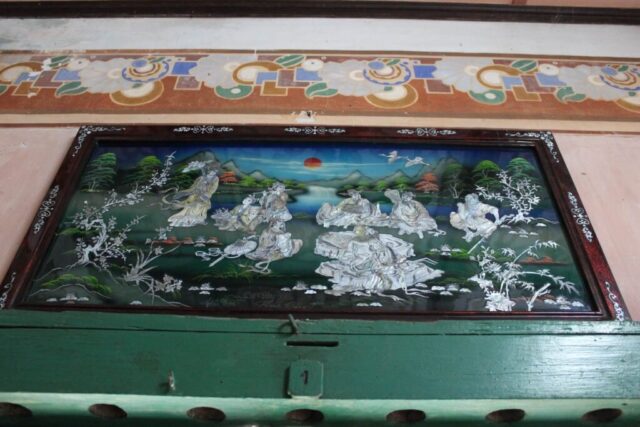
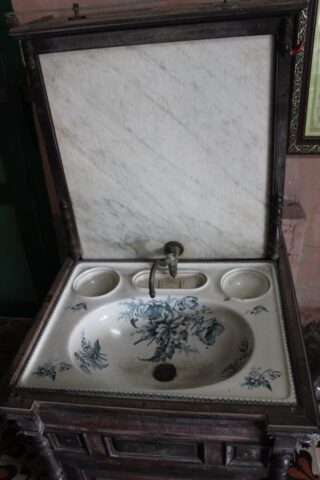
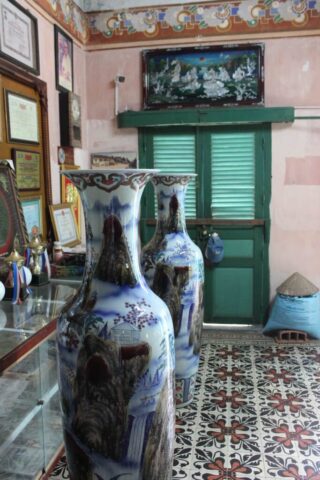
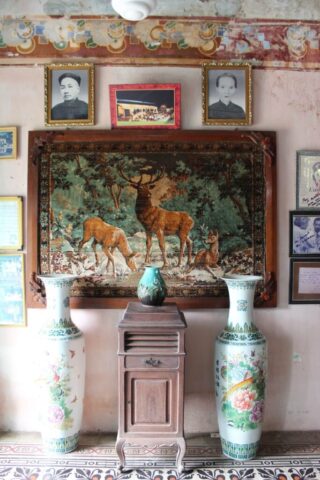
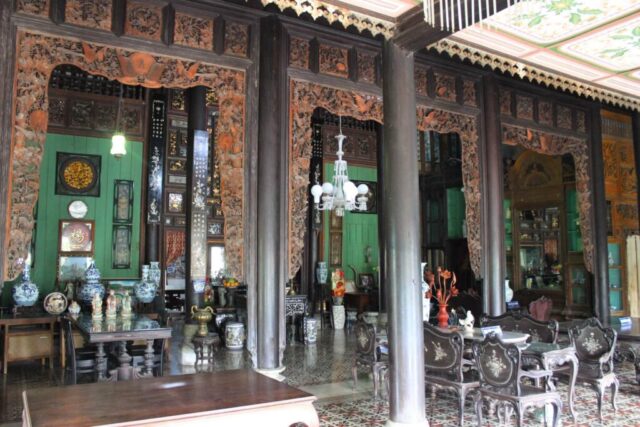
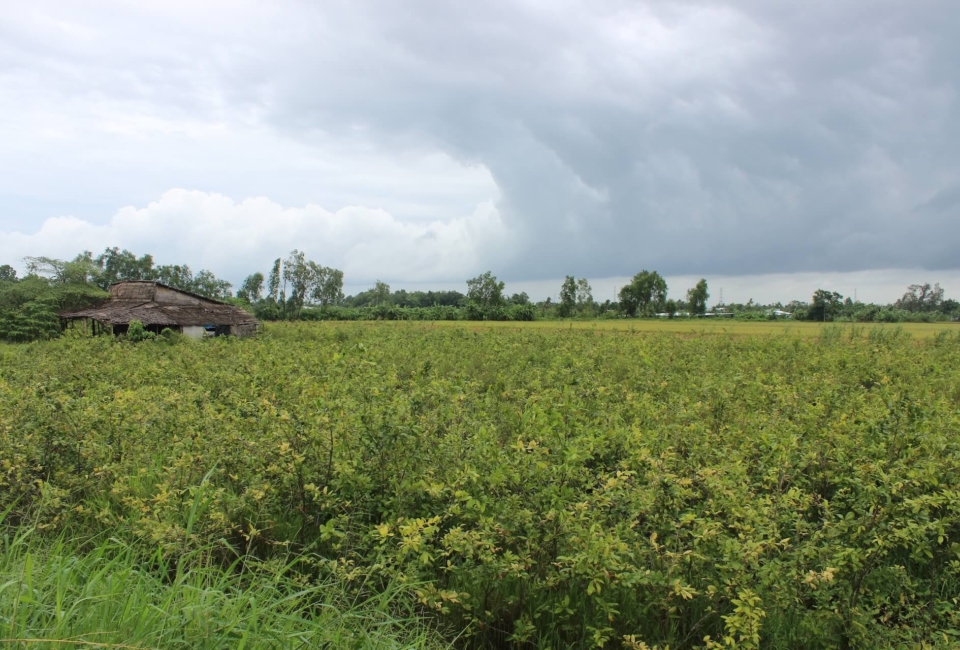
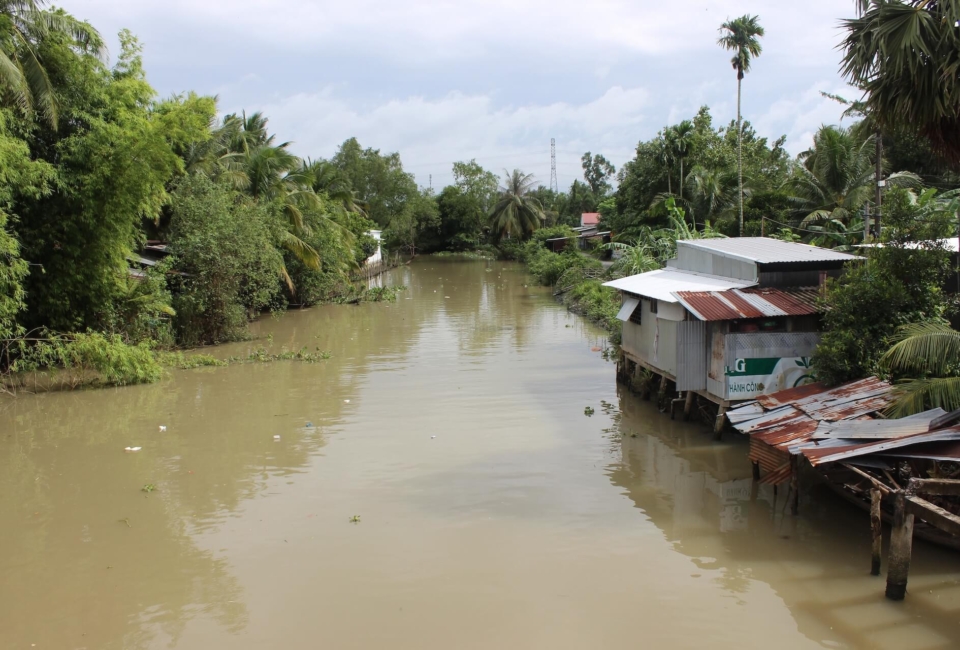
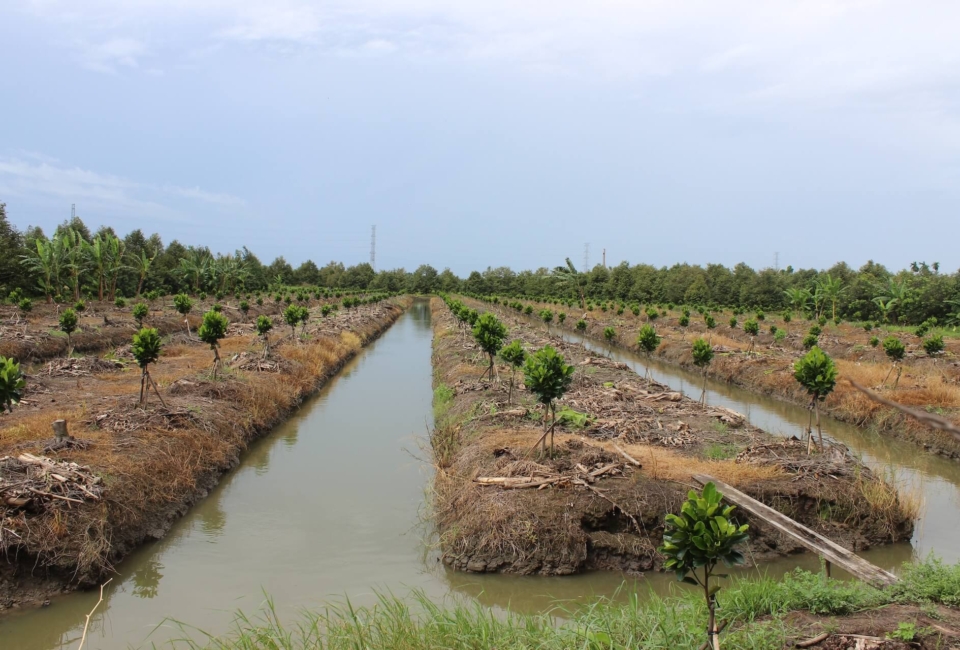

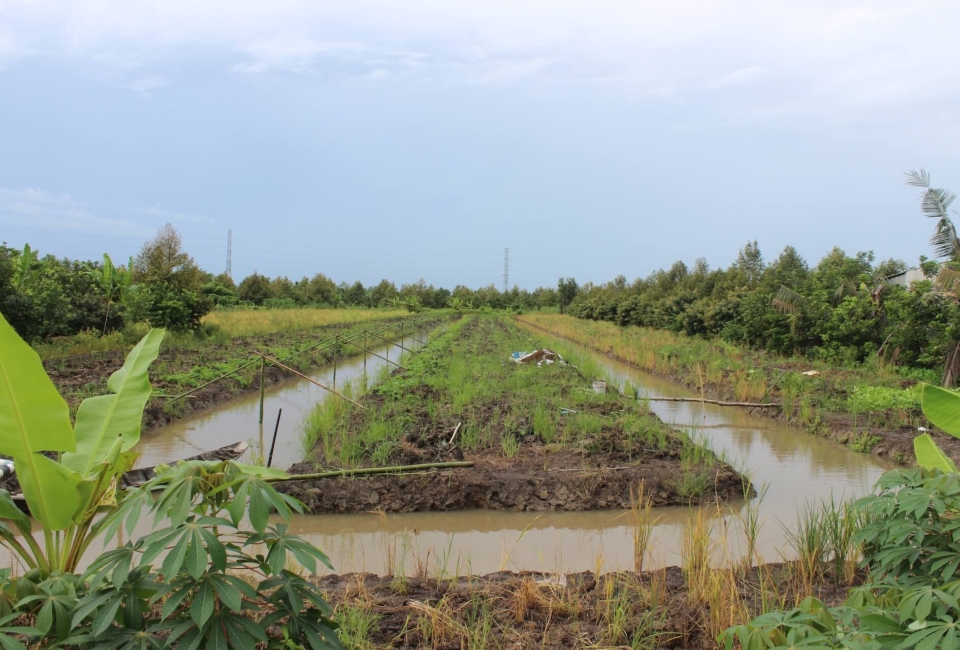
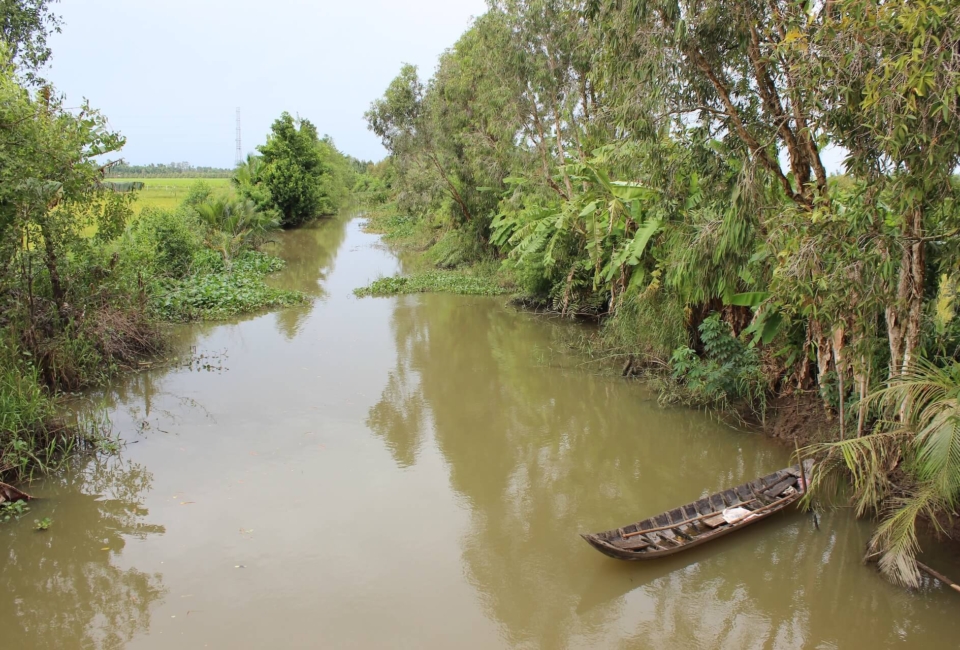
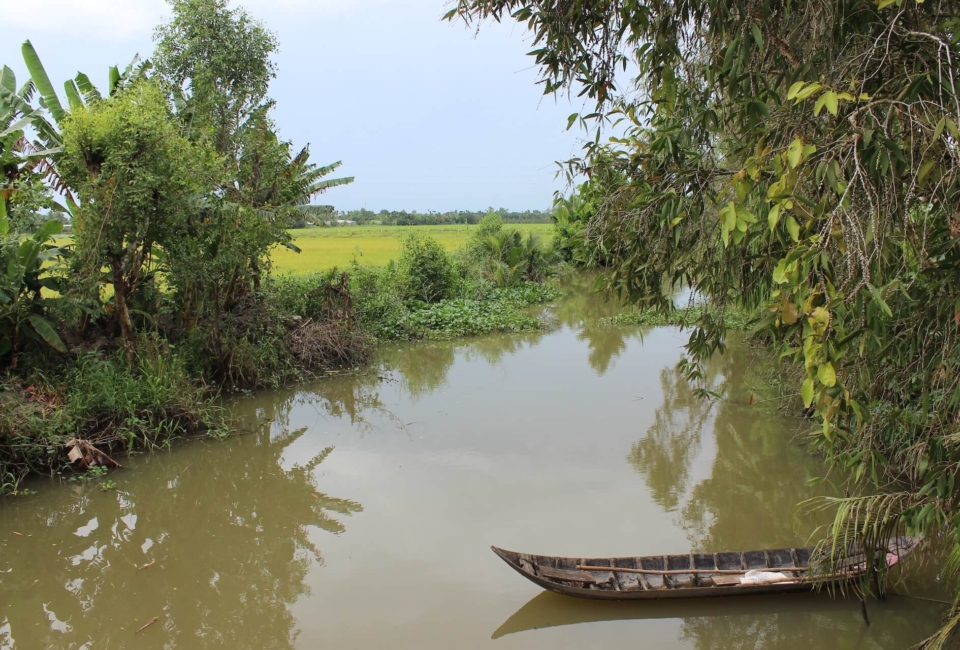
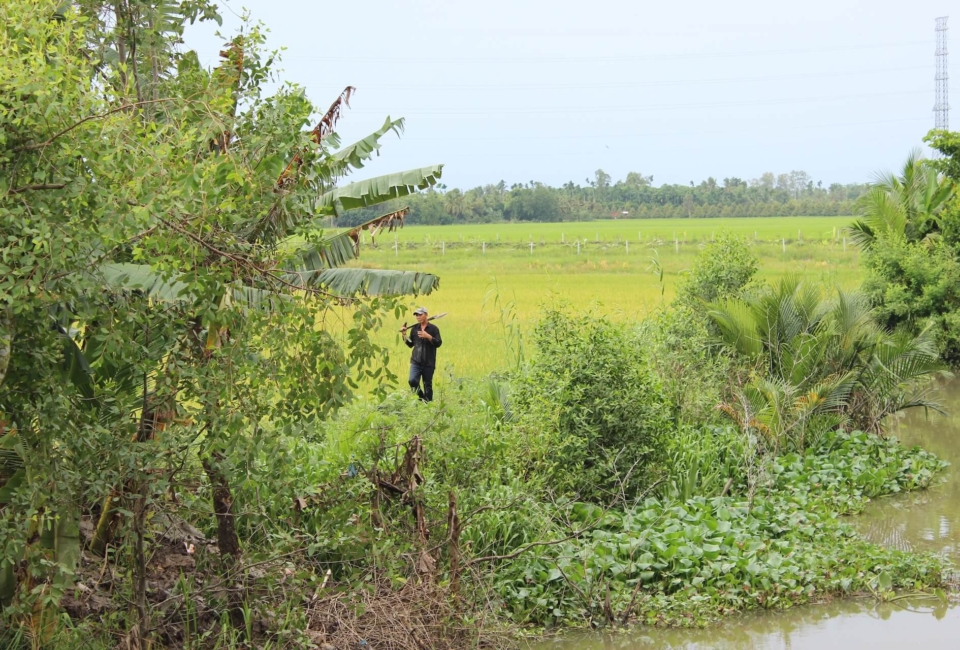
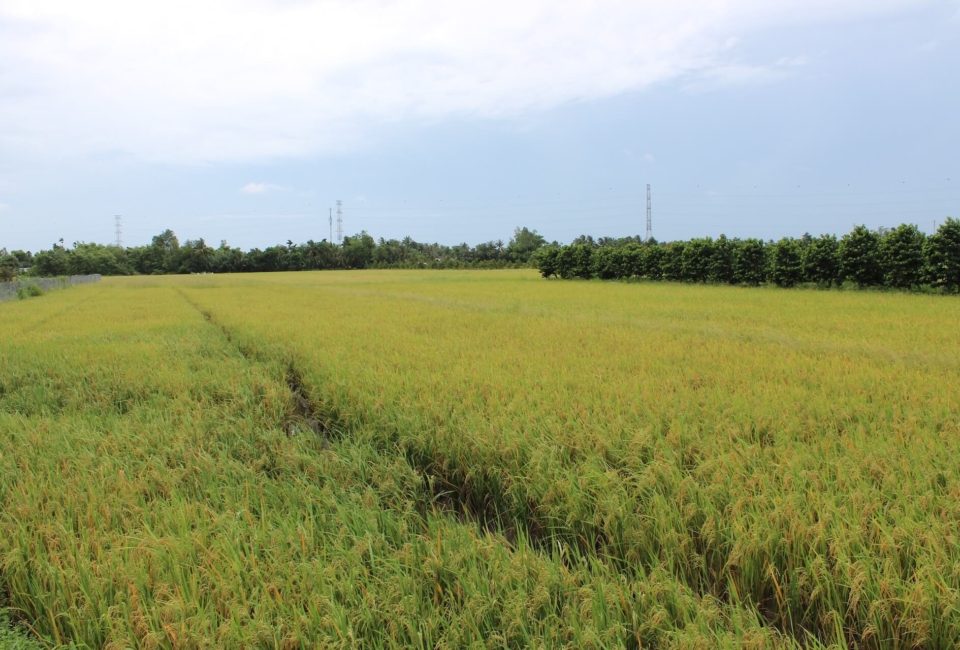
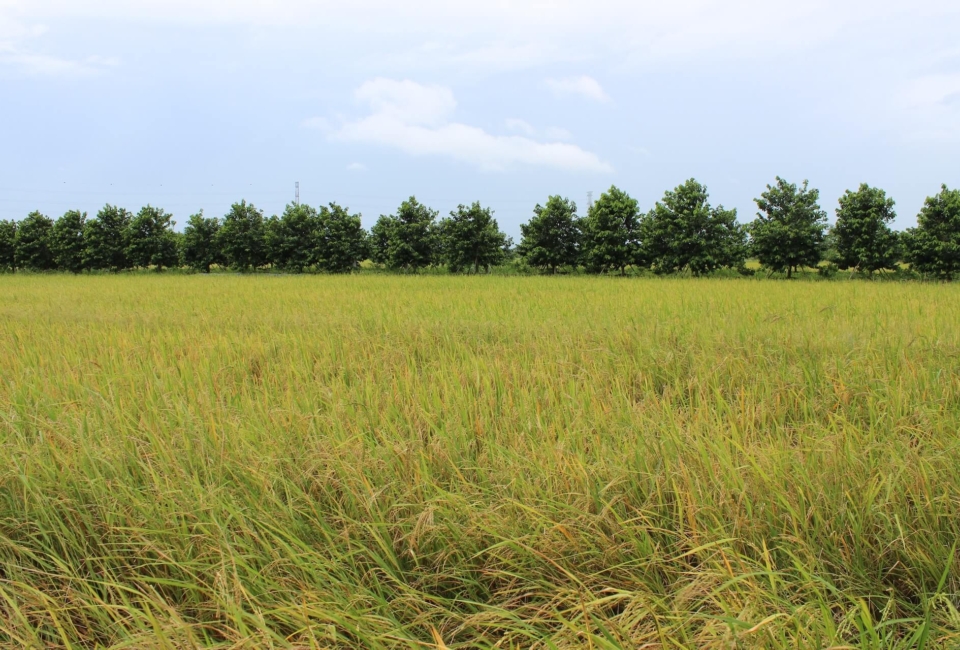
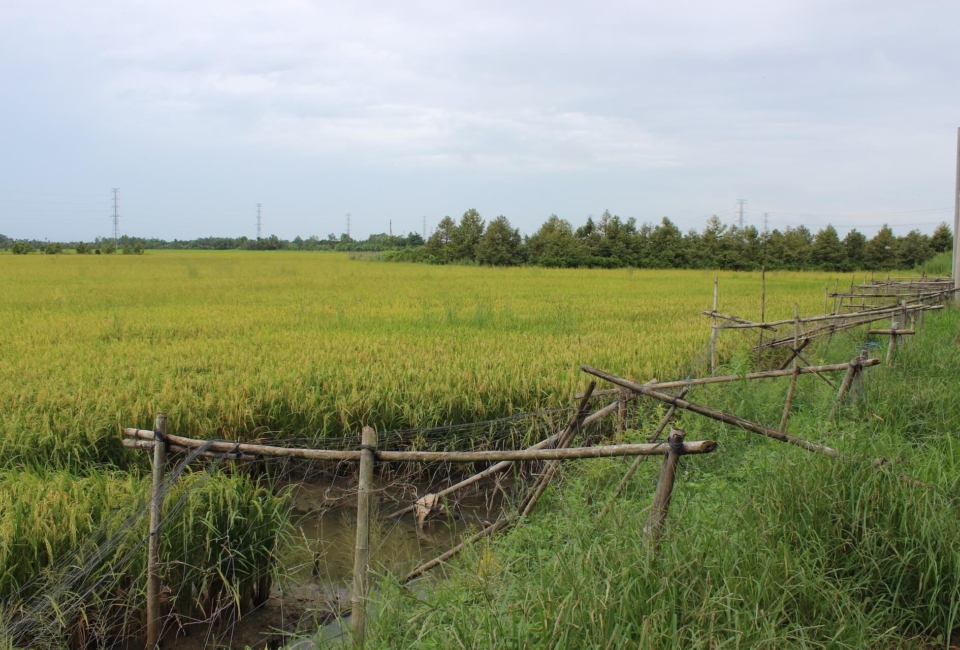
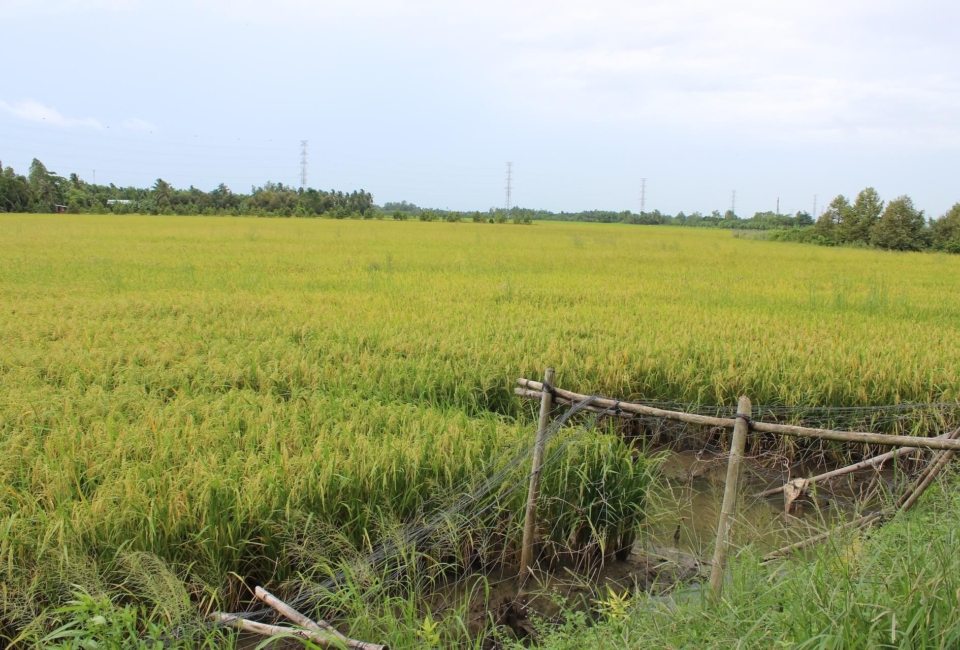
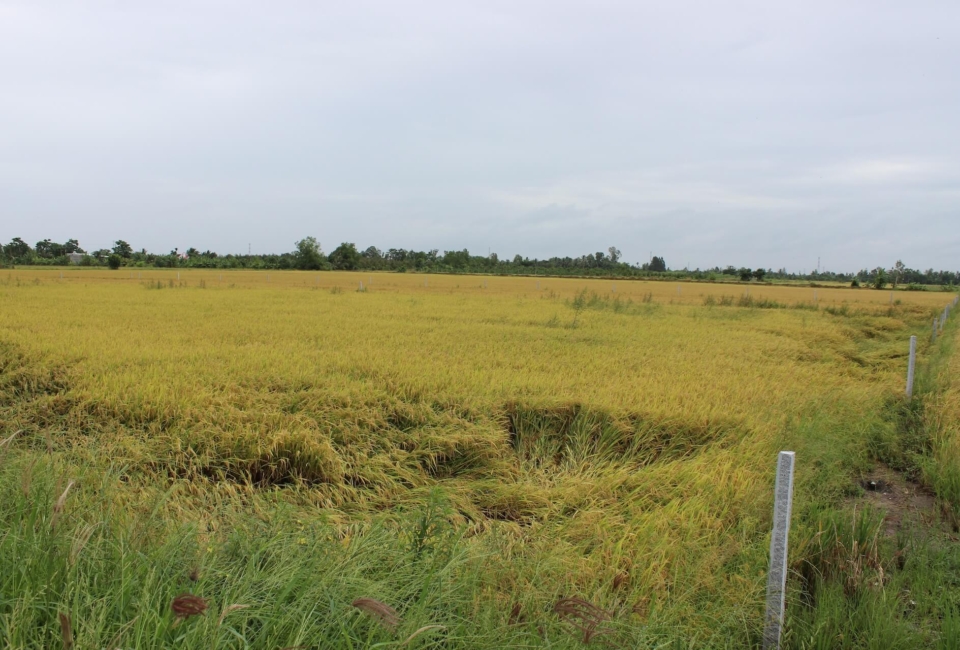
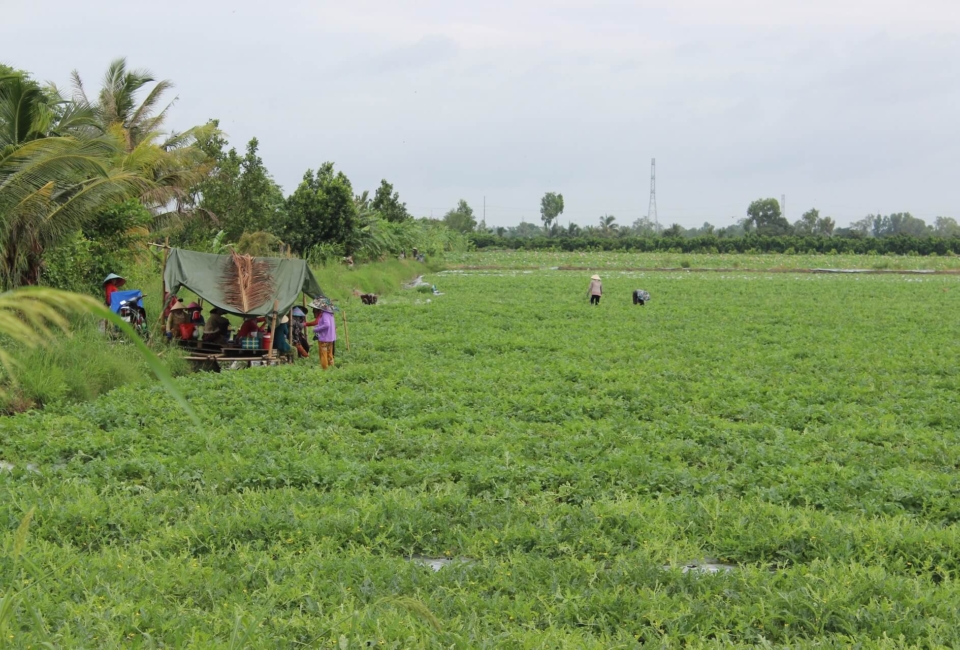
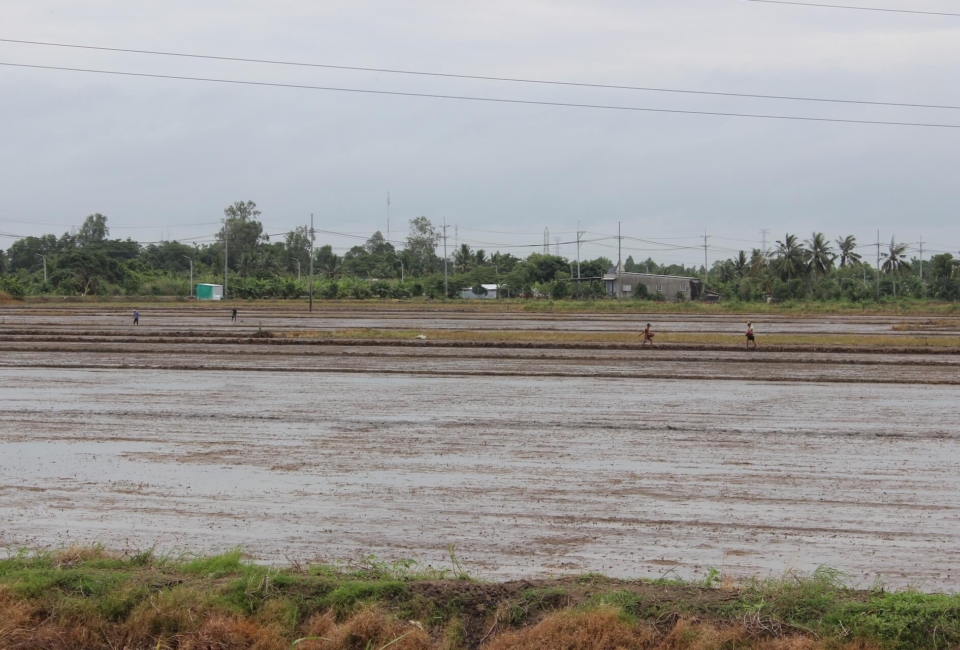
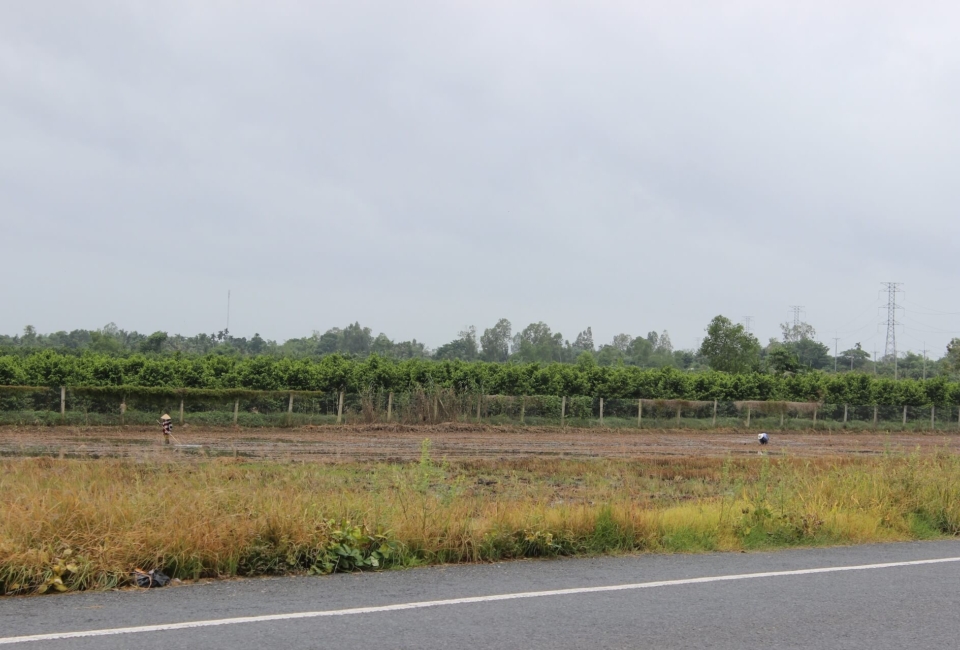
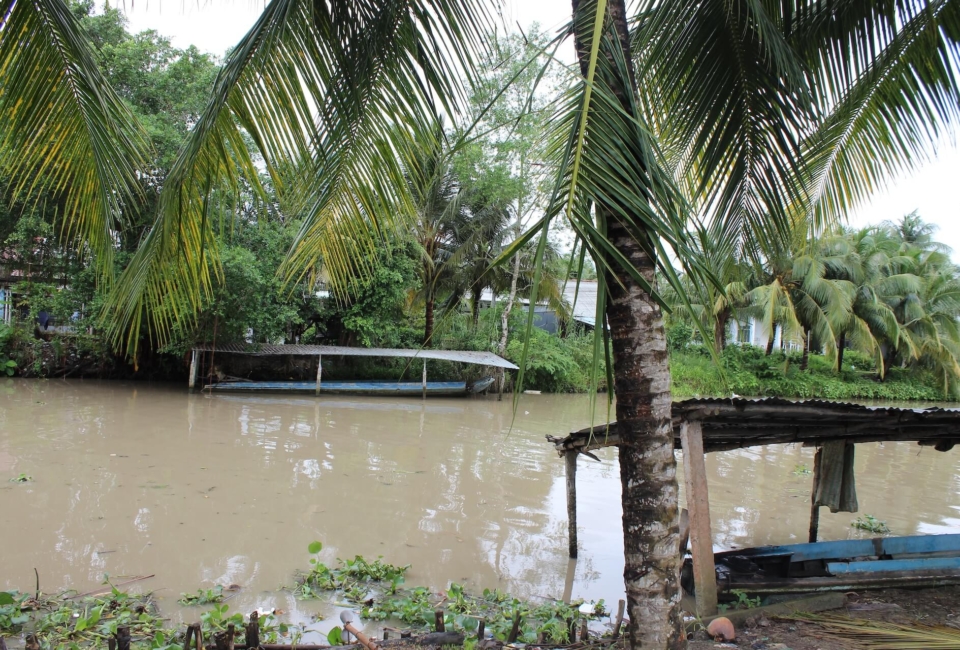
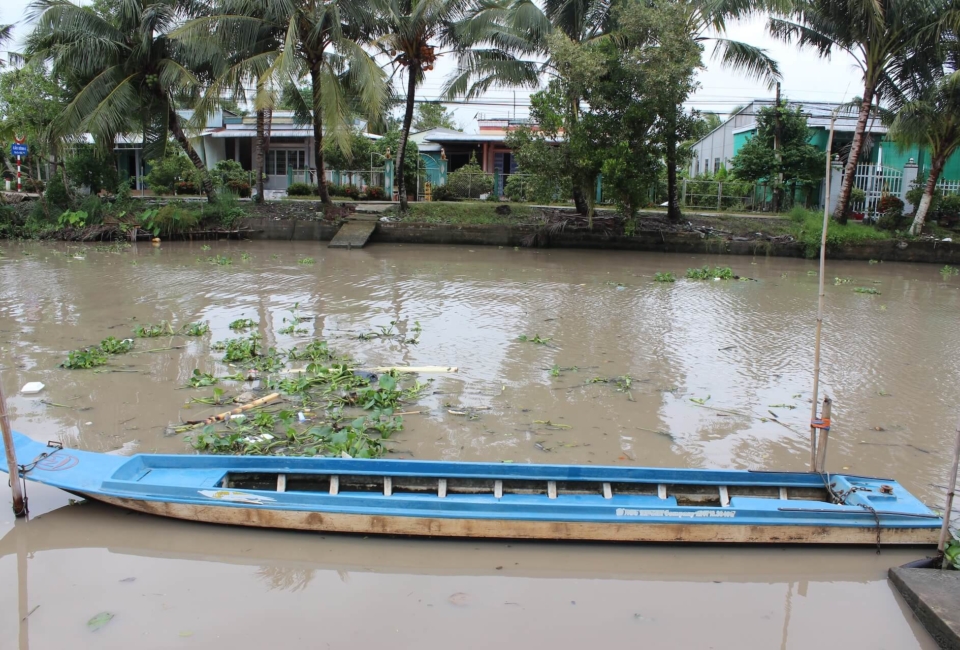
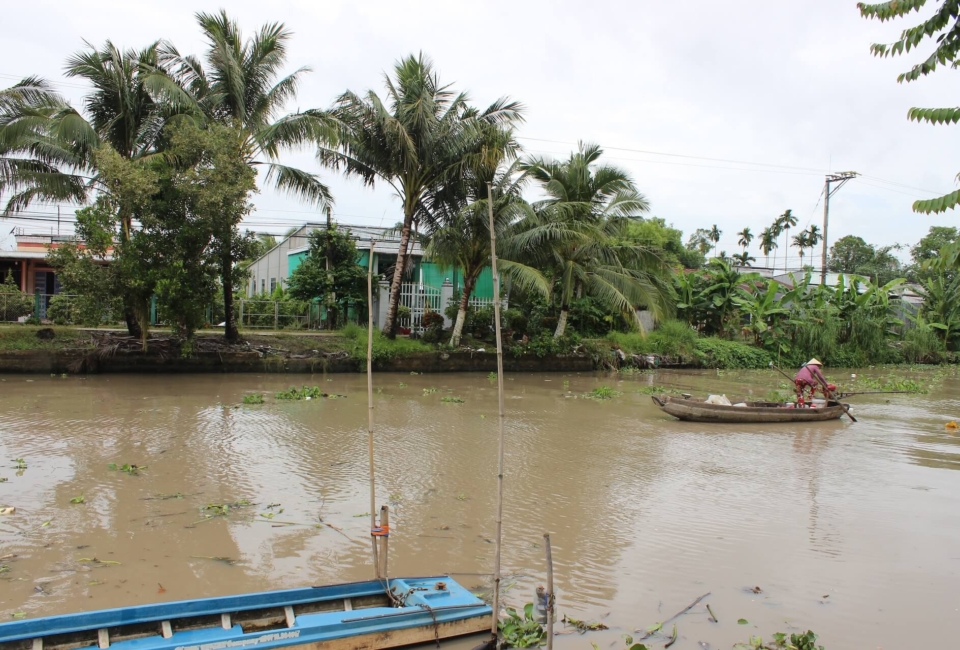
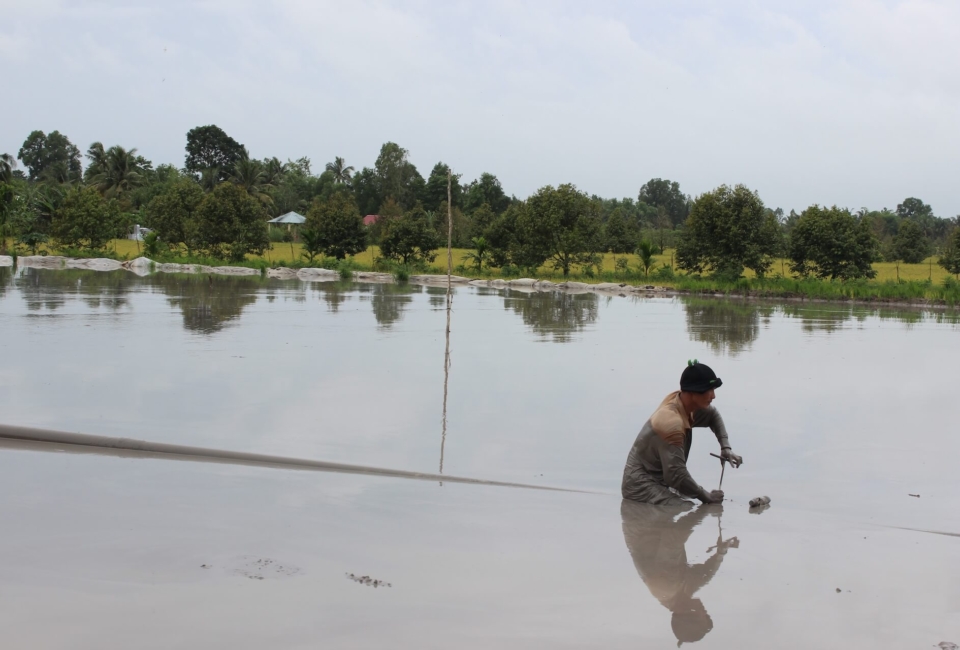
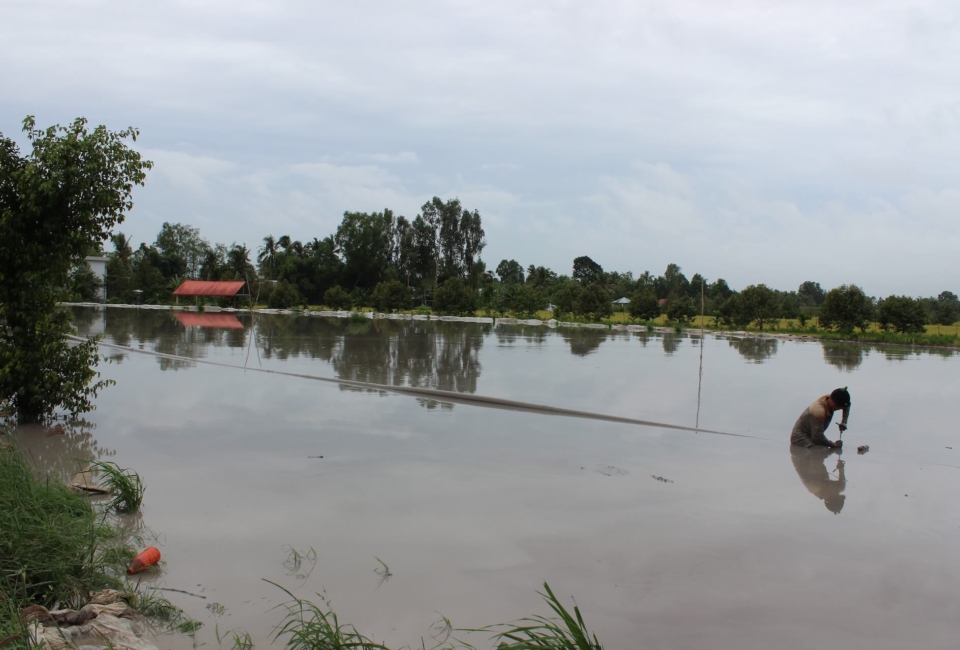
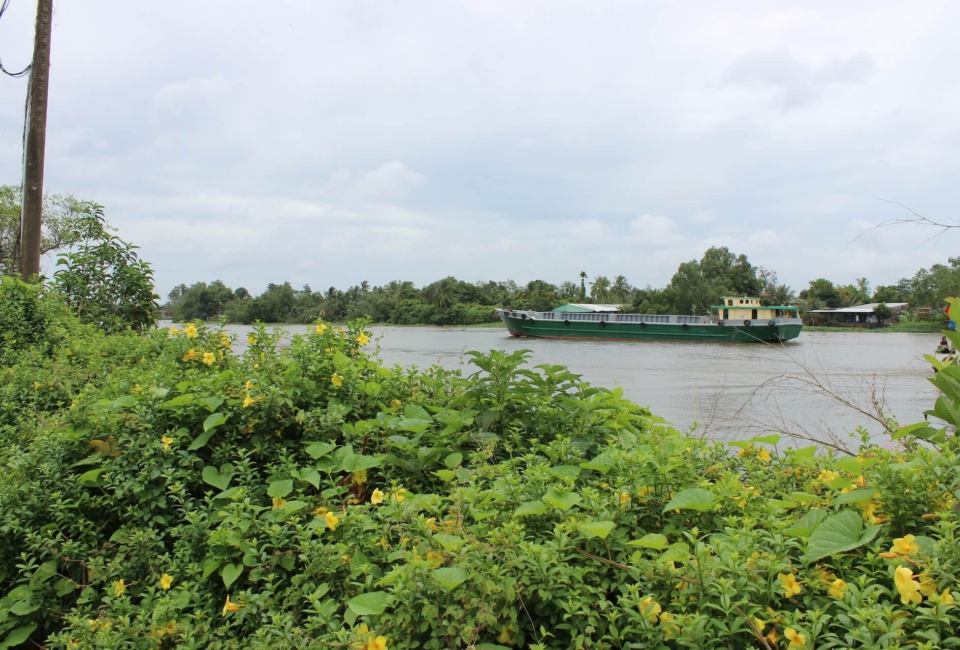
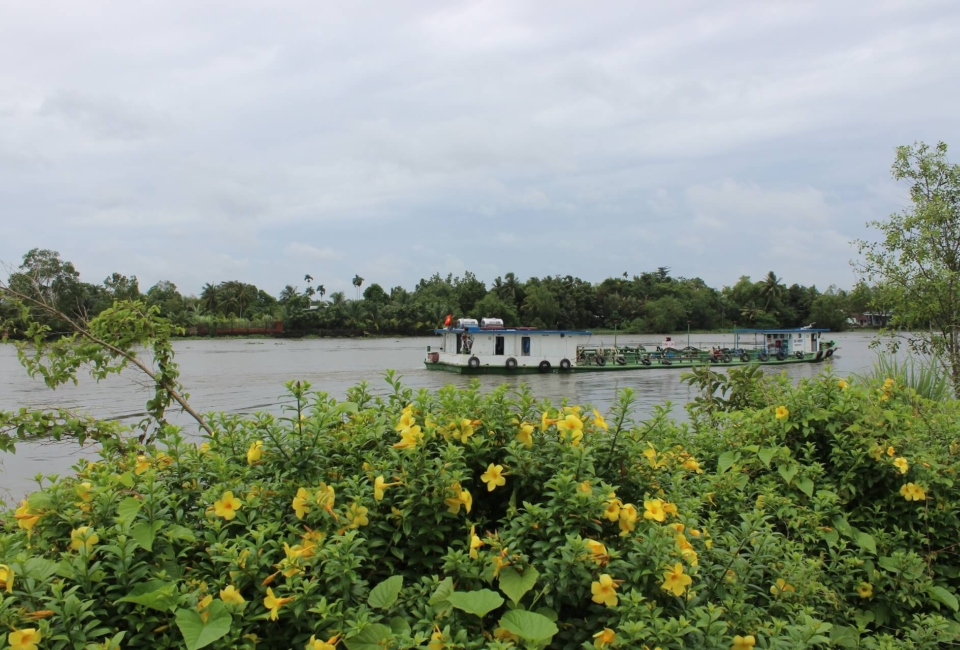
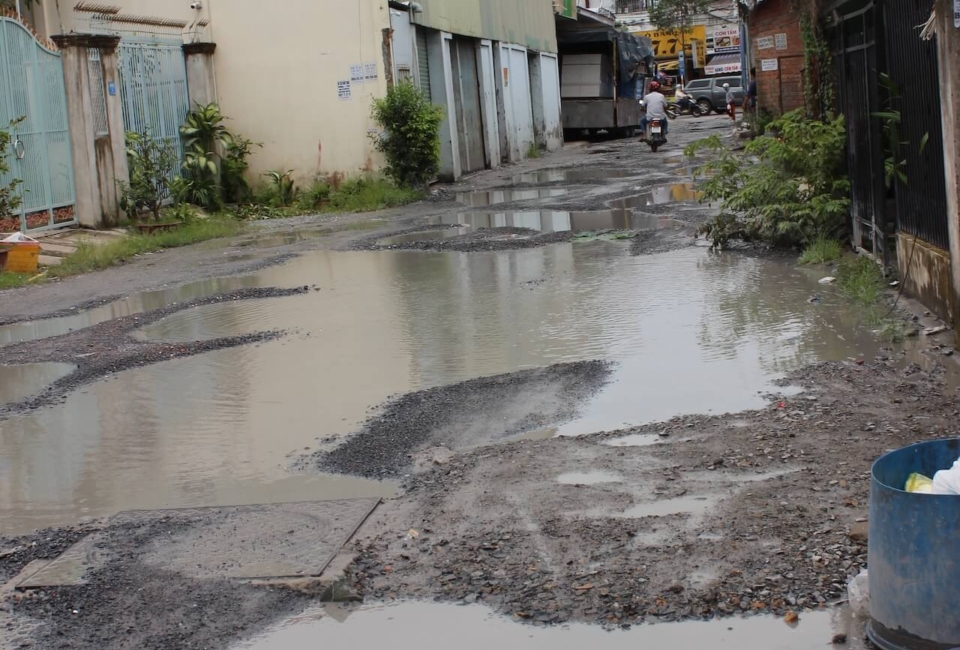
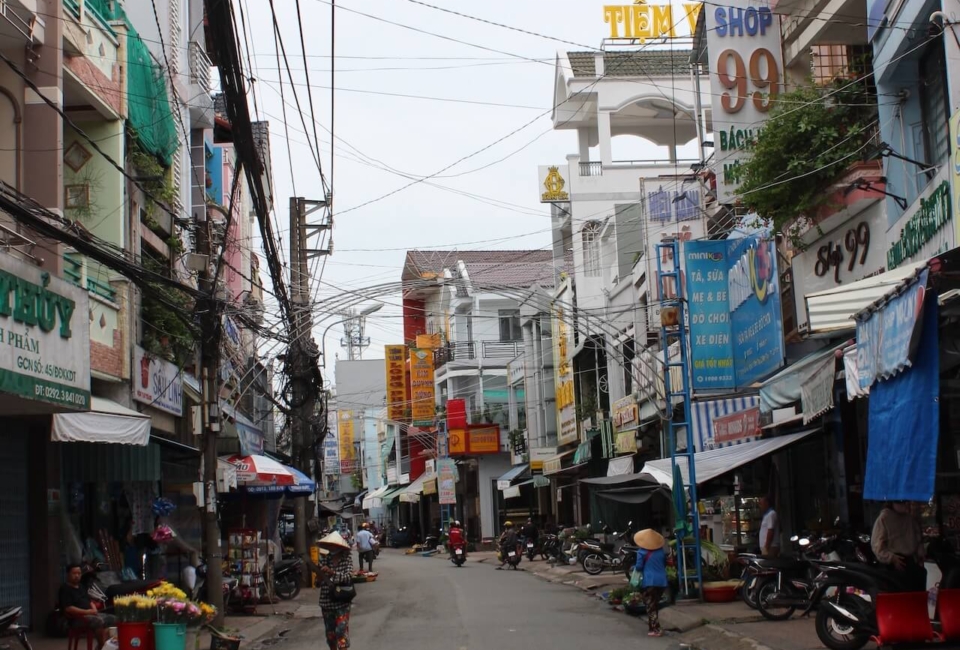
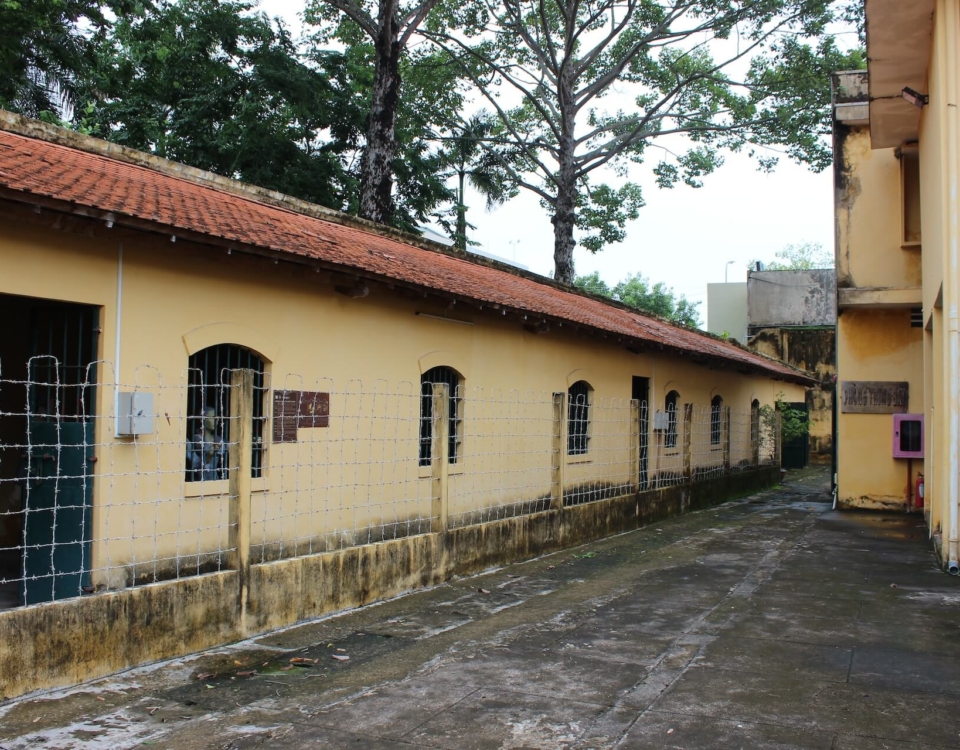
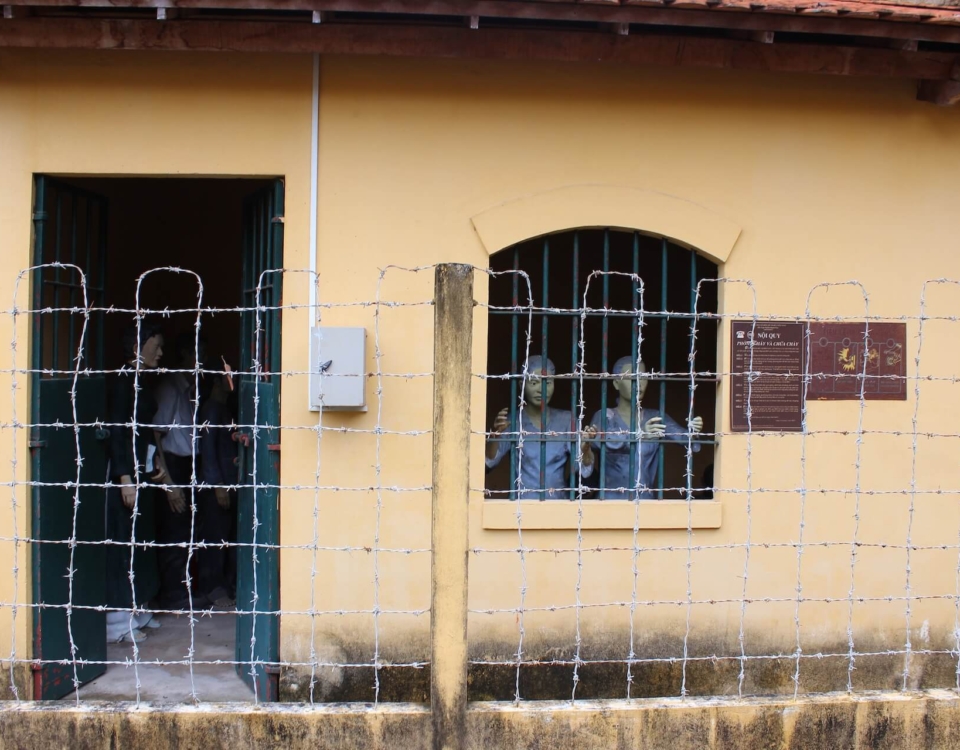
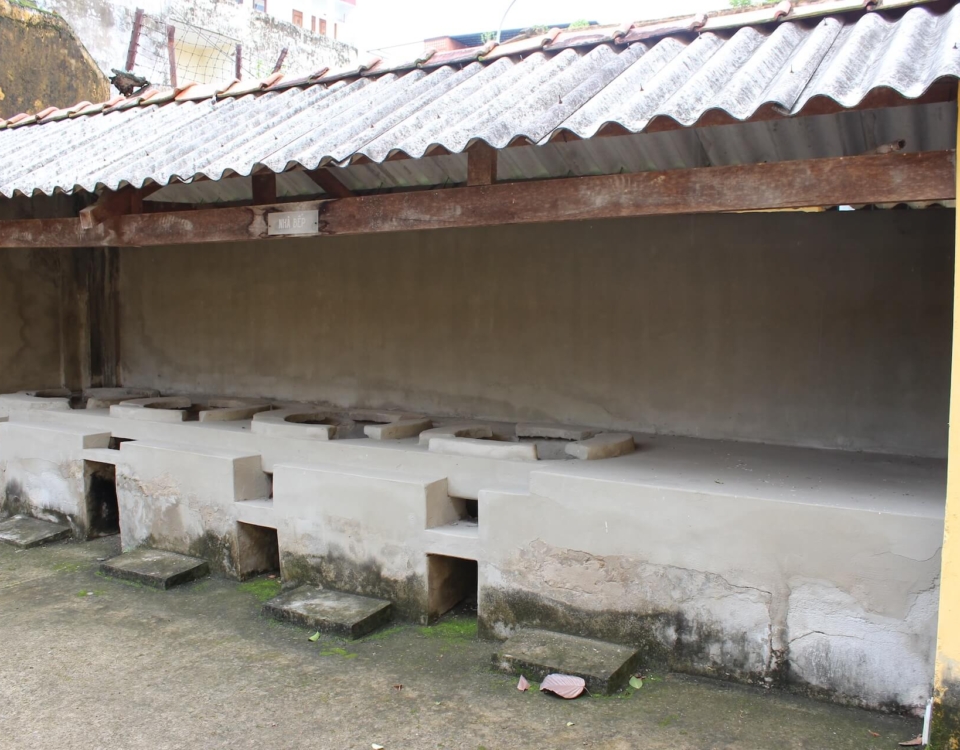
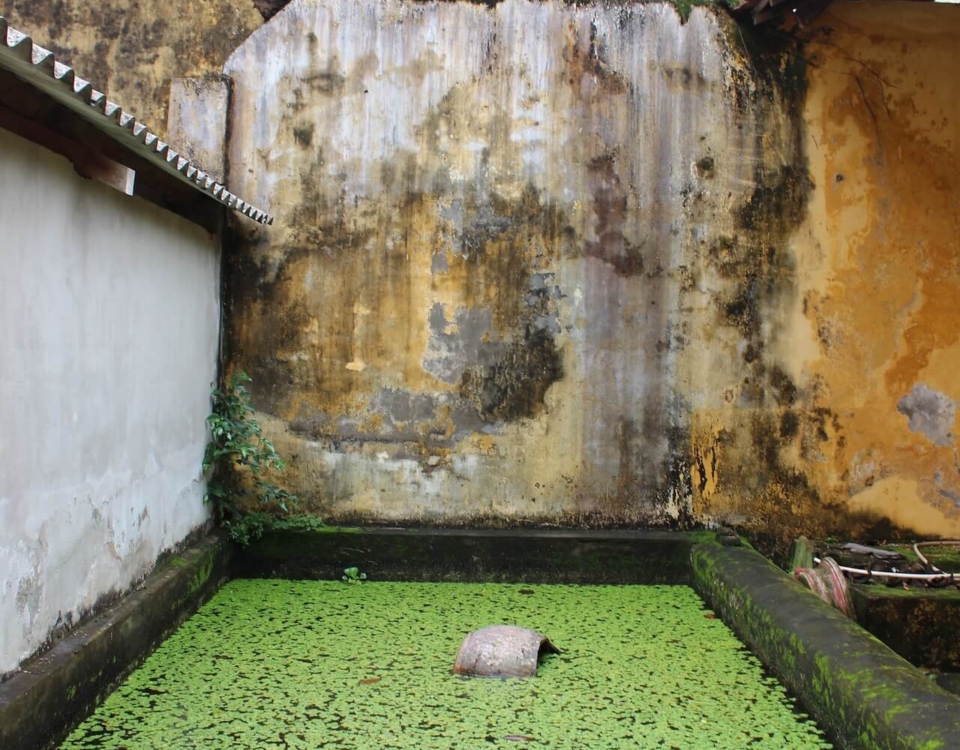
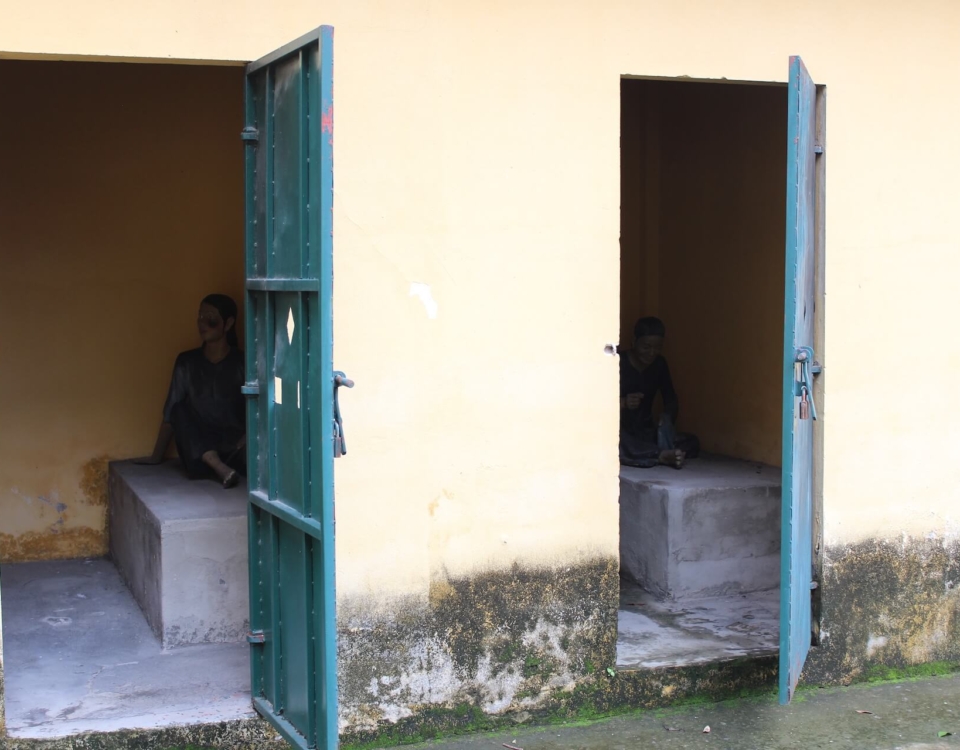
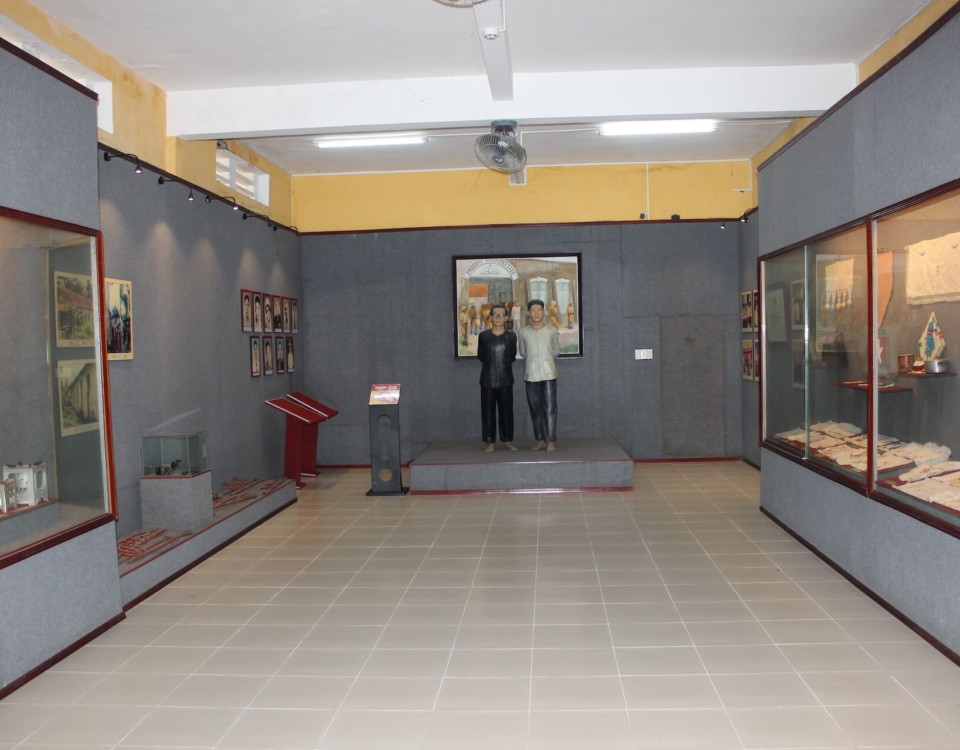
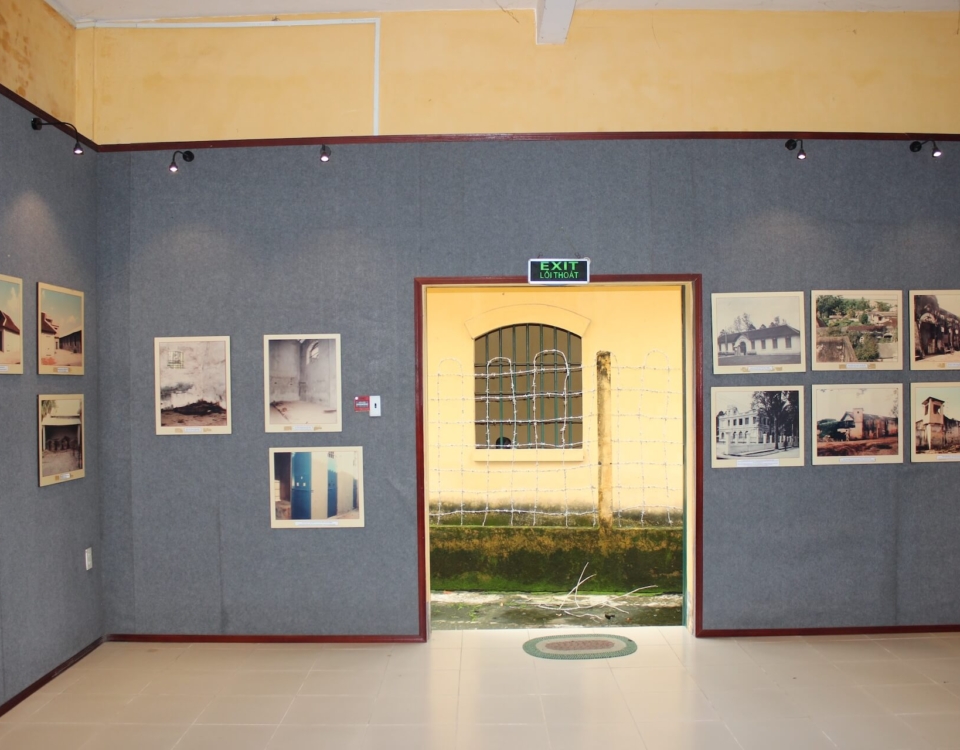
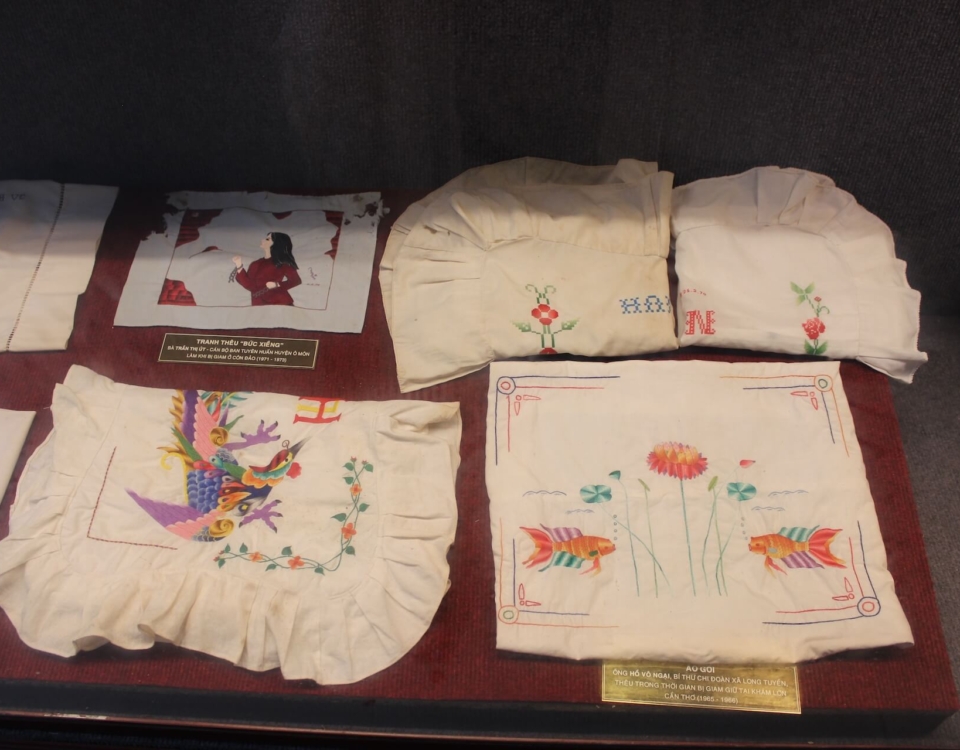
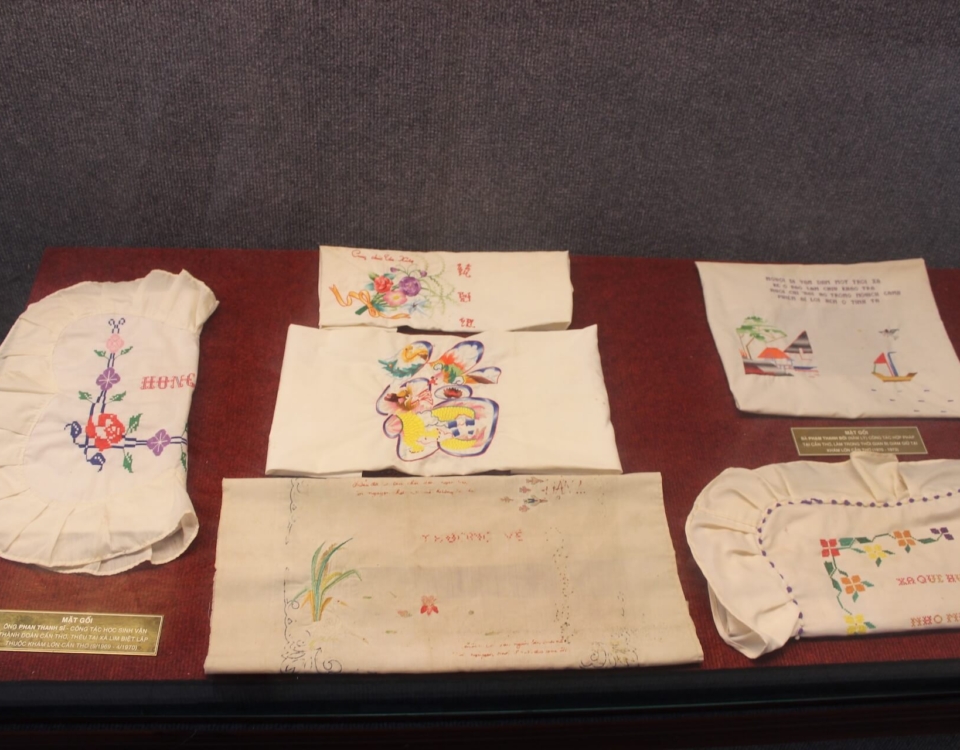
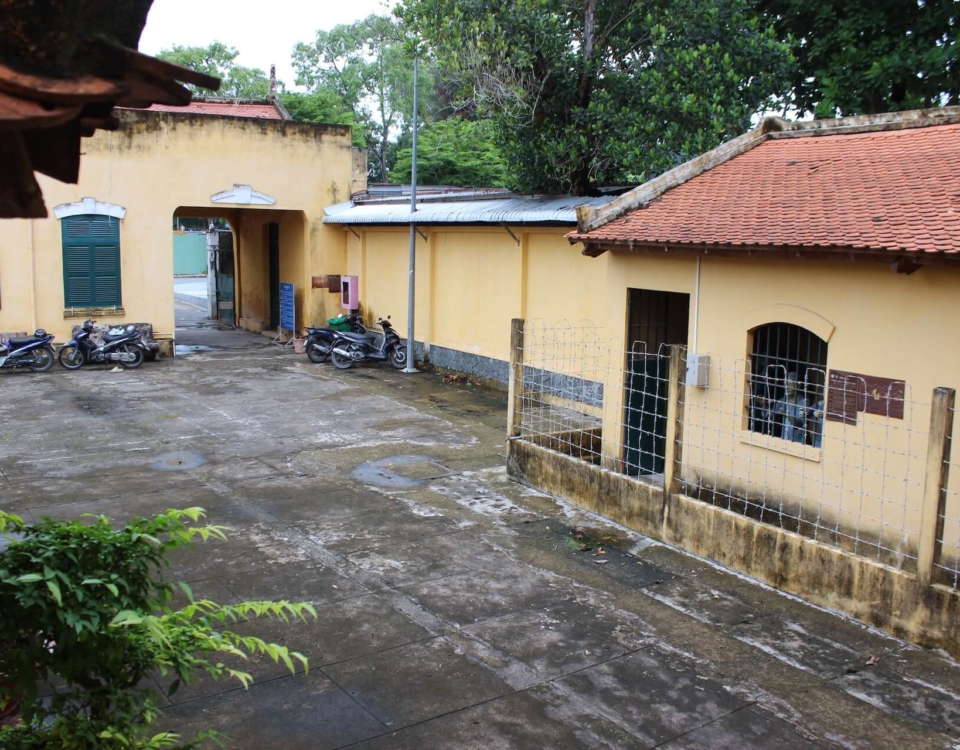
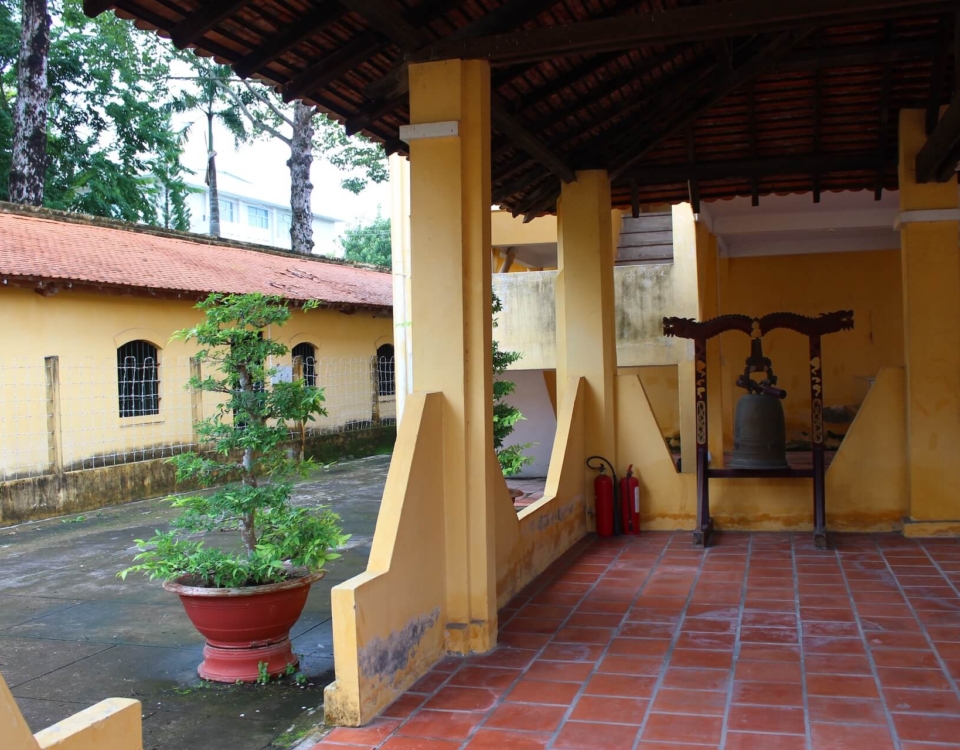
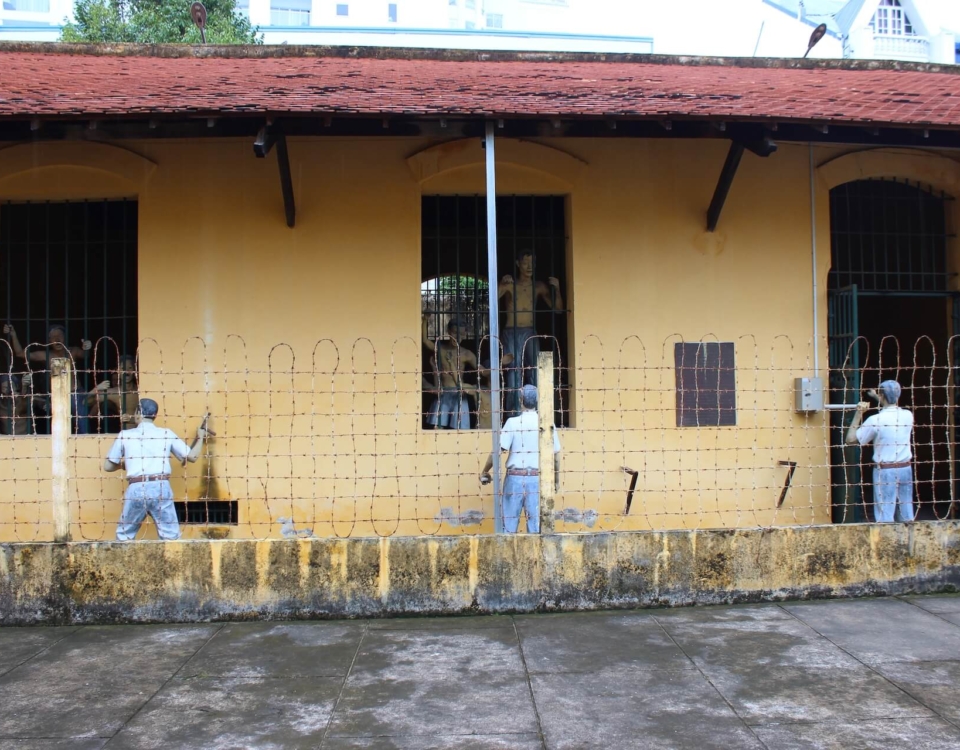
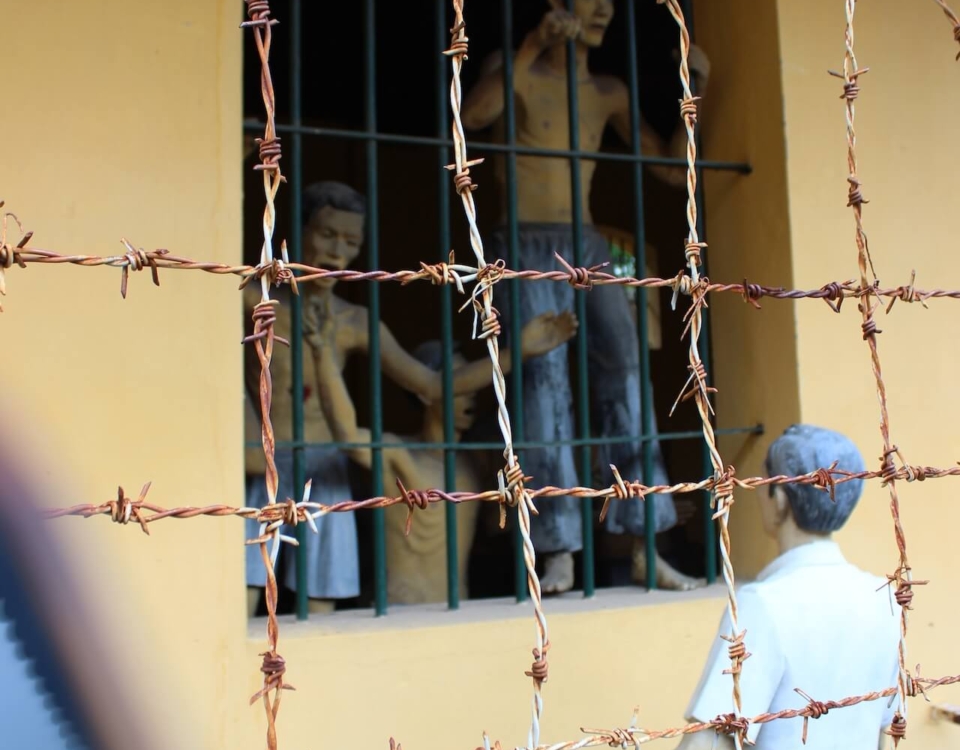
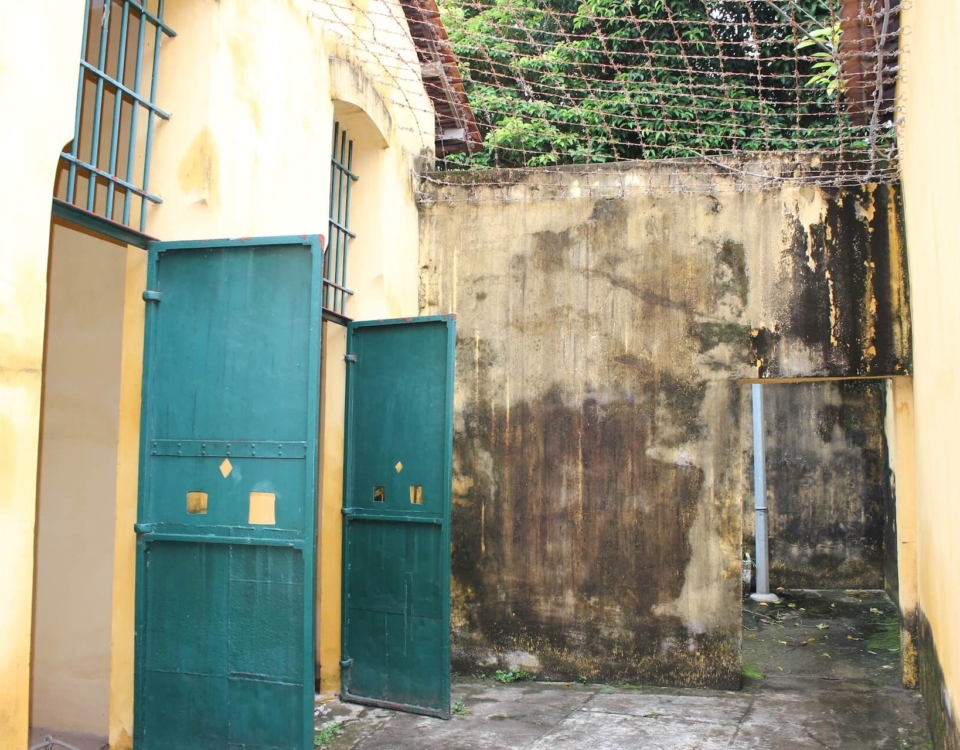
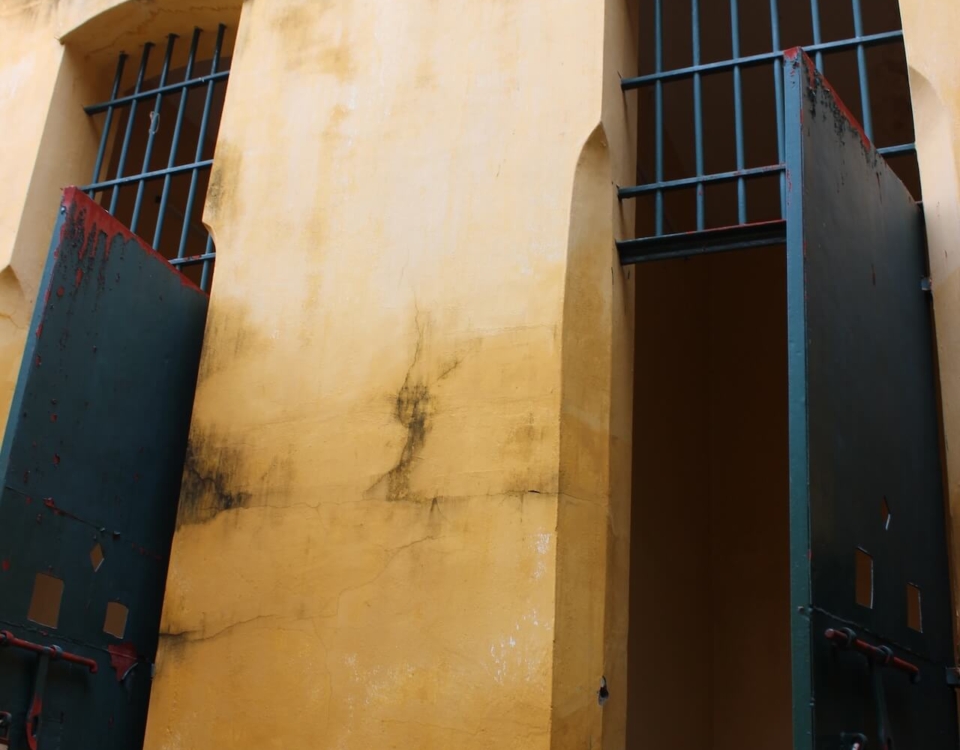
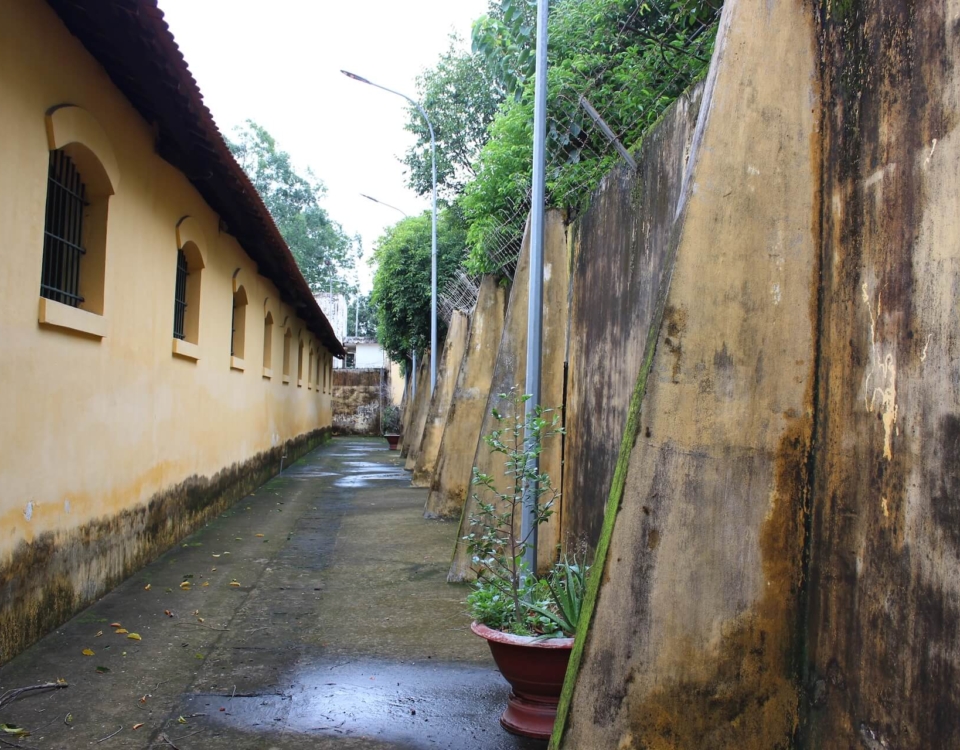
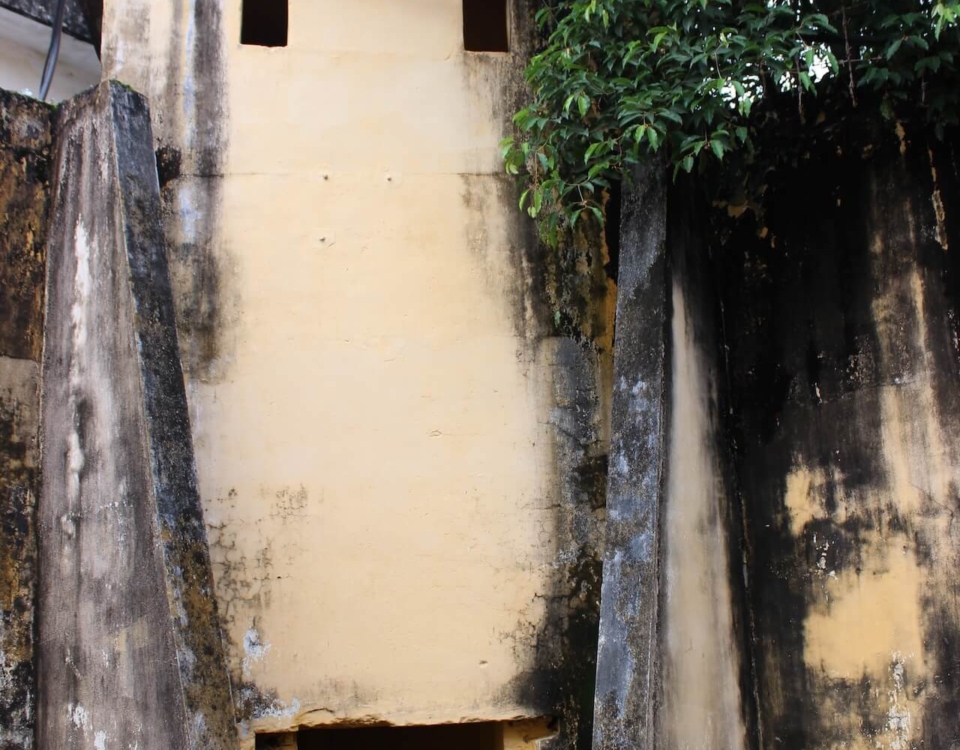
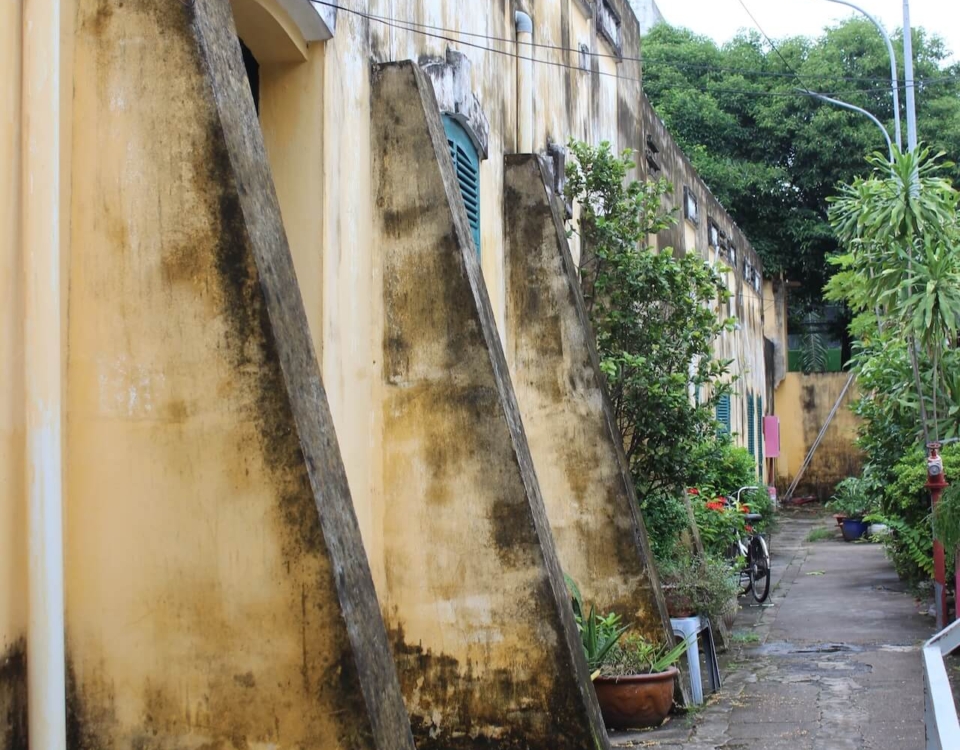
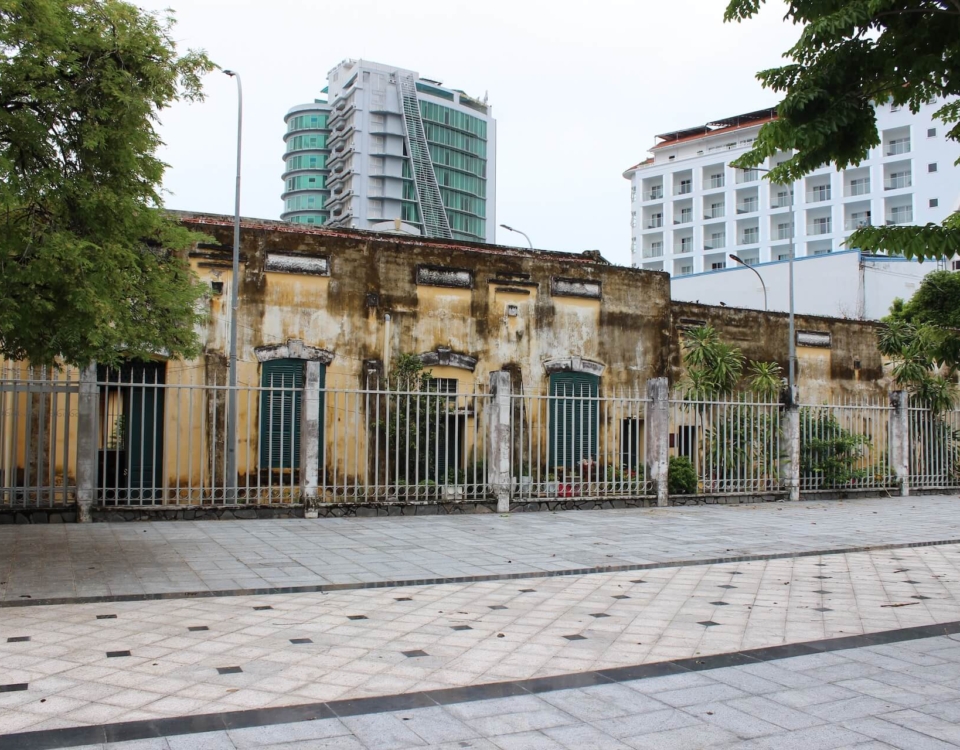
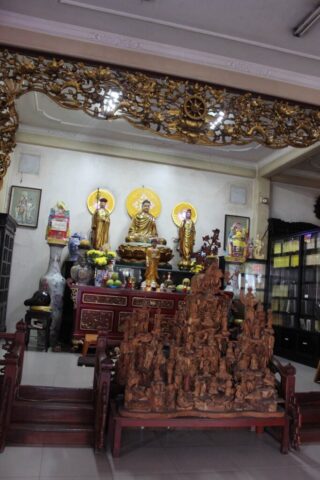
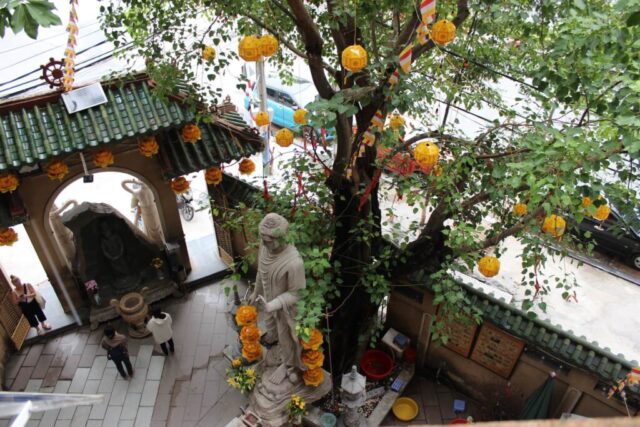
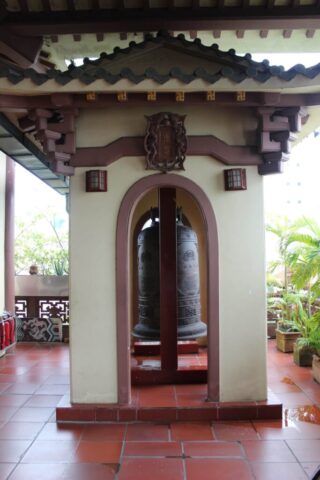
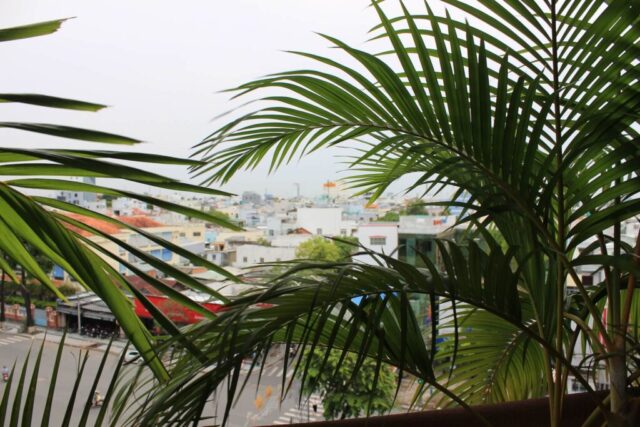
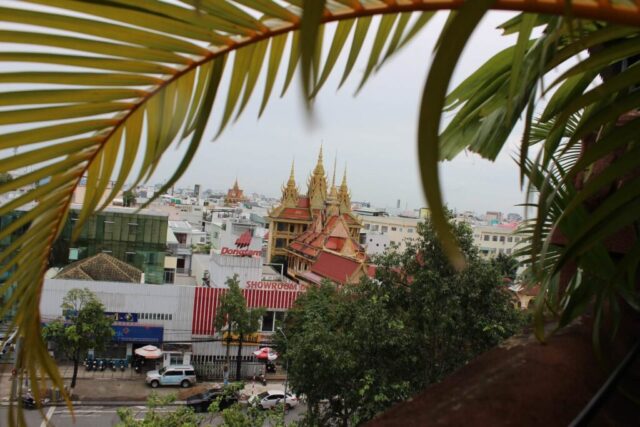
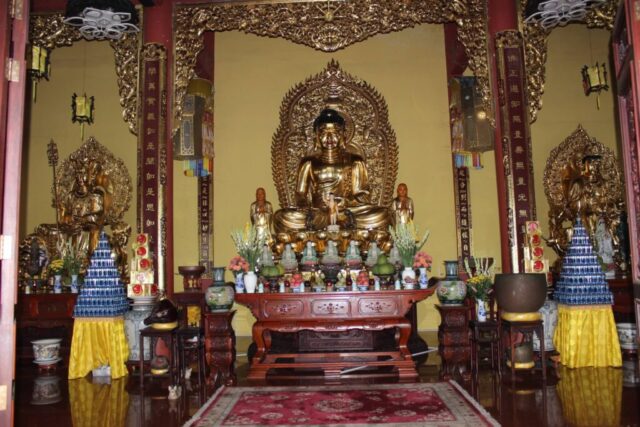
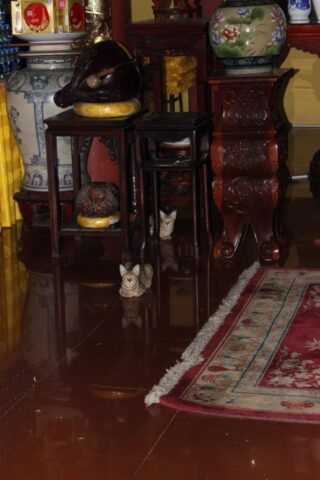
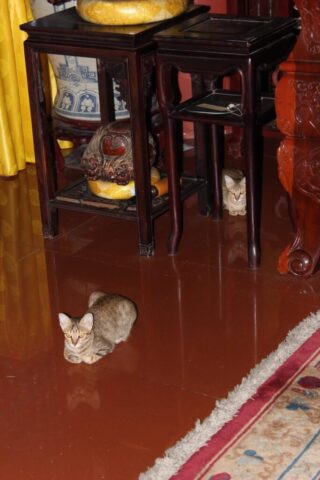
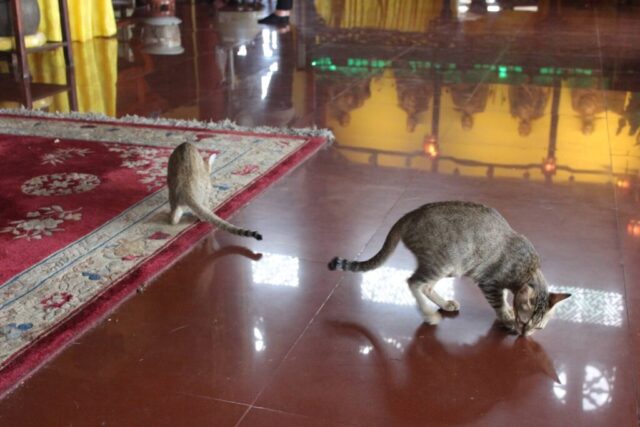
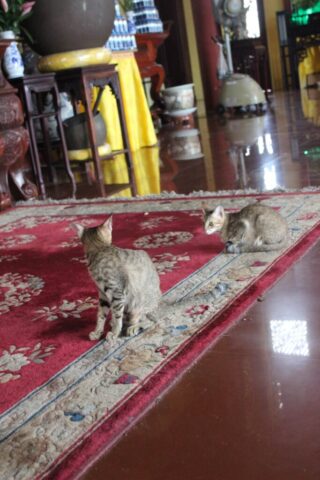
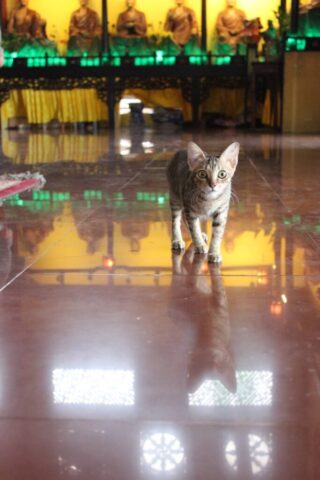
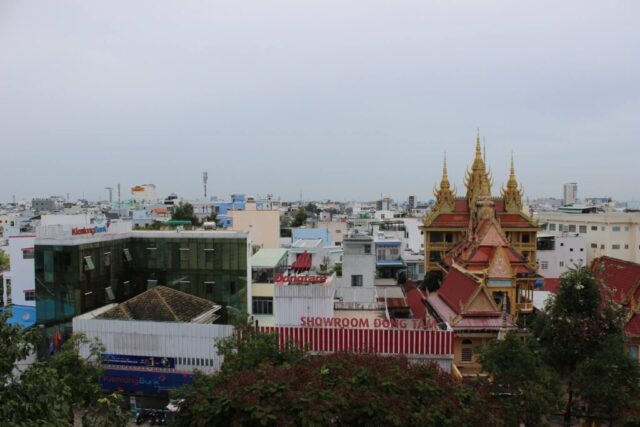
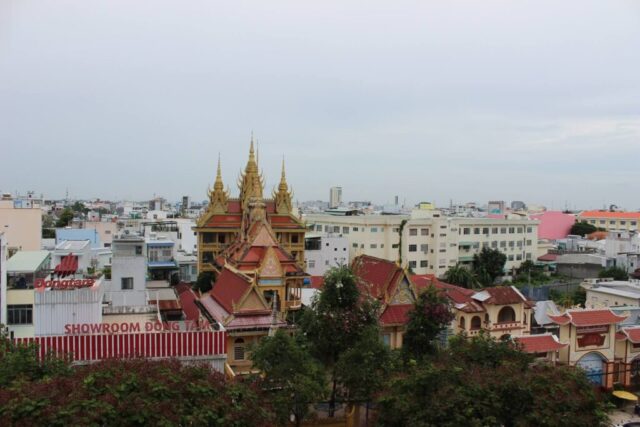
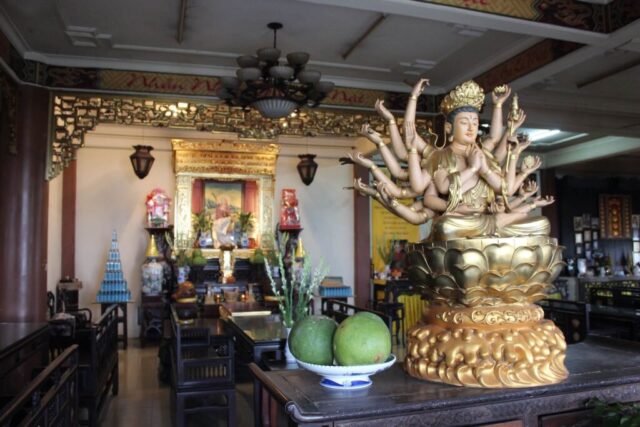
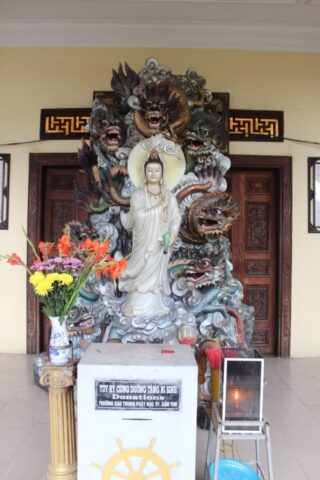
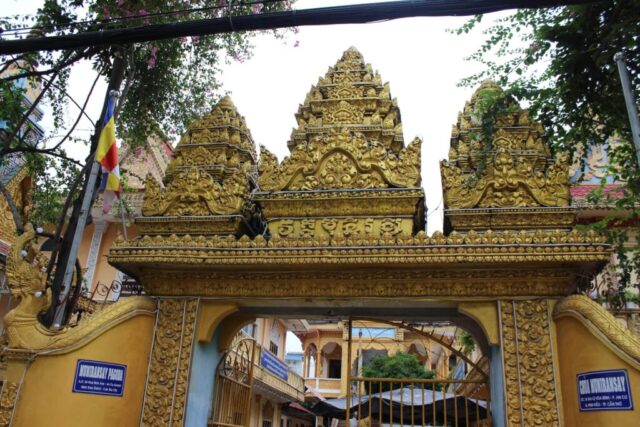
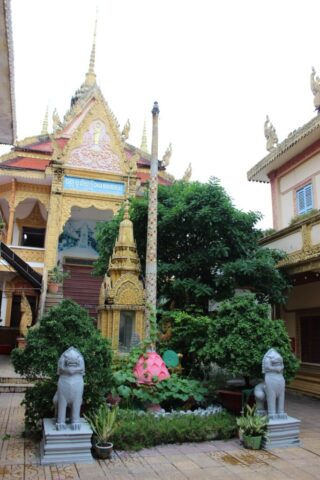
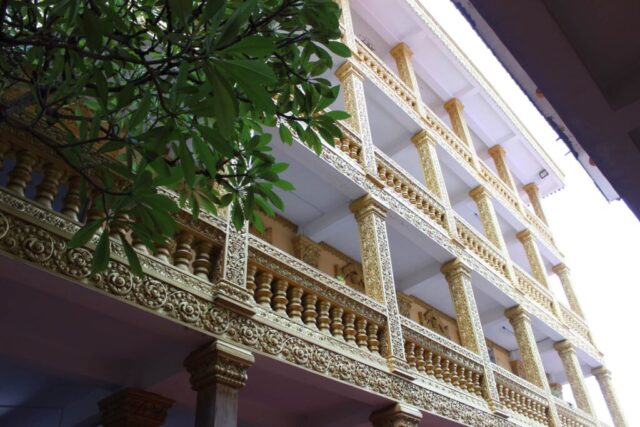
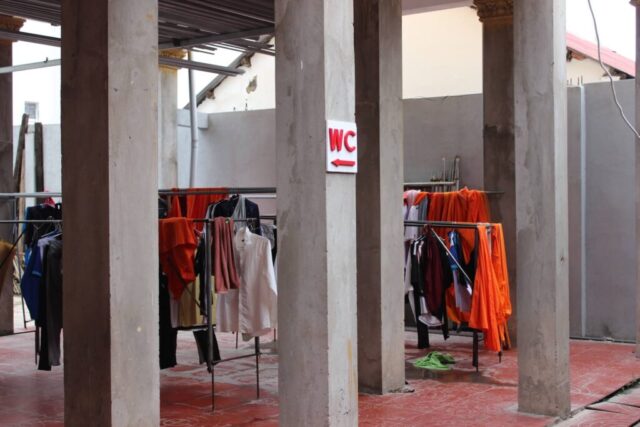
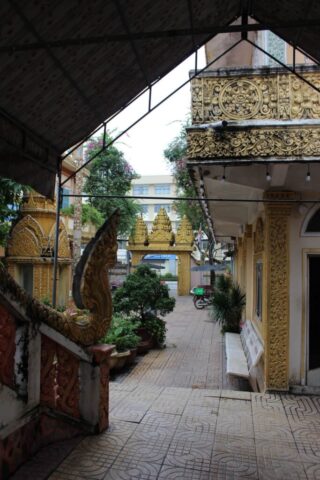
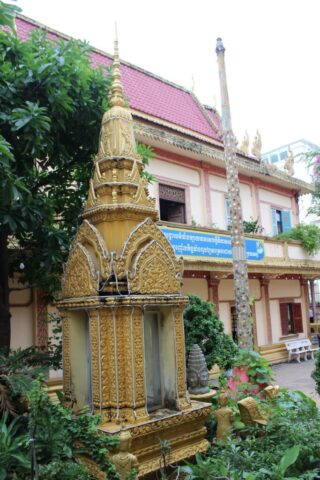
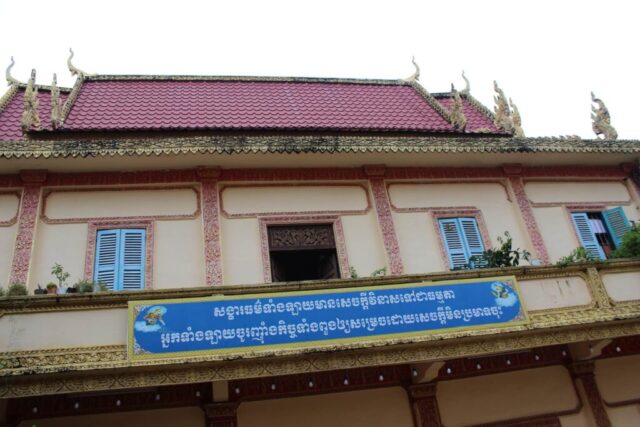
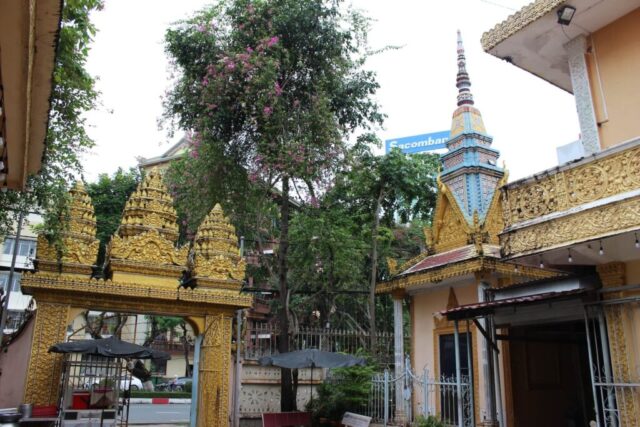
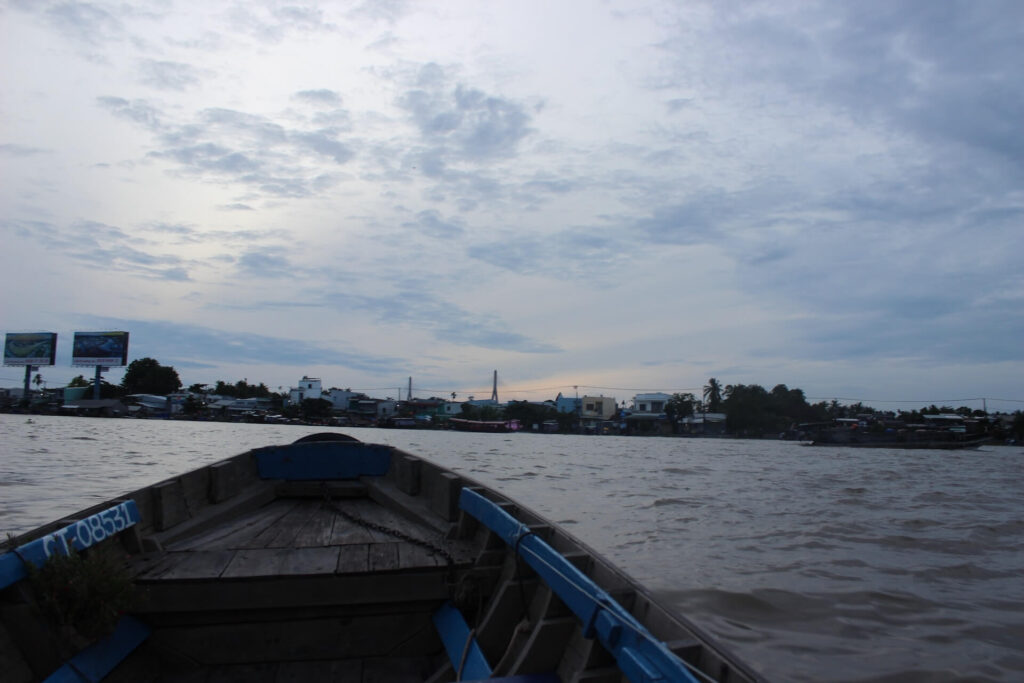
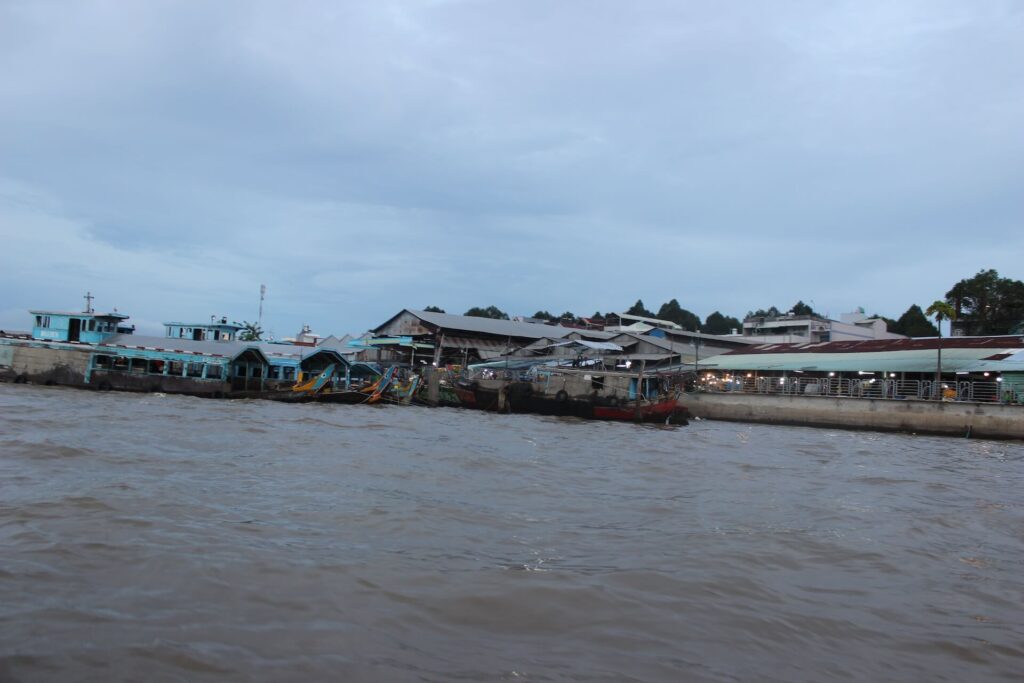
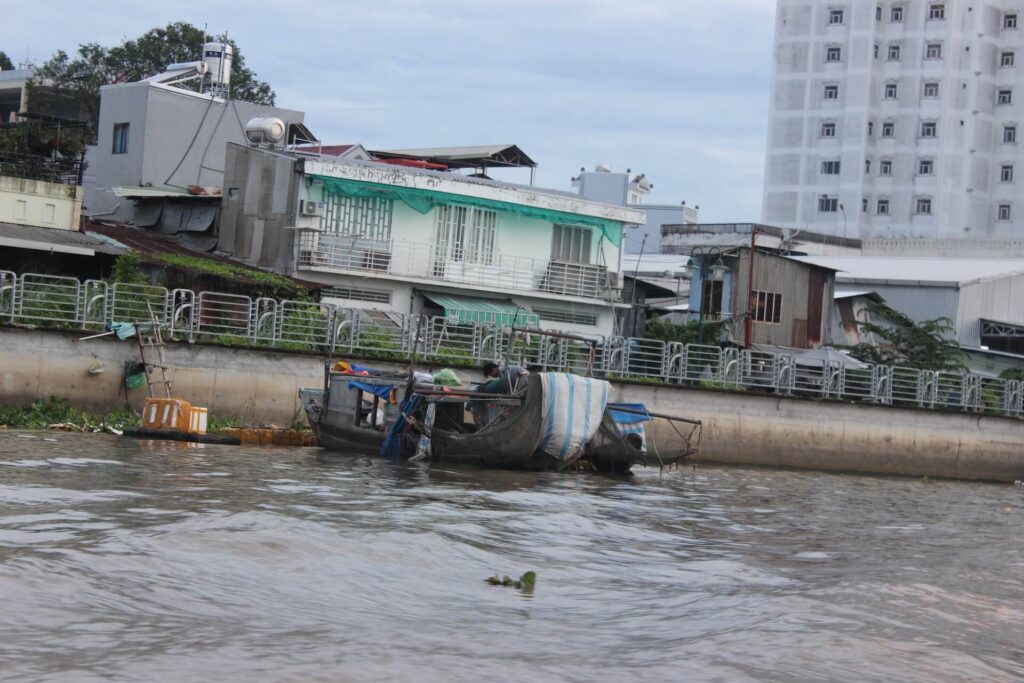
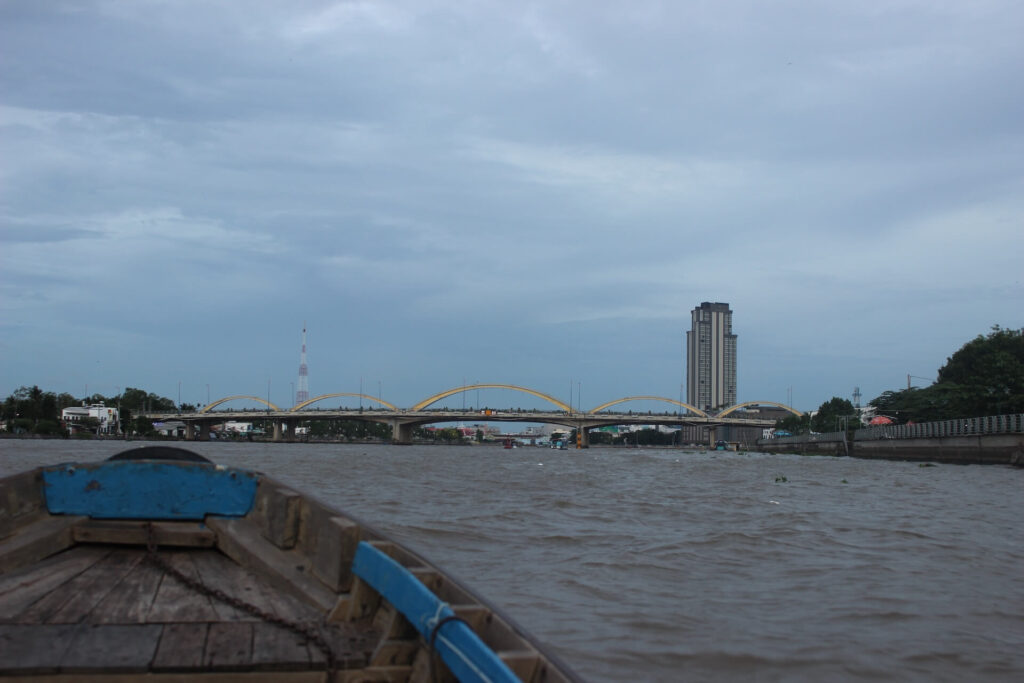
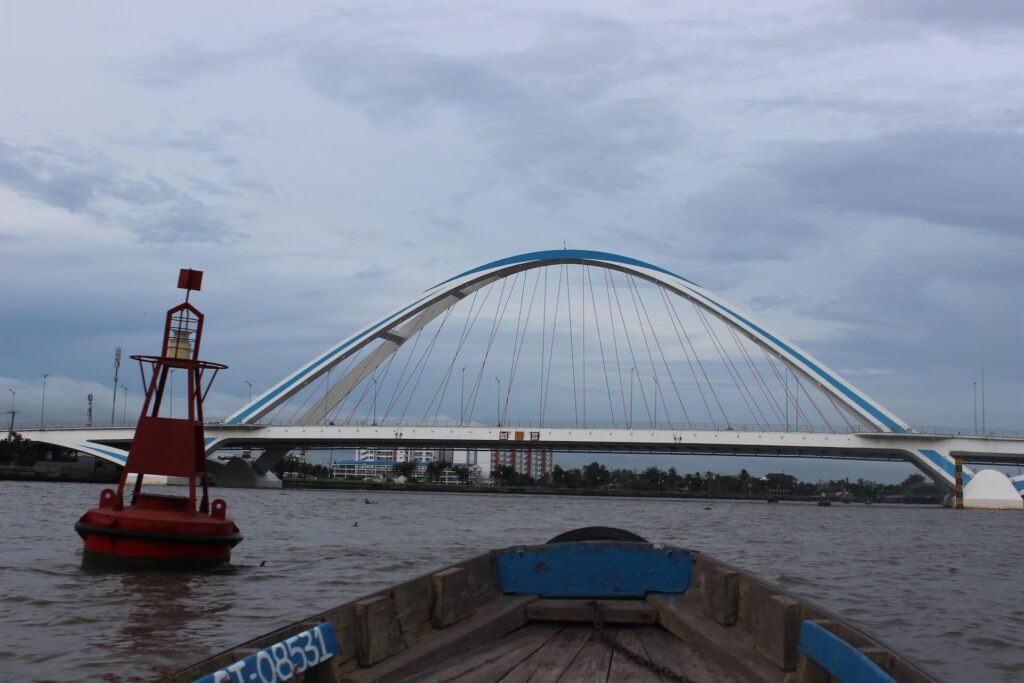
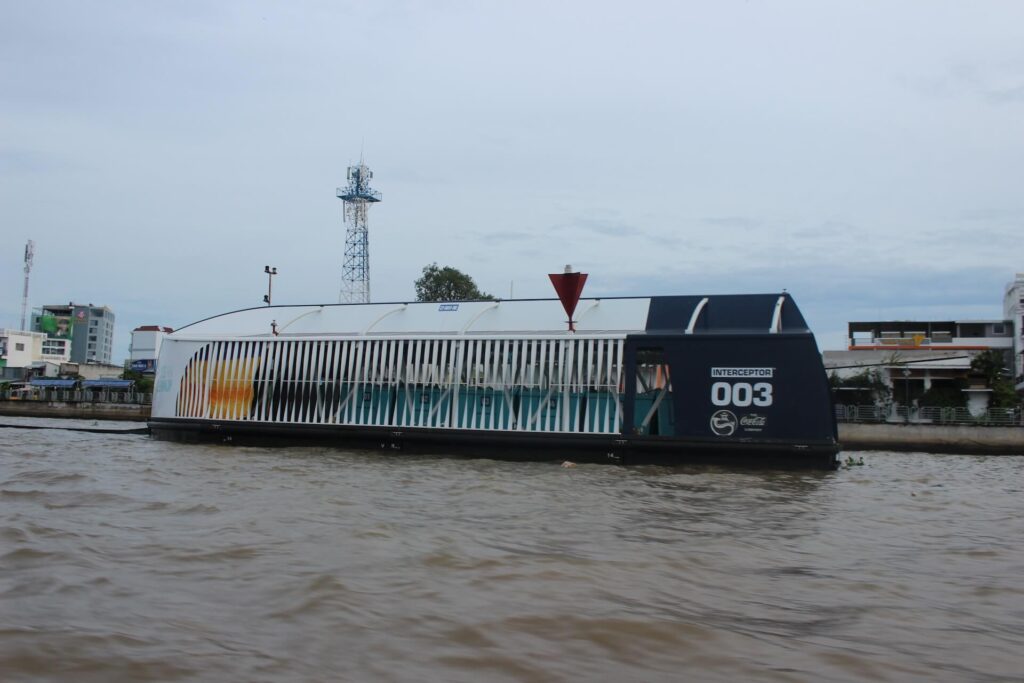
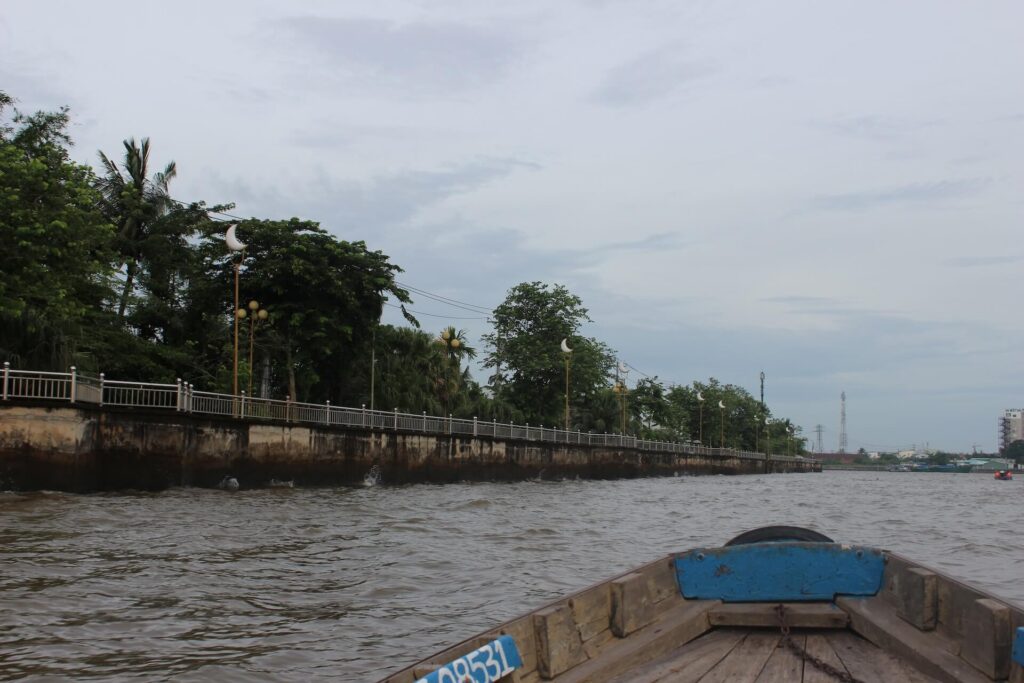













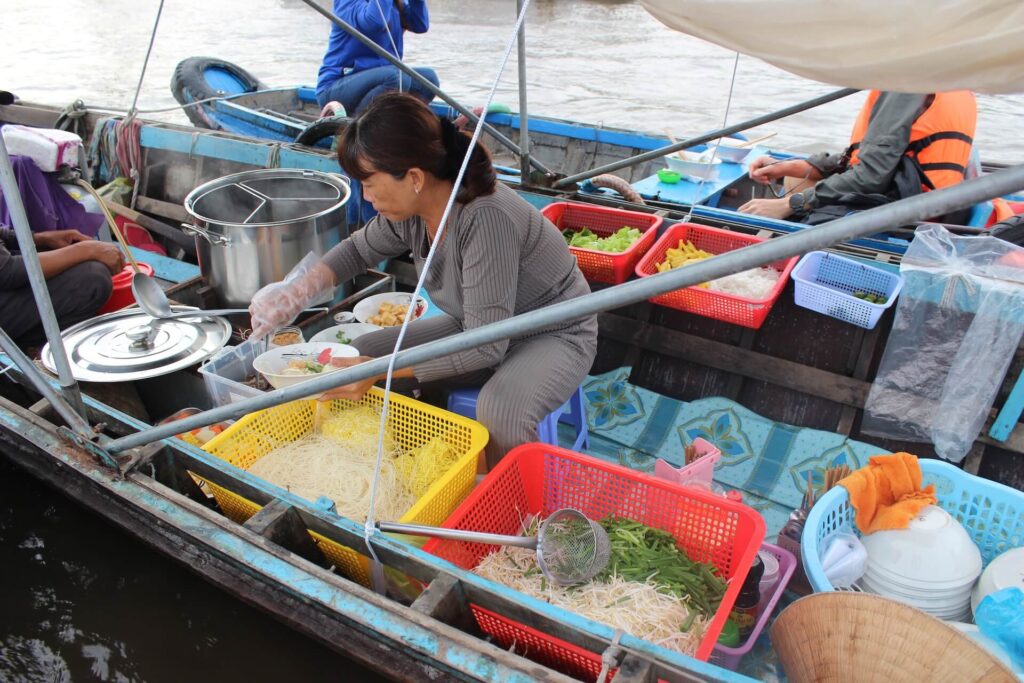
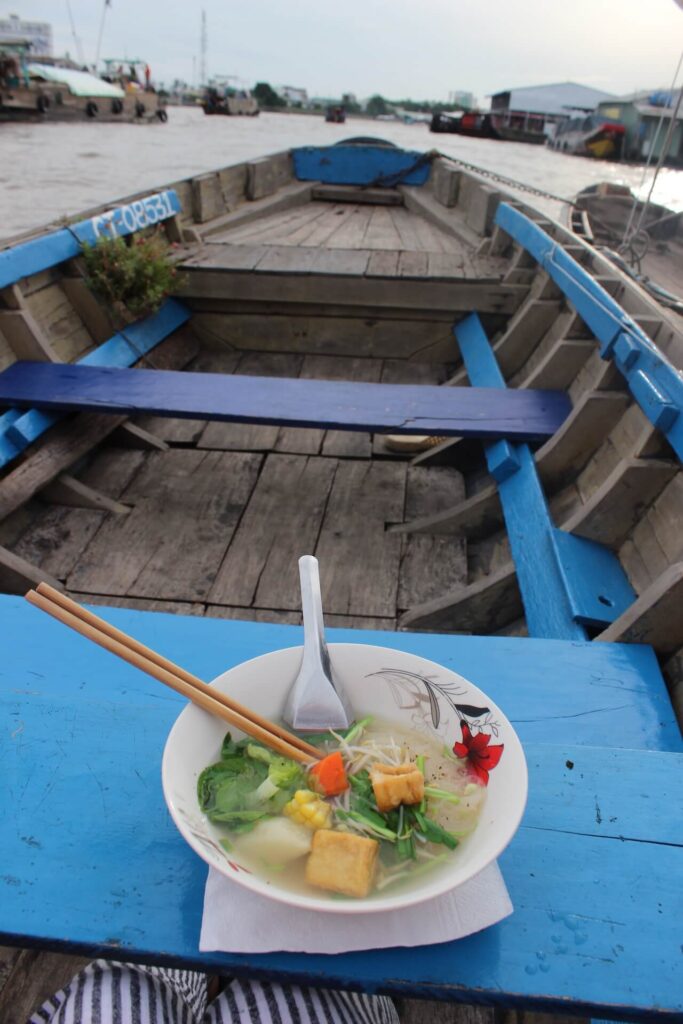
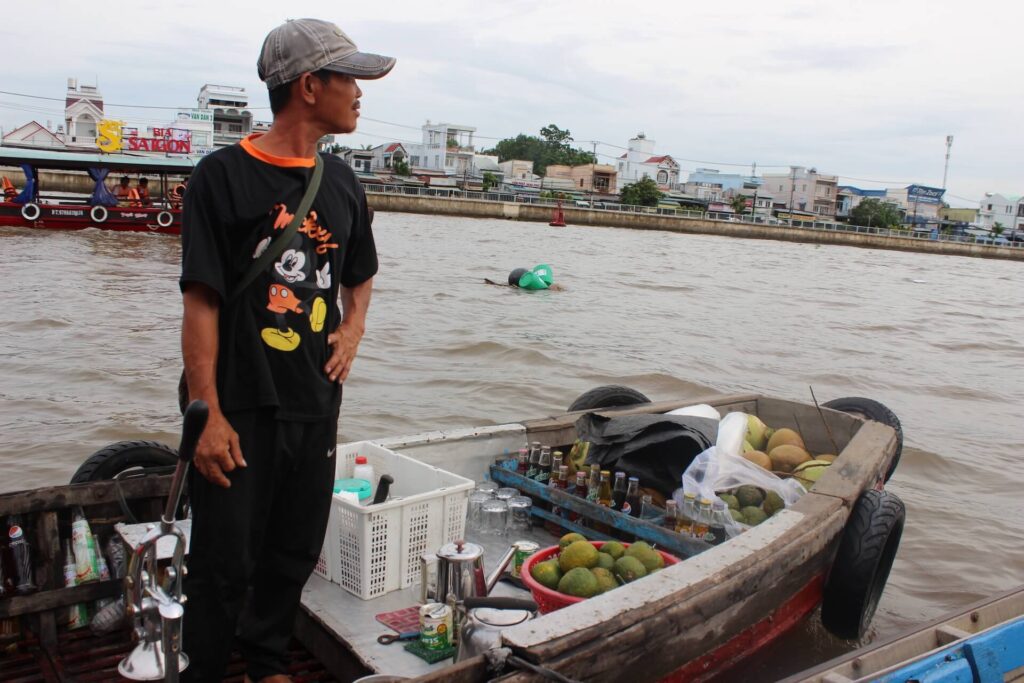
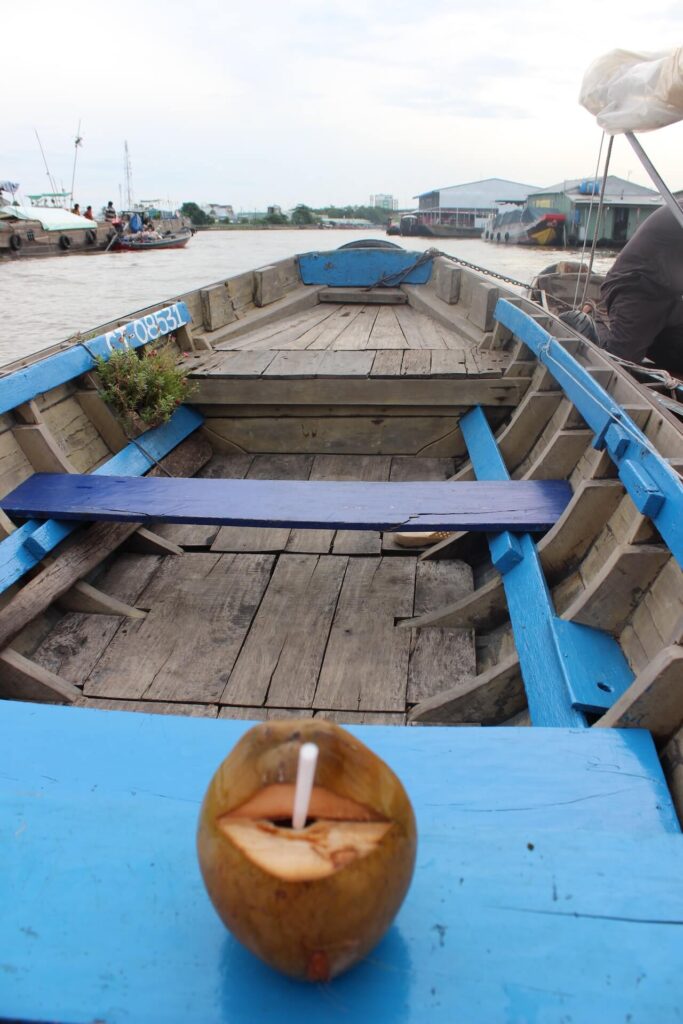
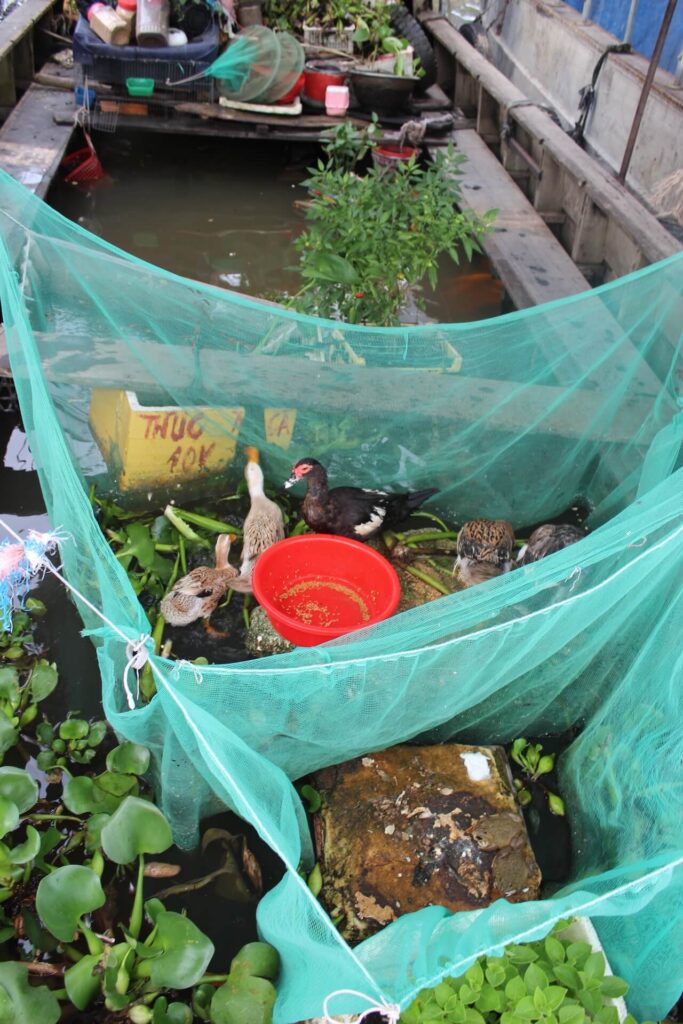
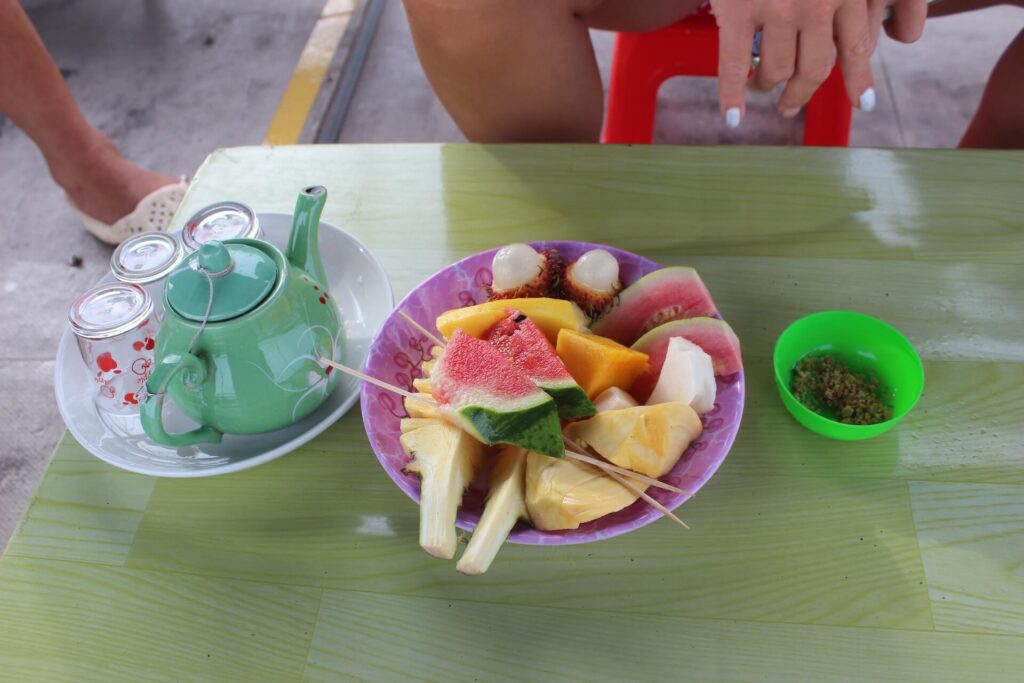
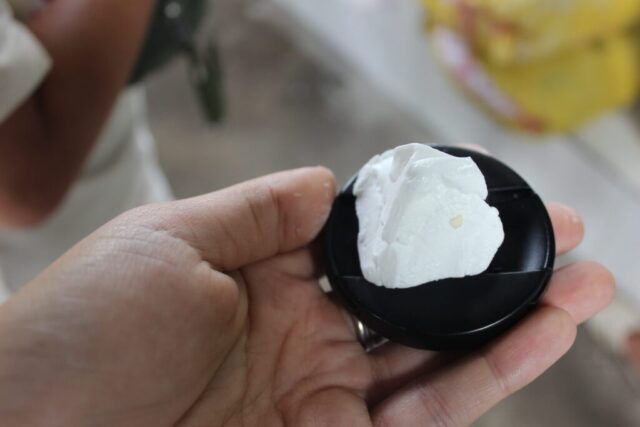
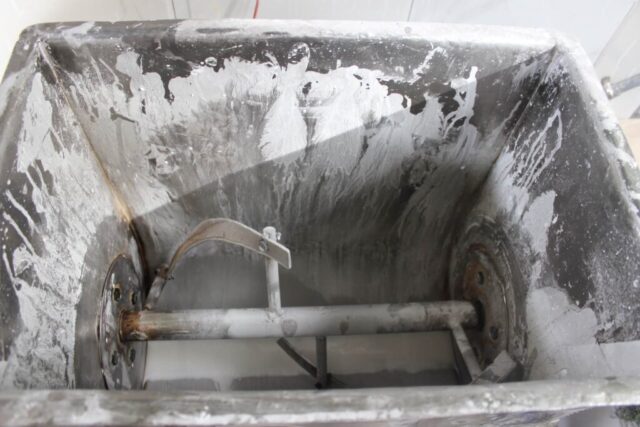
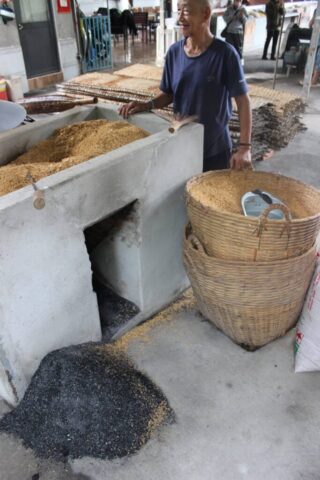
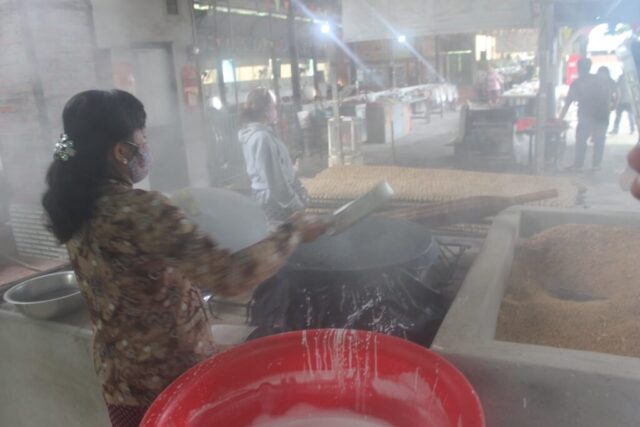
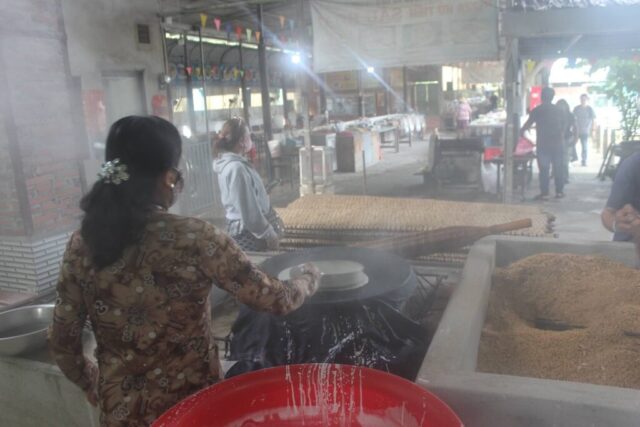
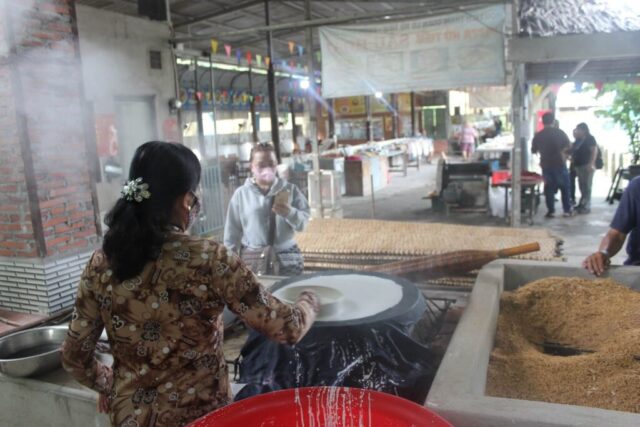
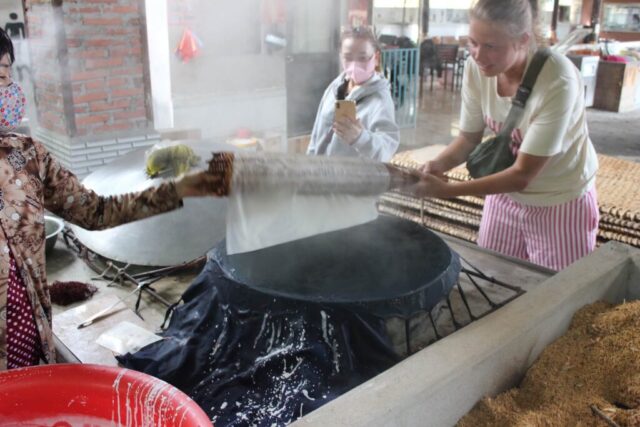
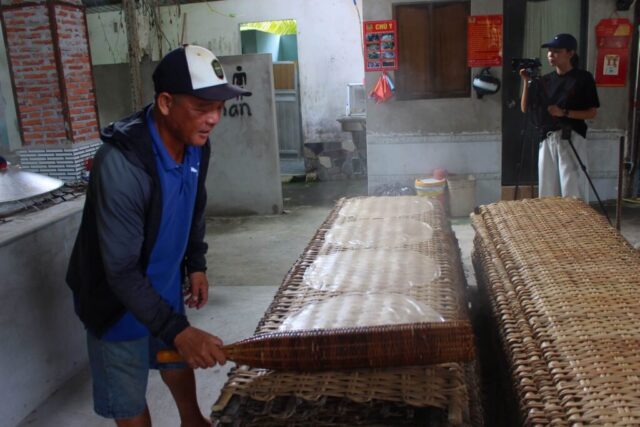
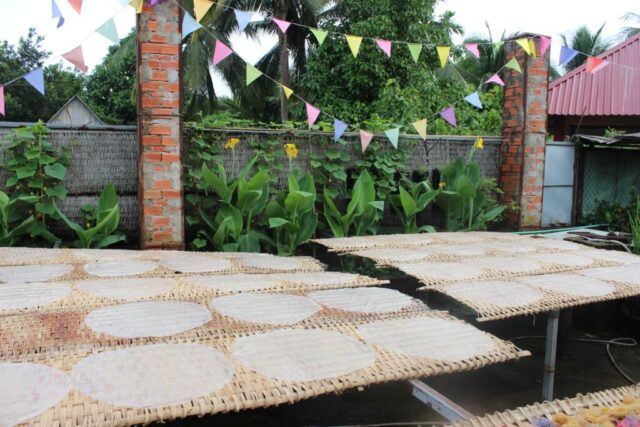
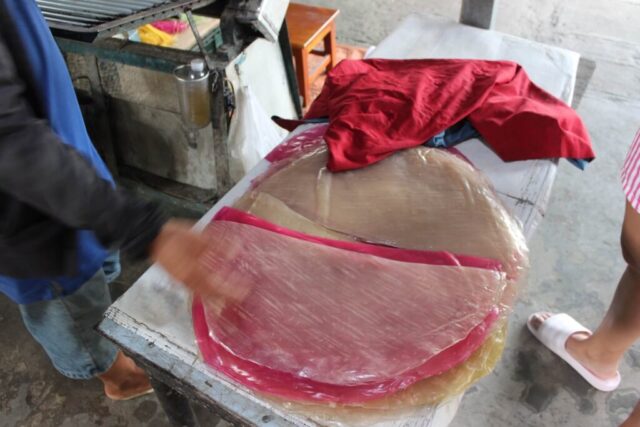
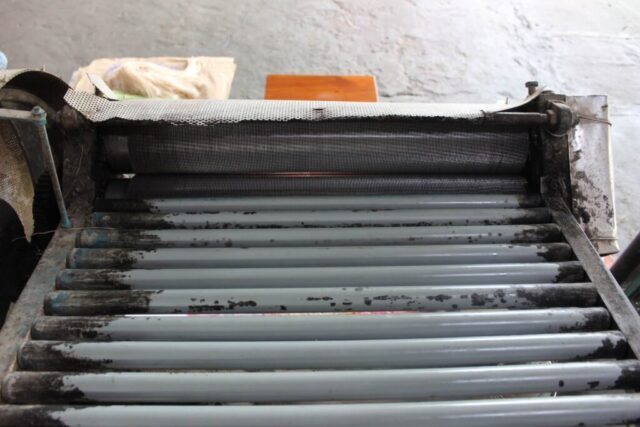
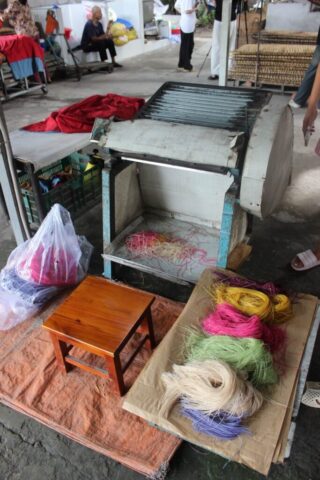
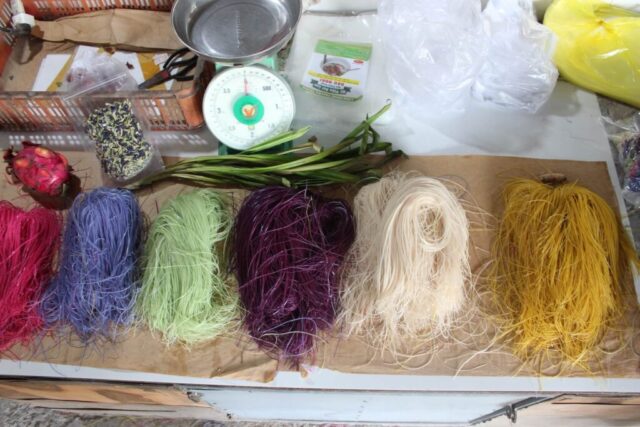
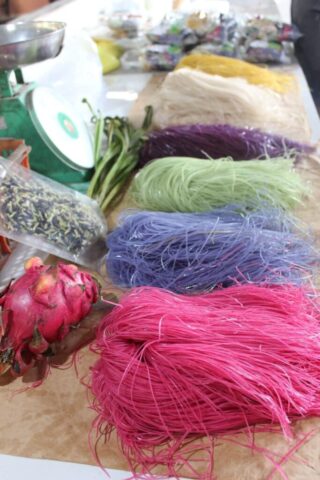
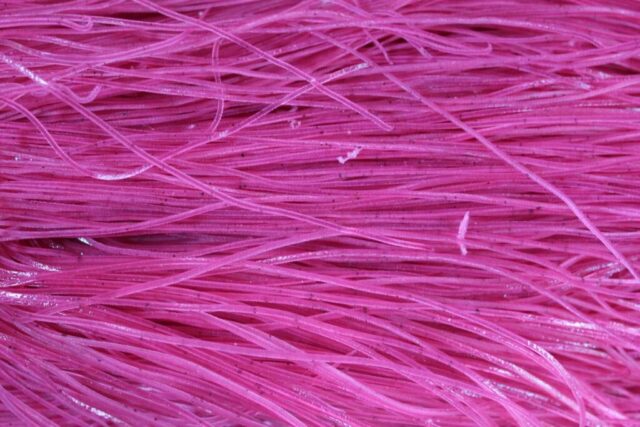
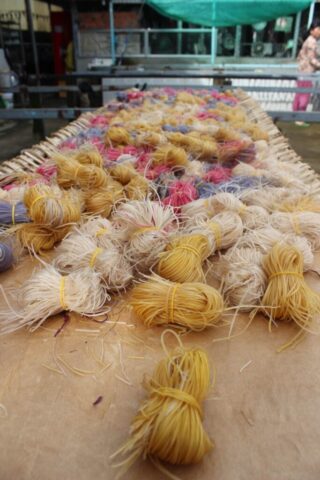
Leave a Reply